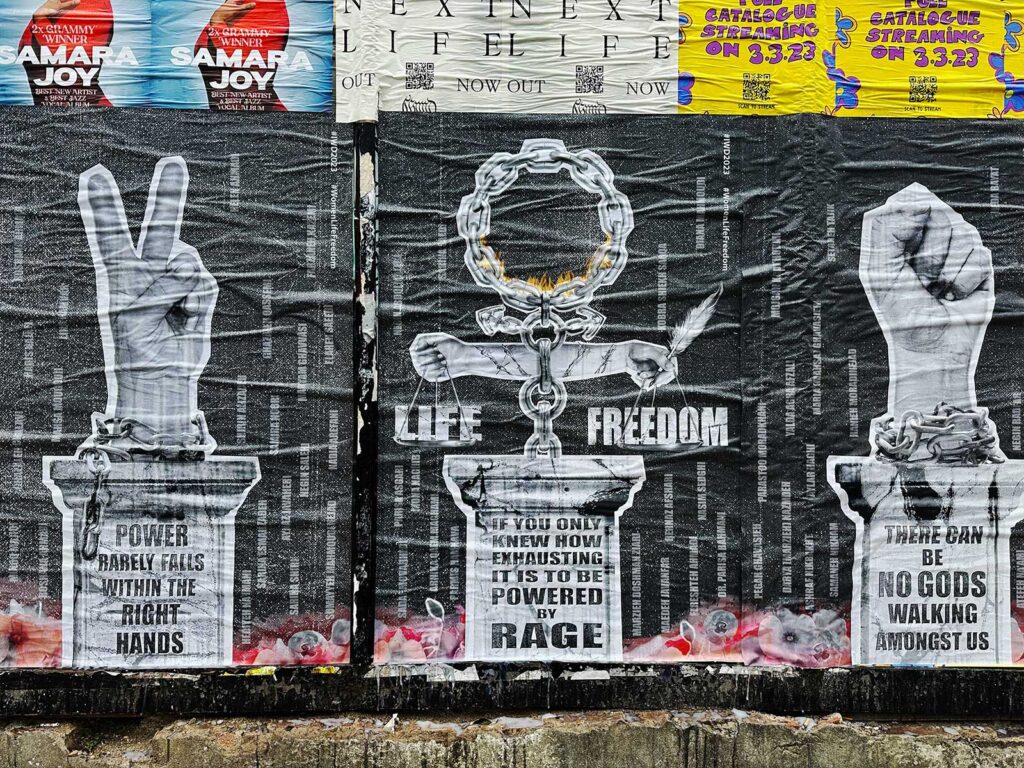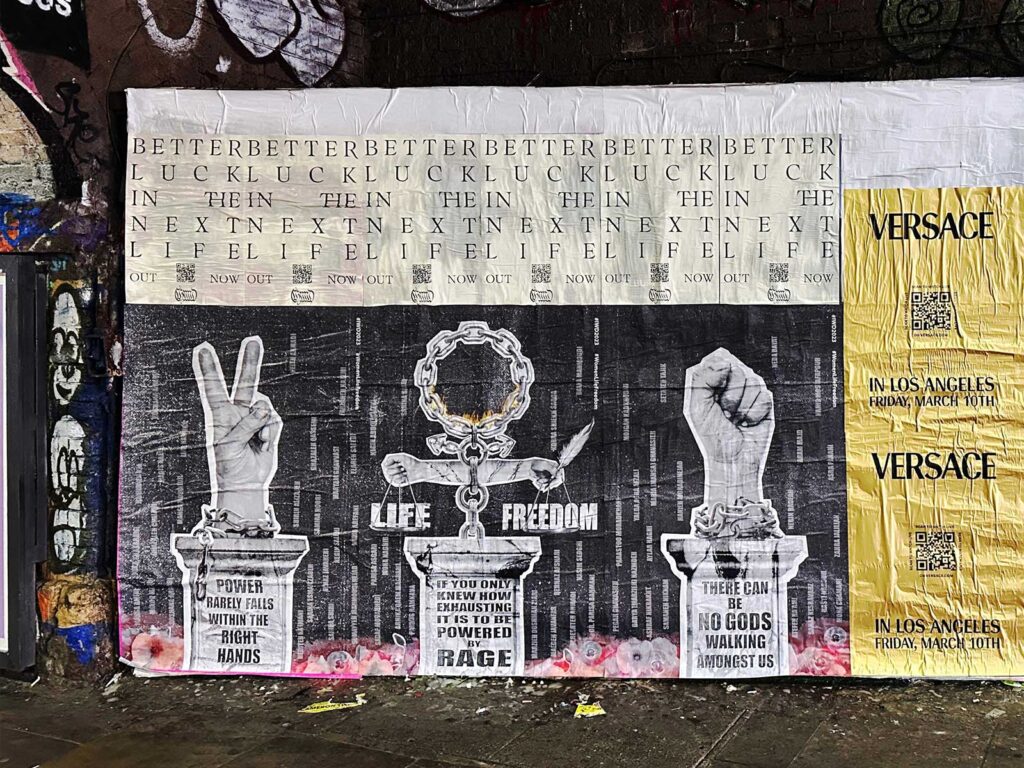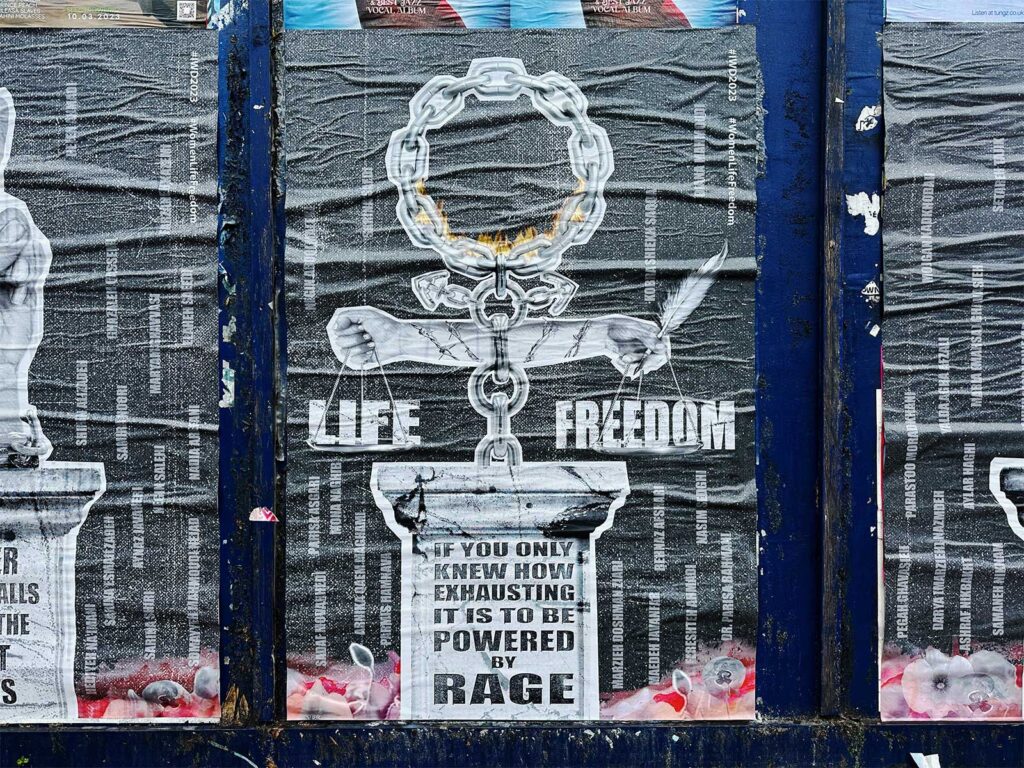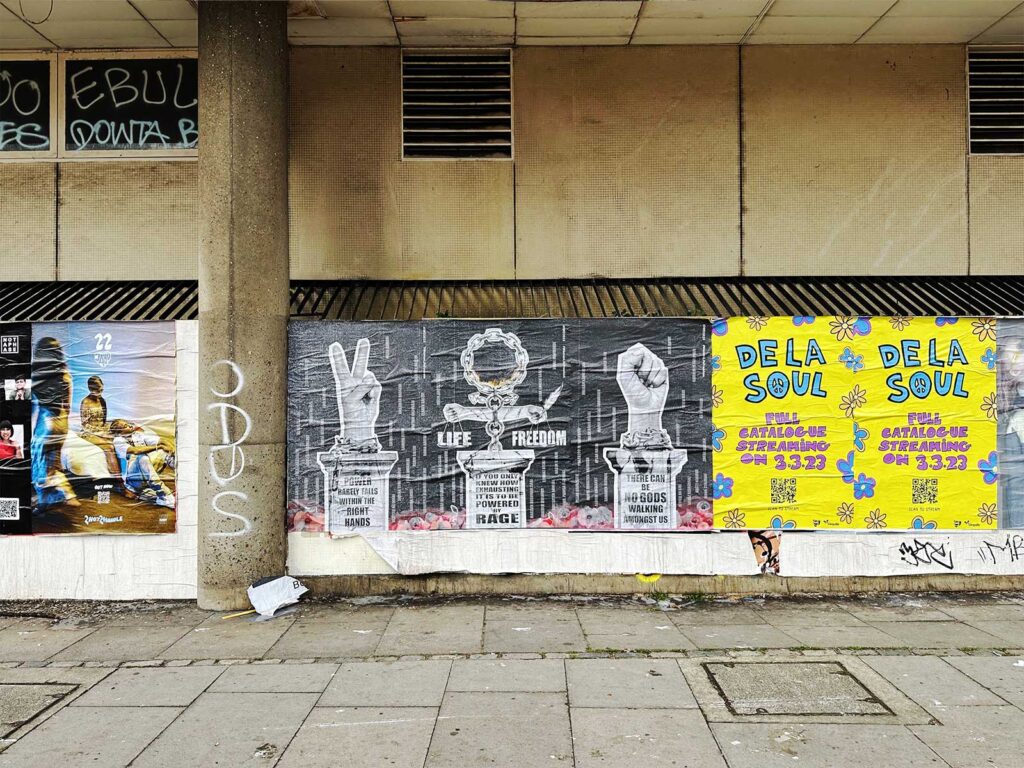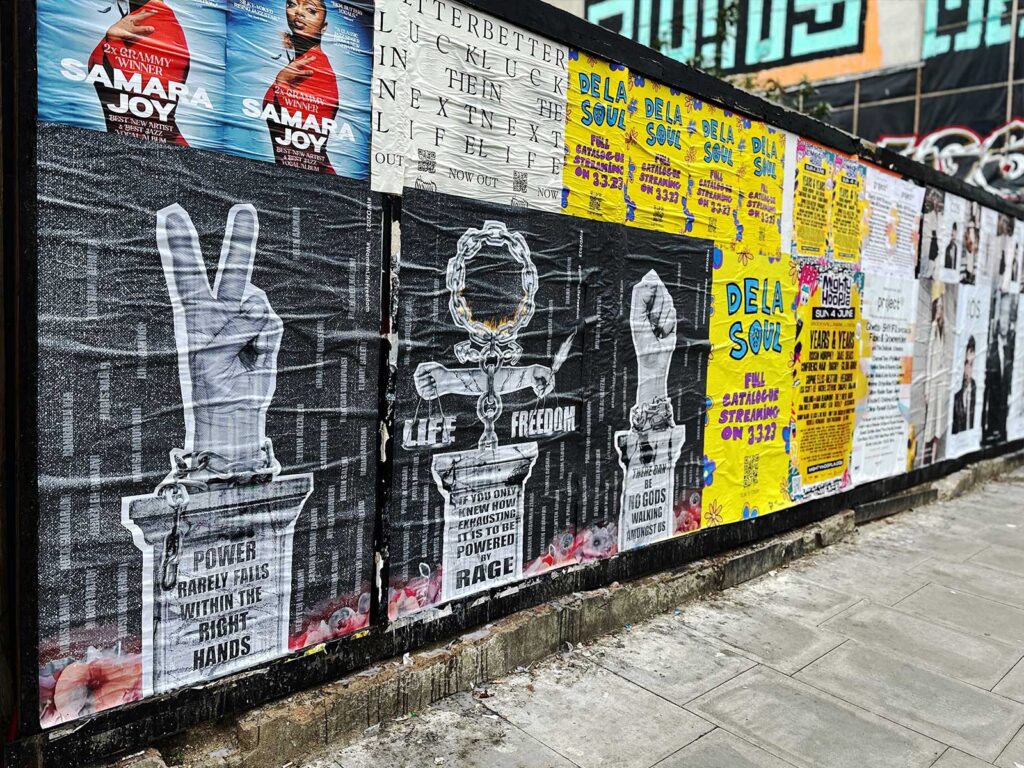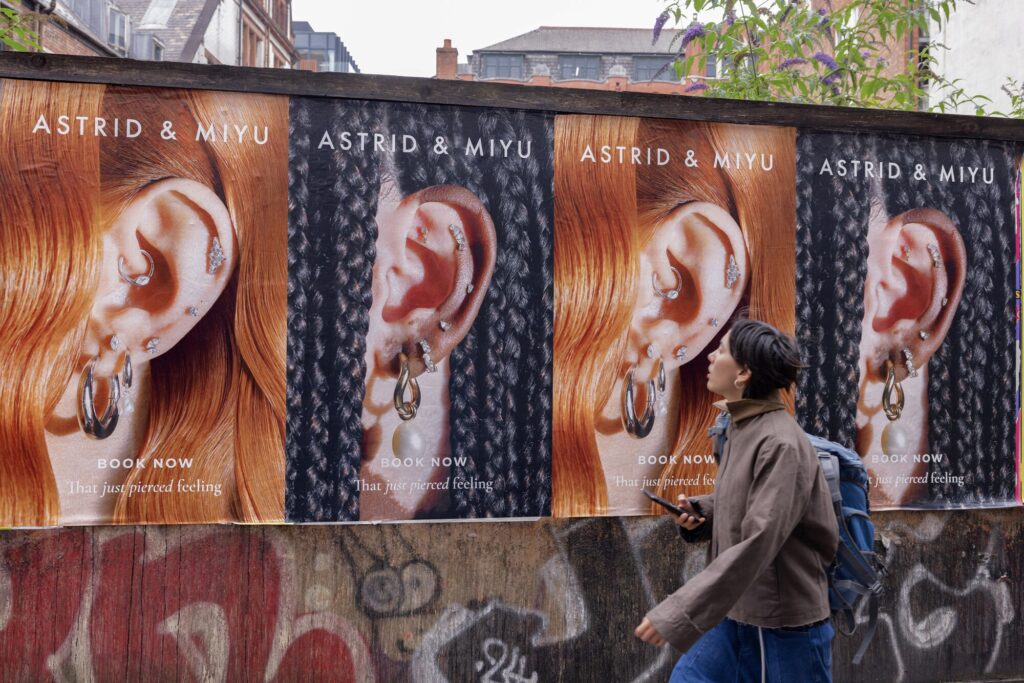
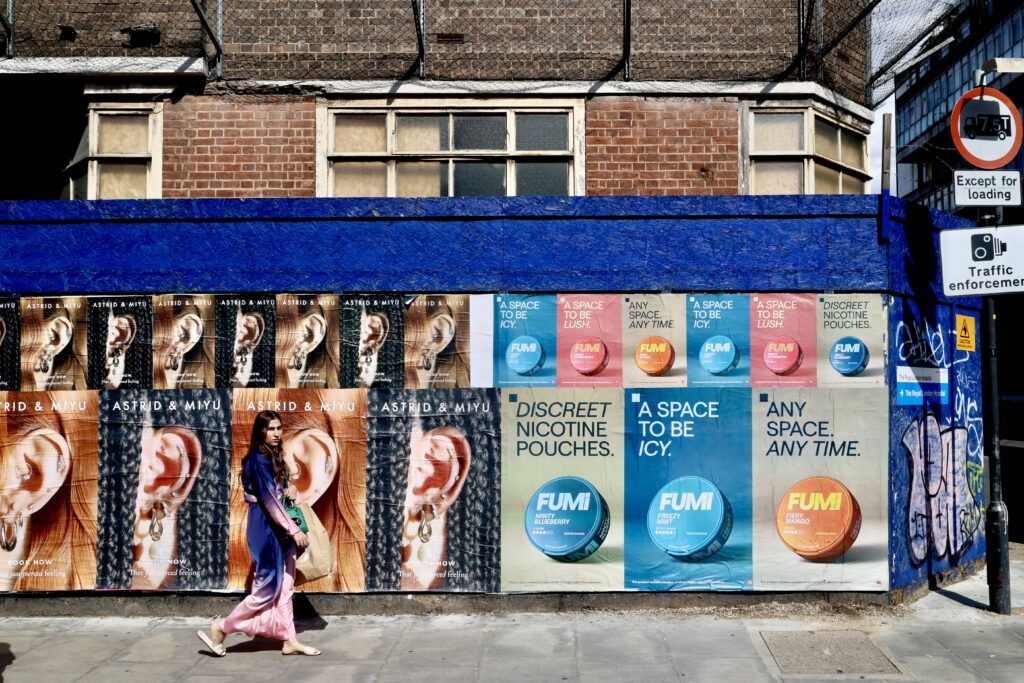
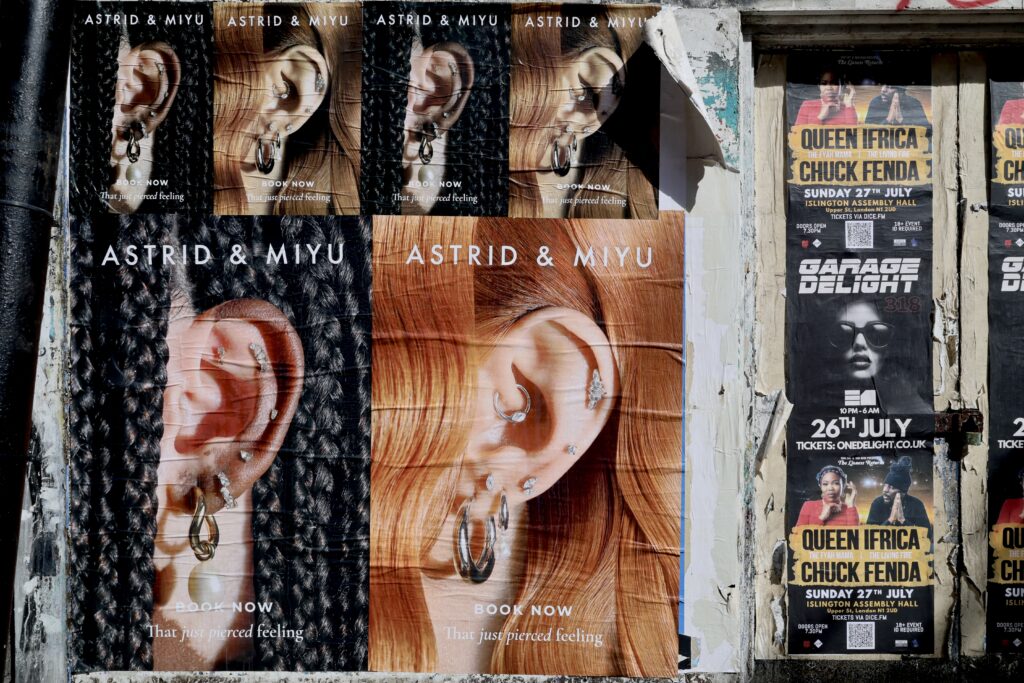
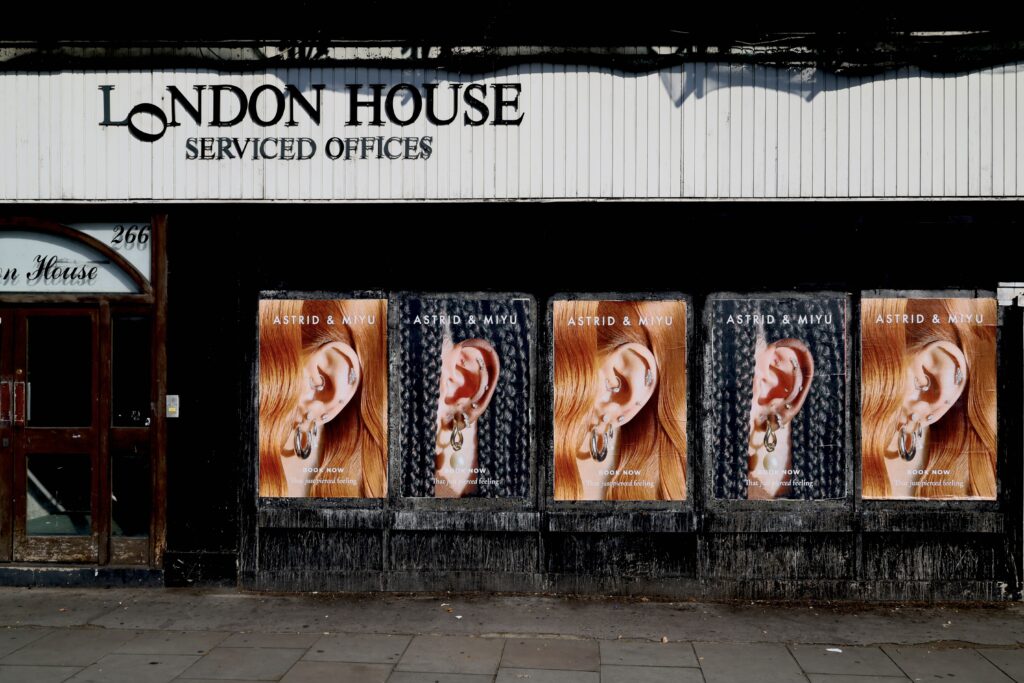
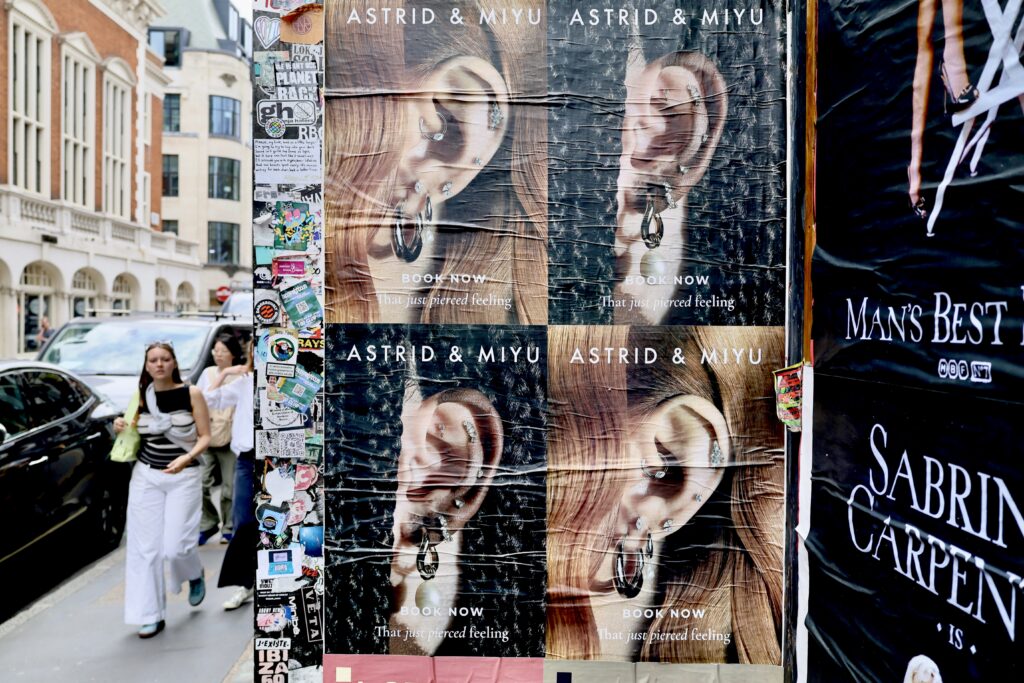
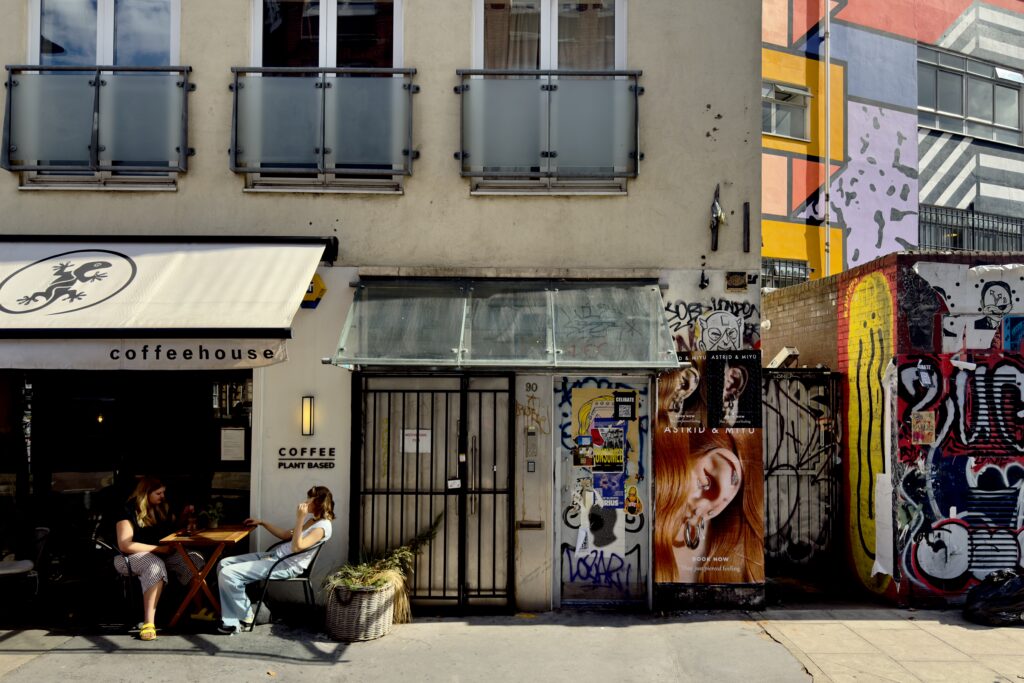
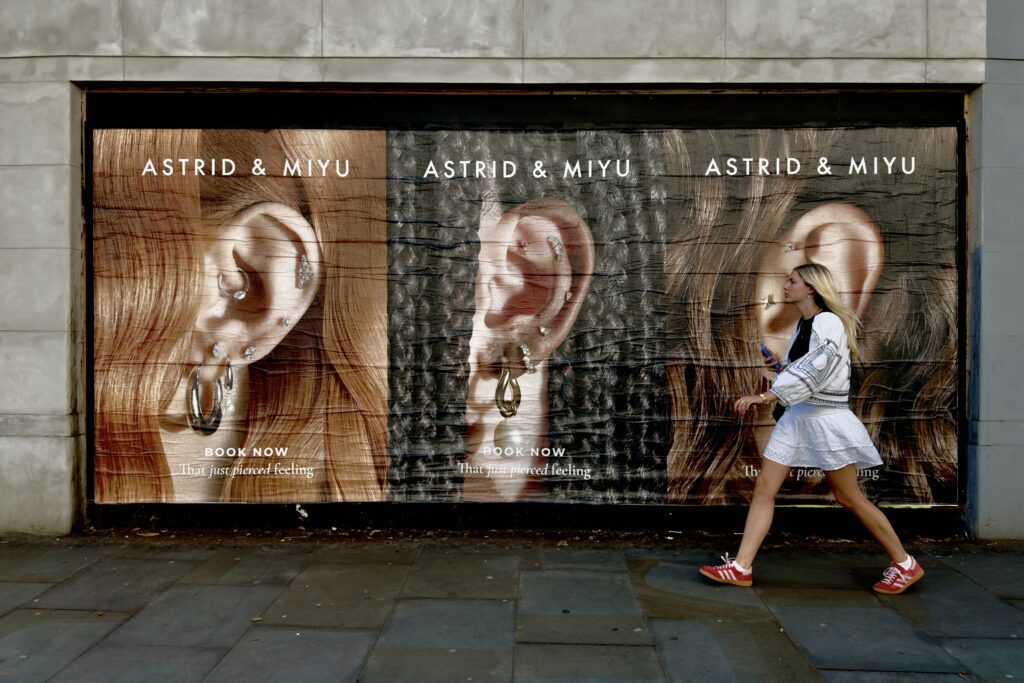
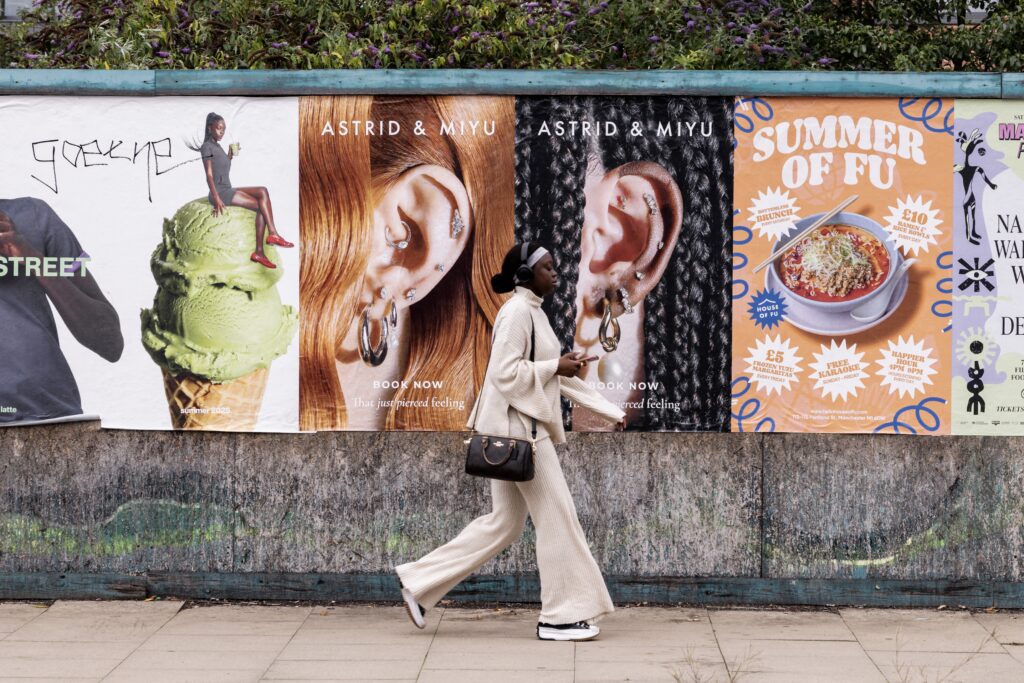








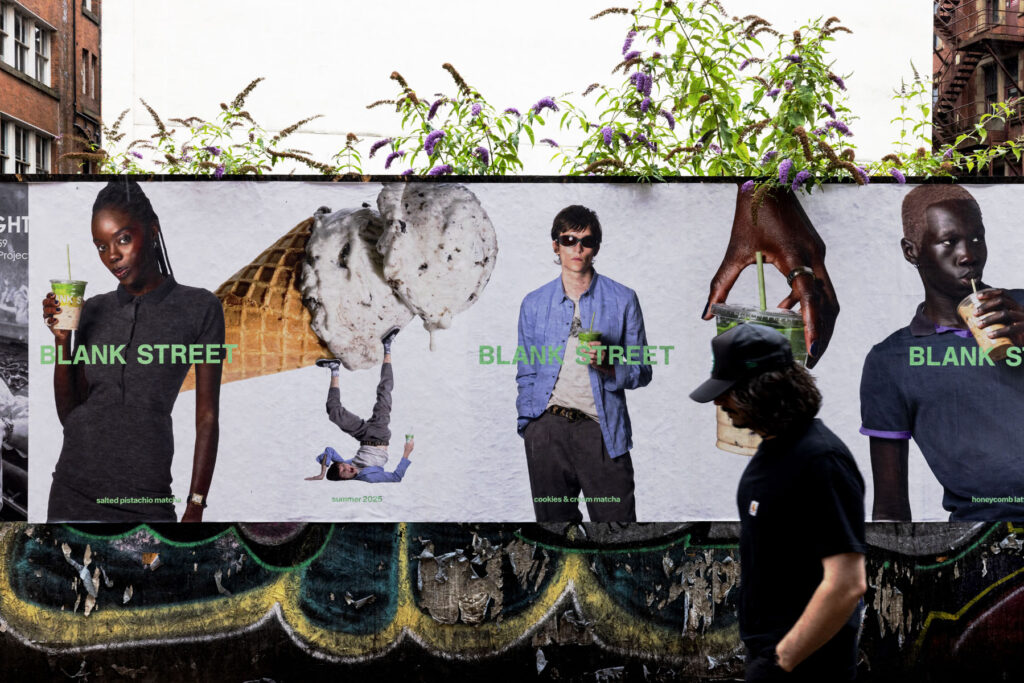

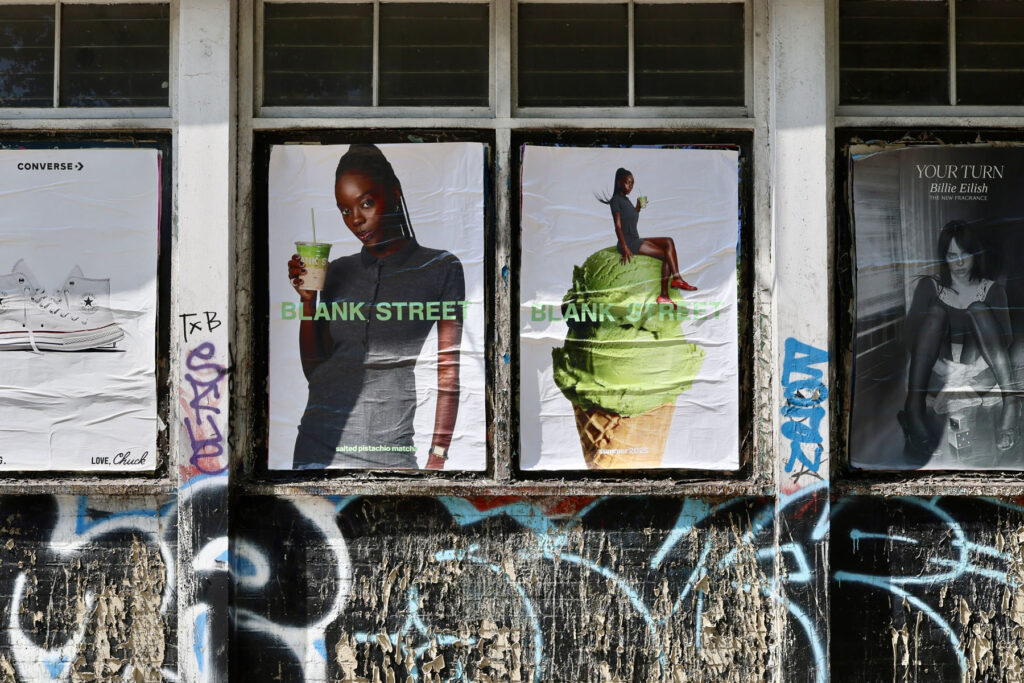
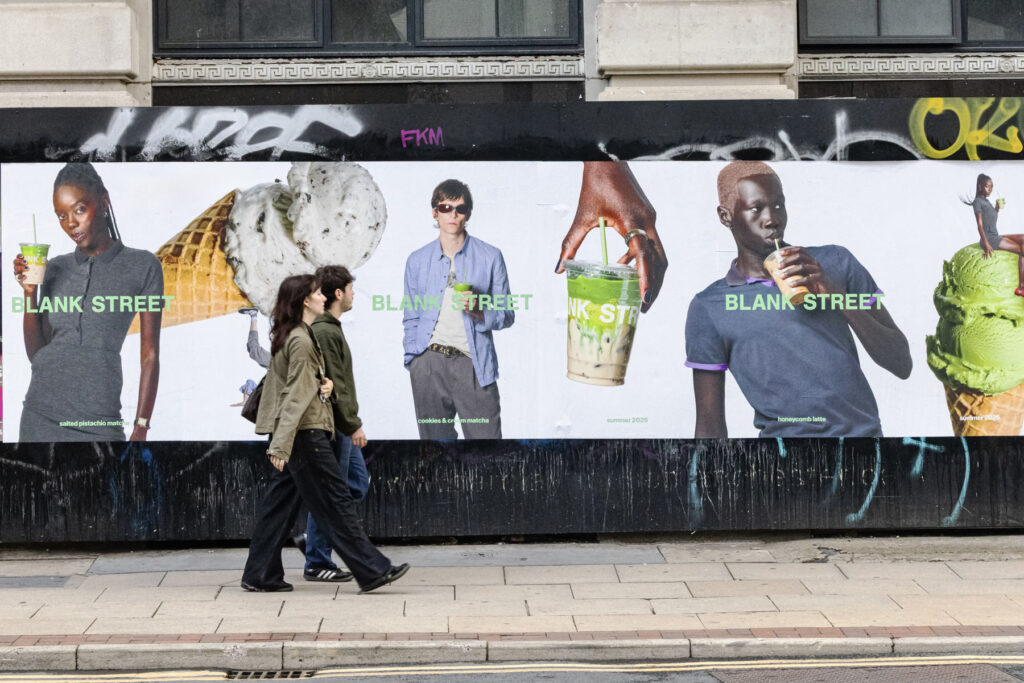
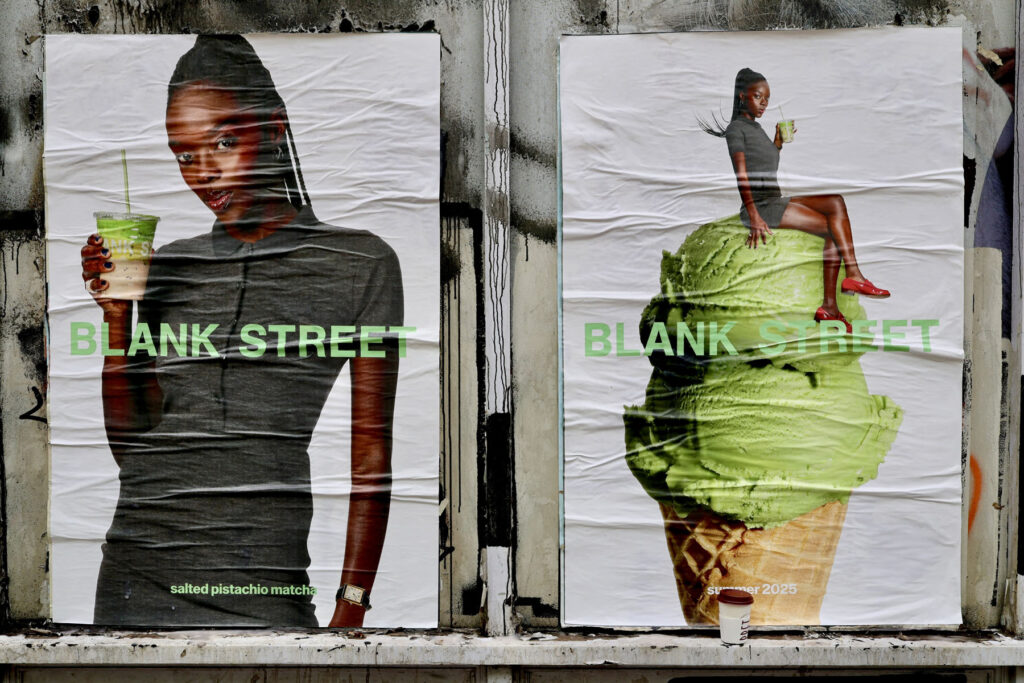
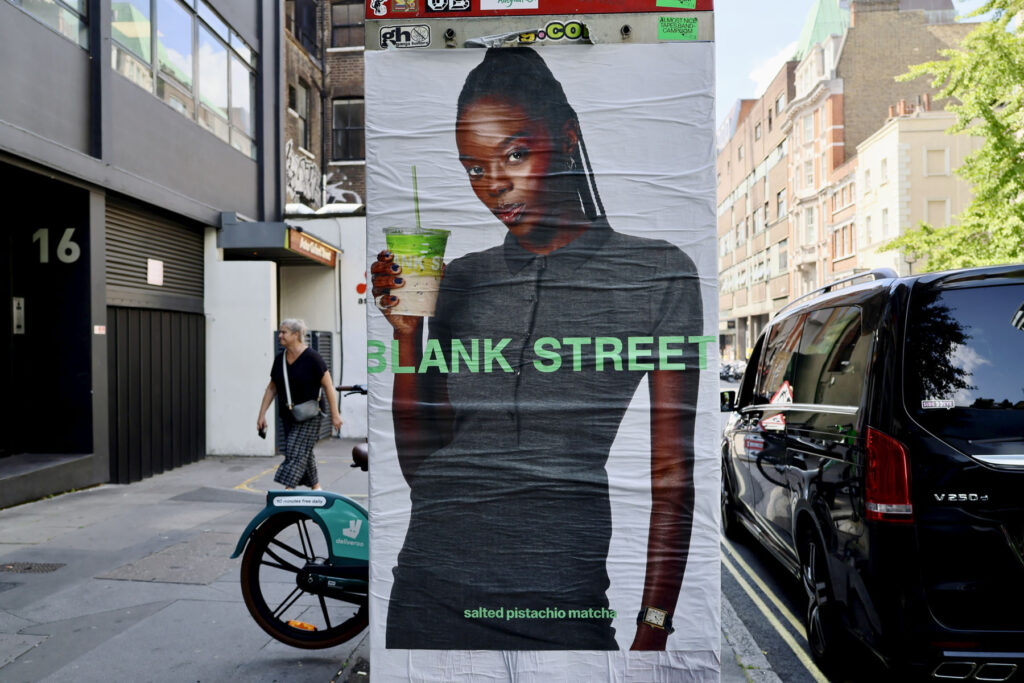
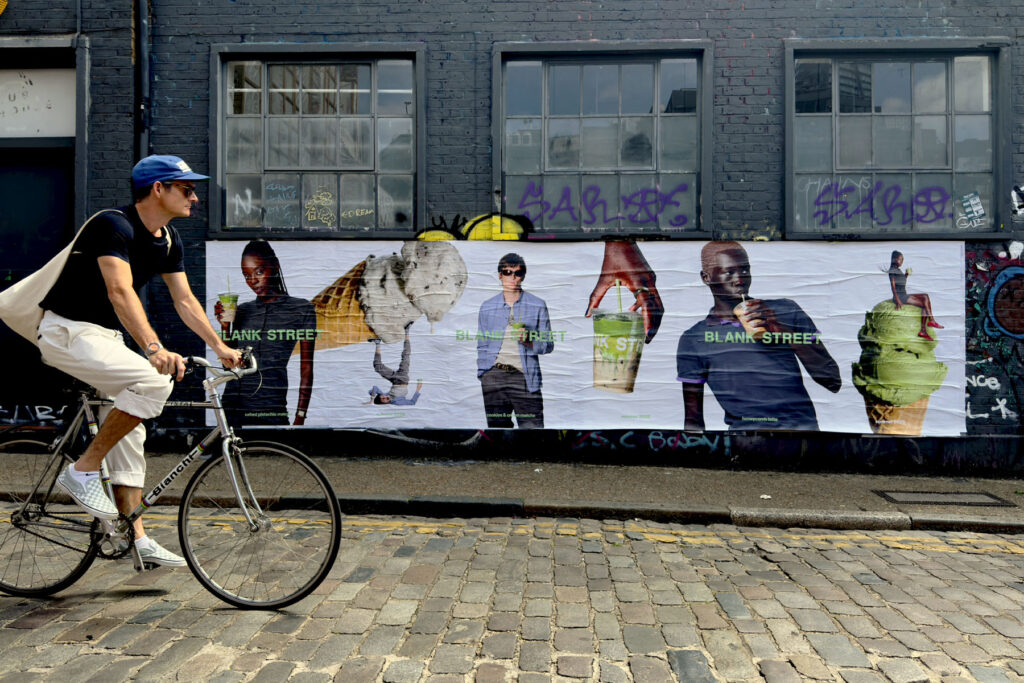
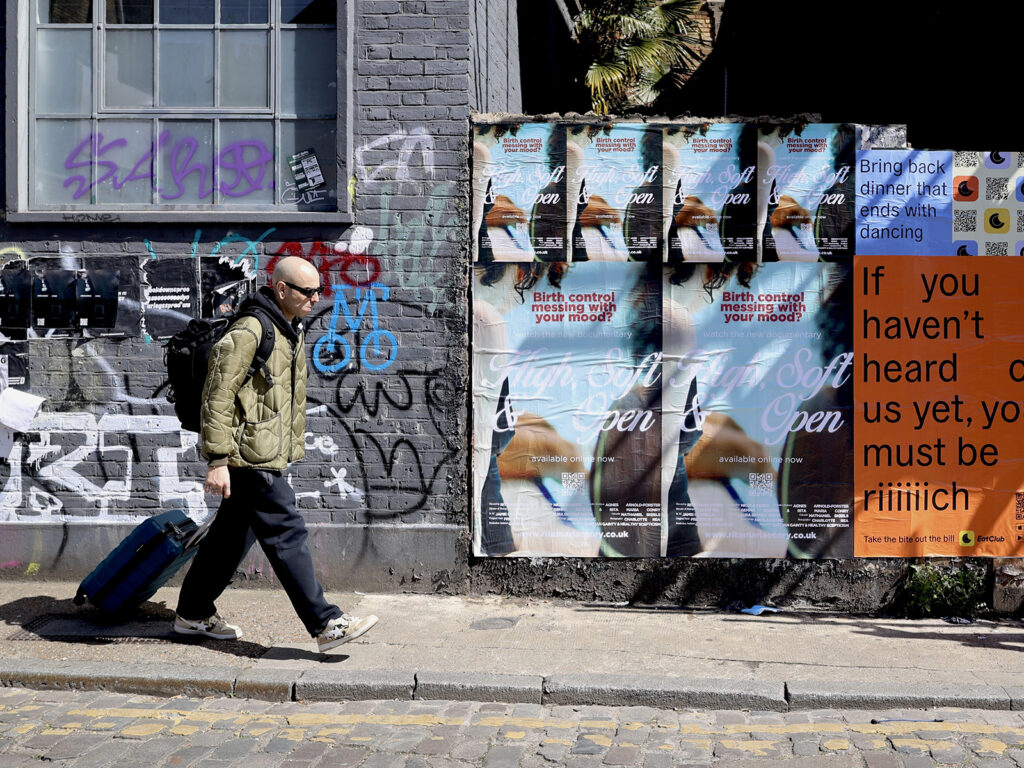
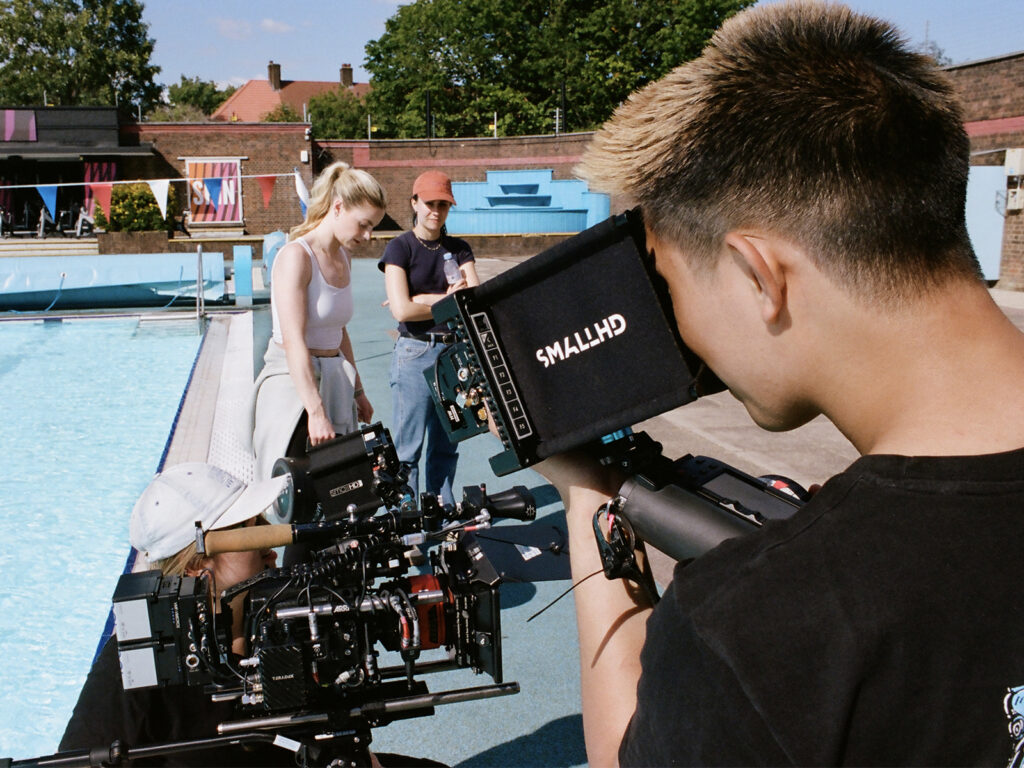

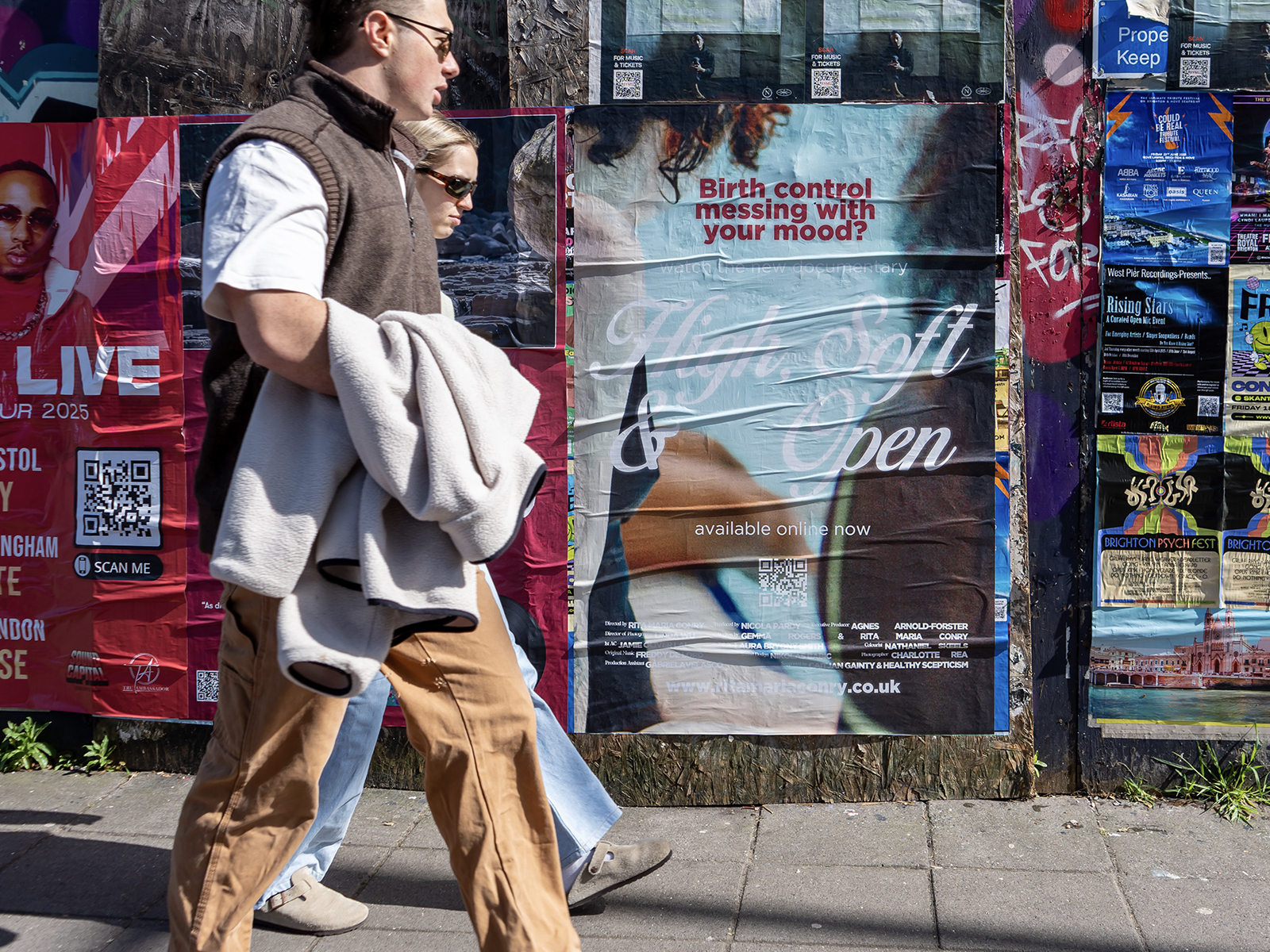
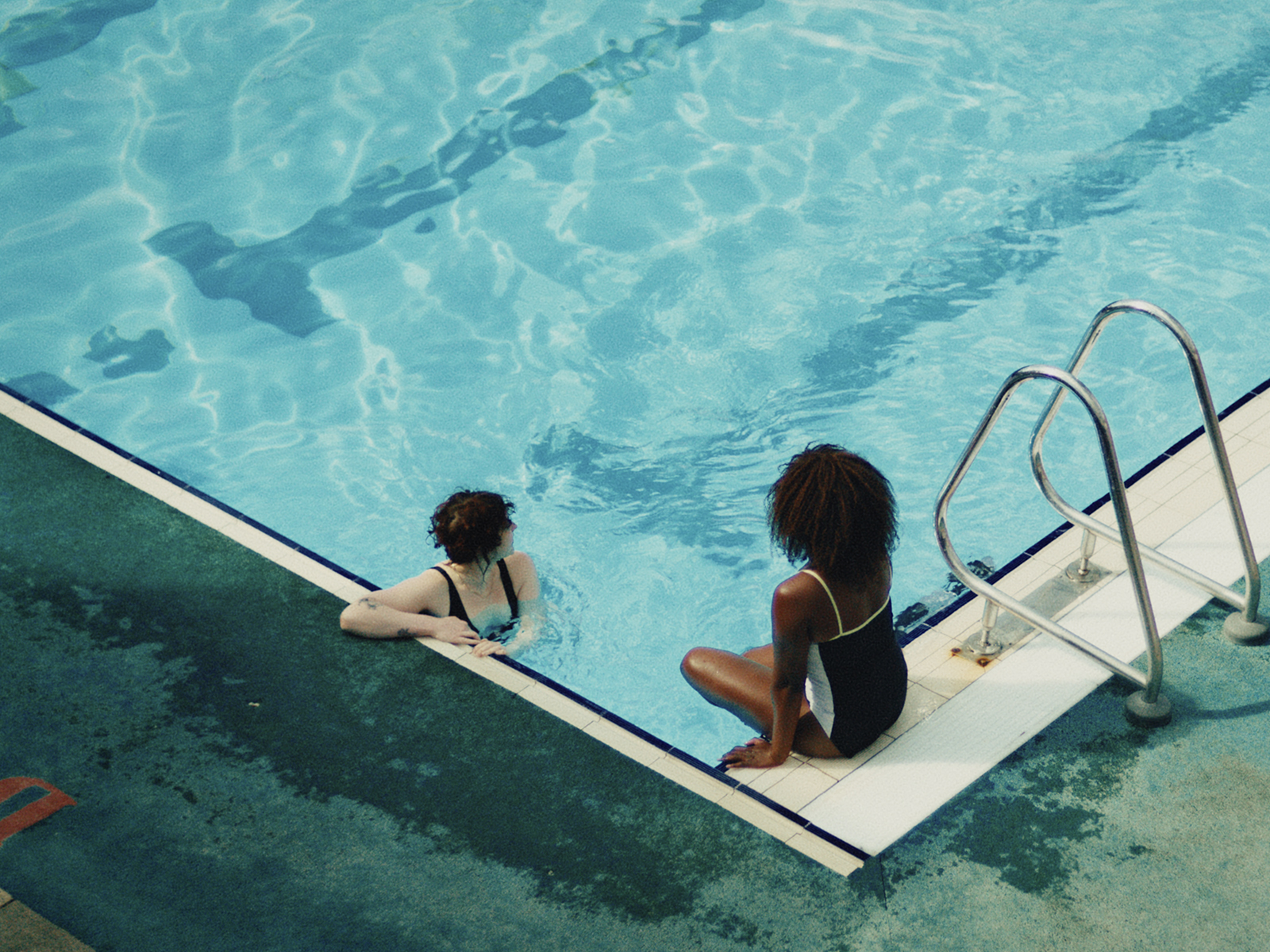
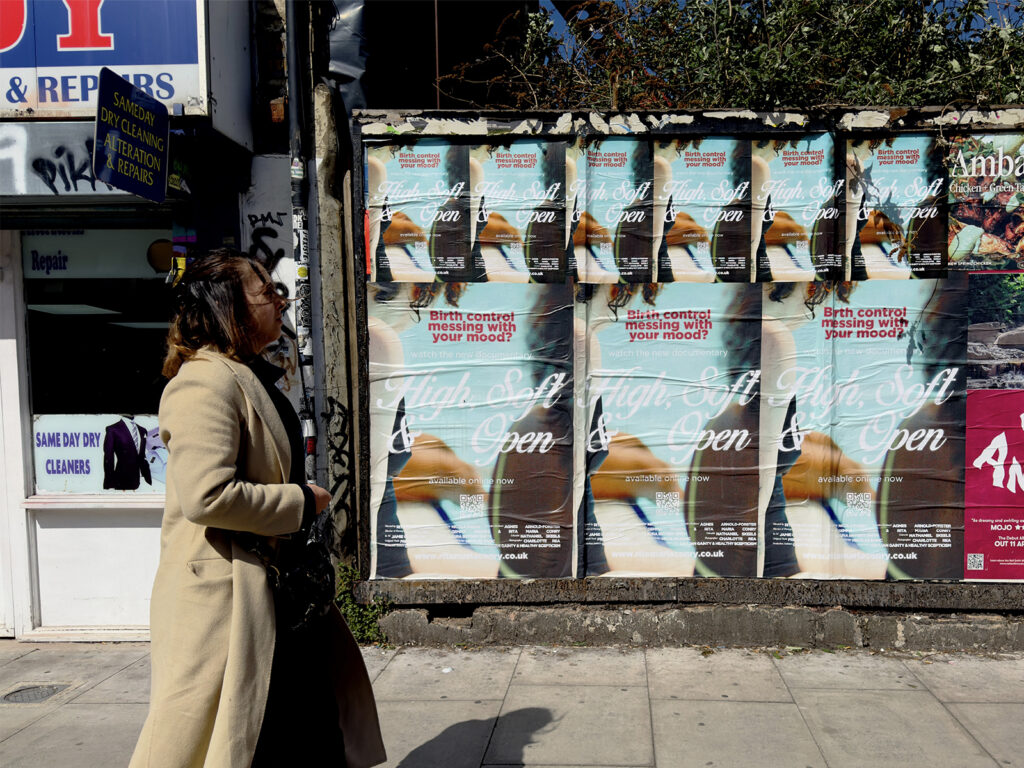
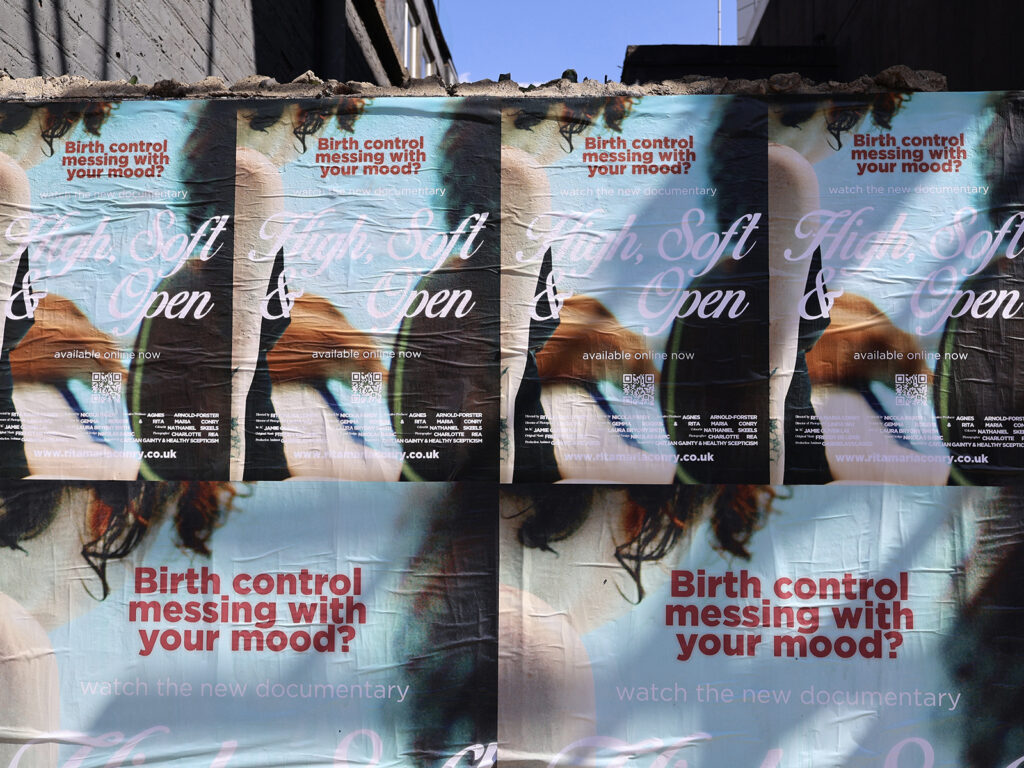
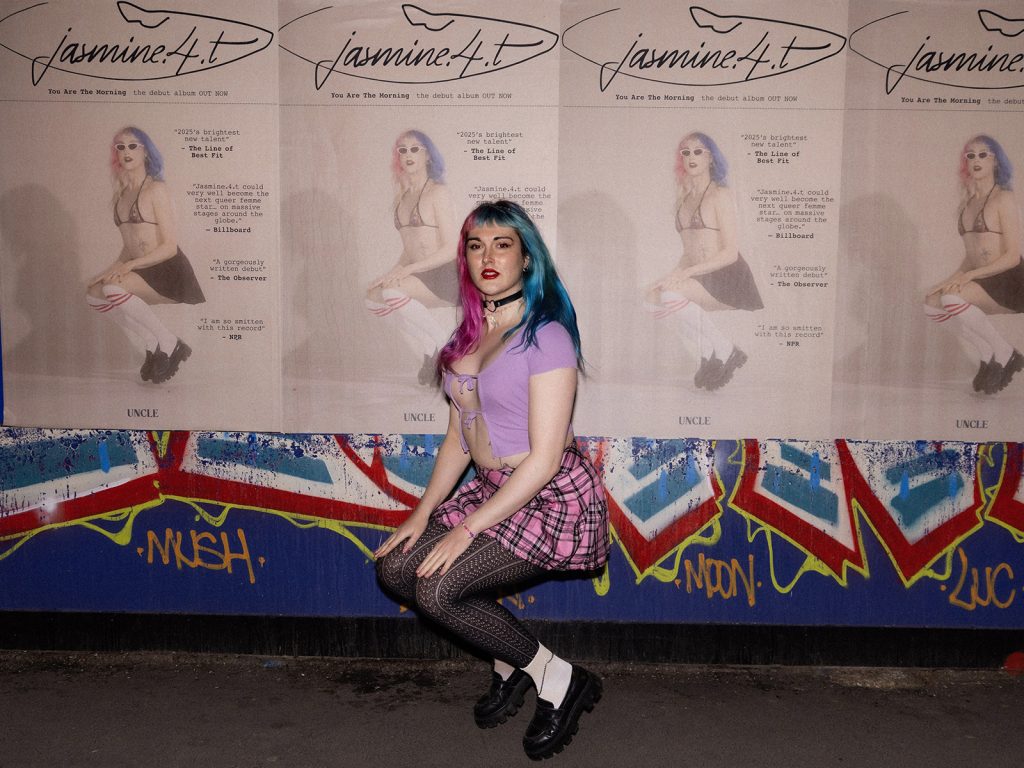
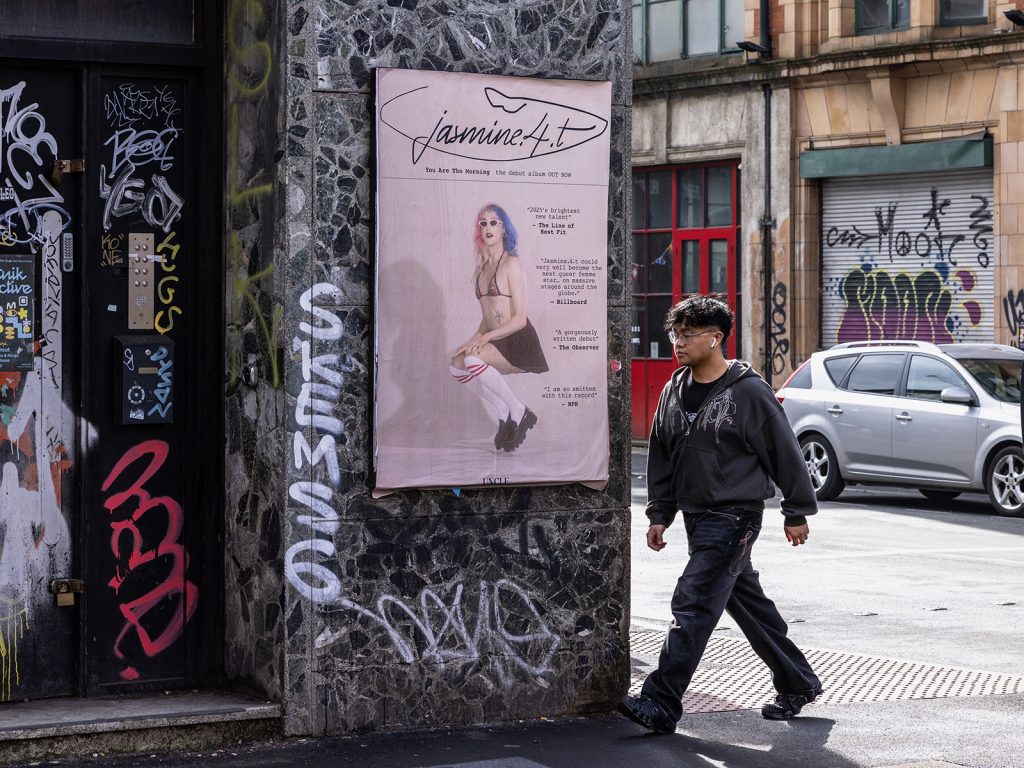
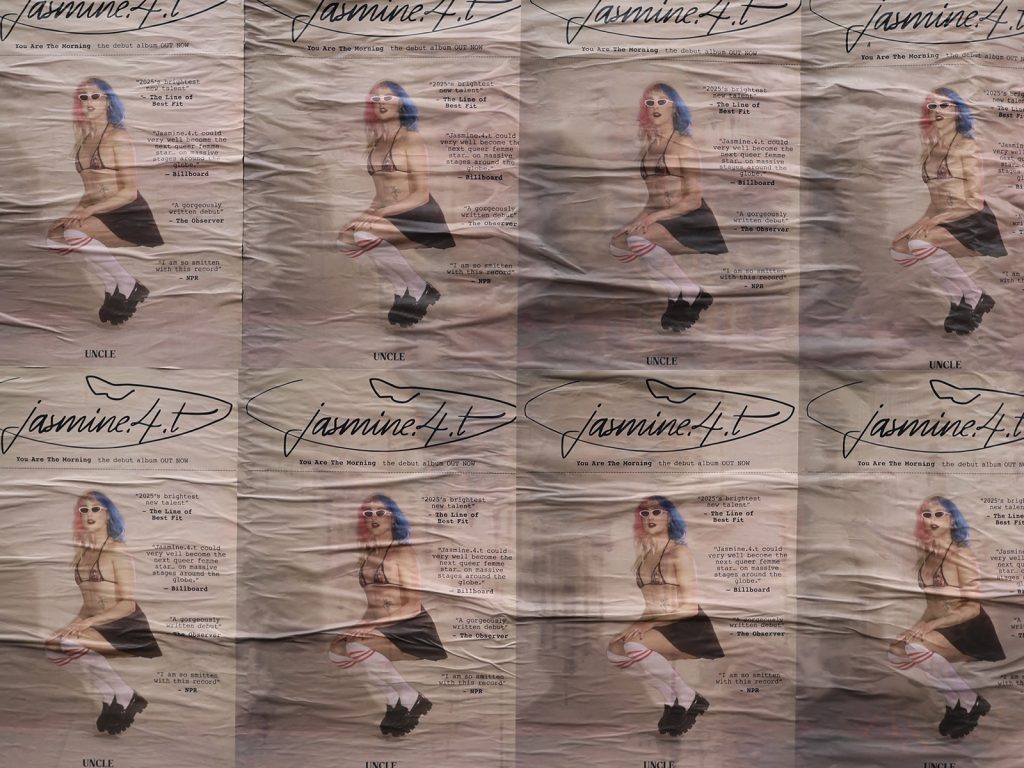
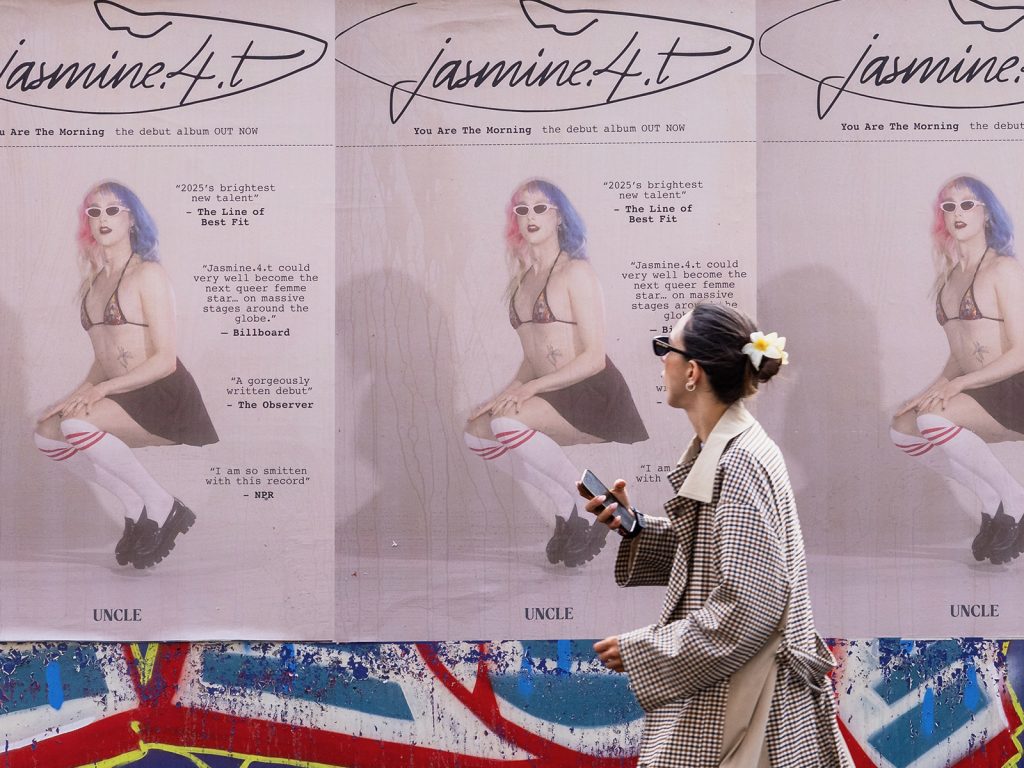
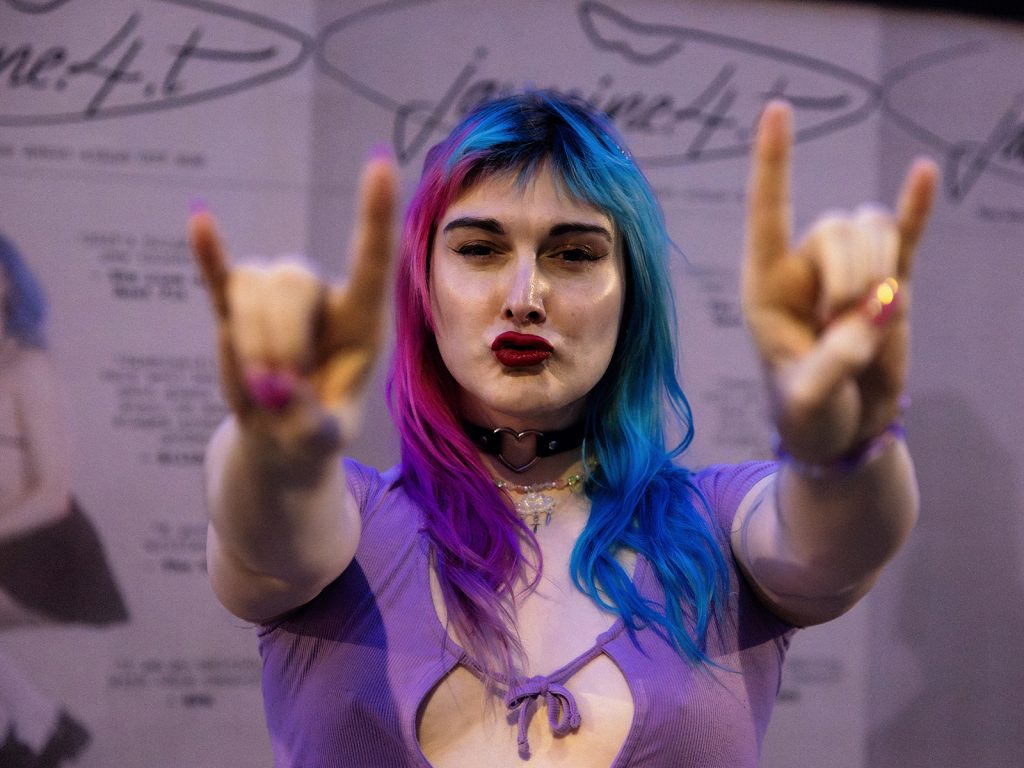
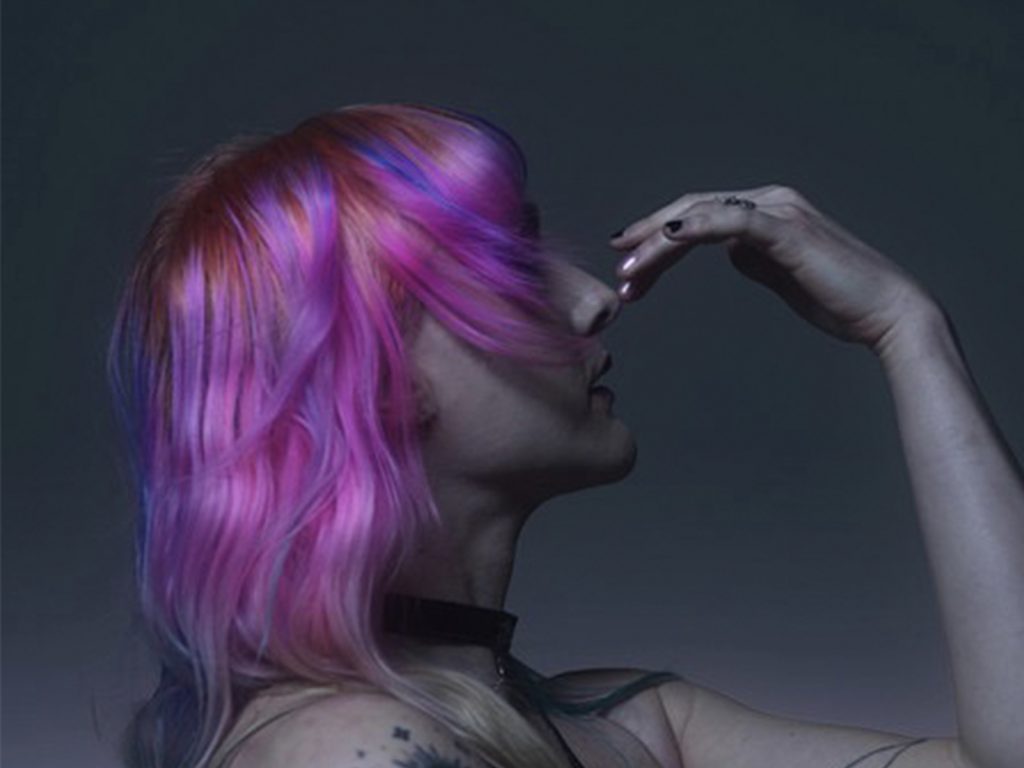
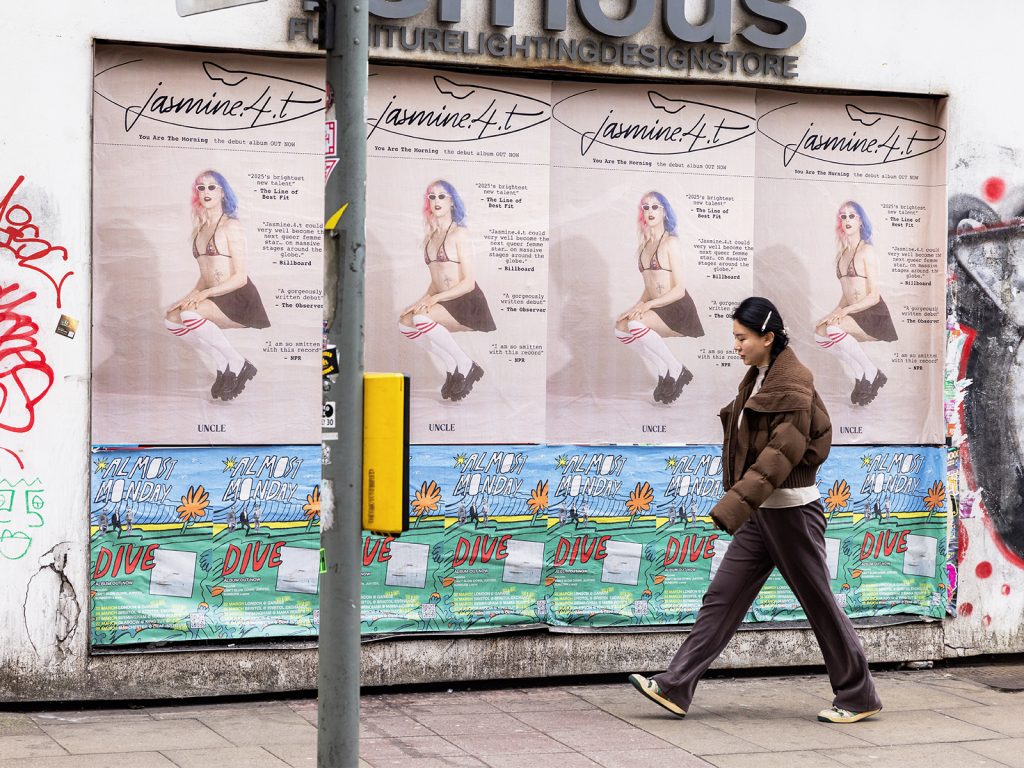
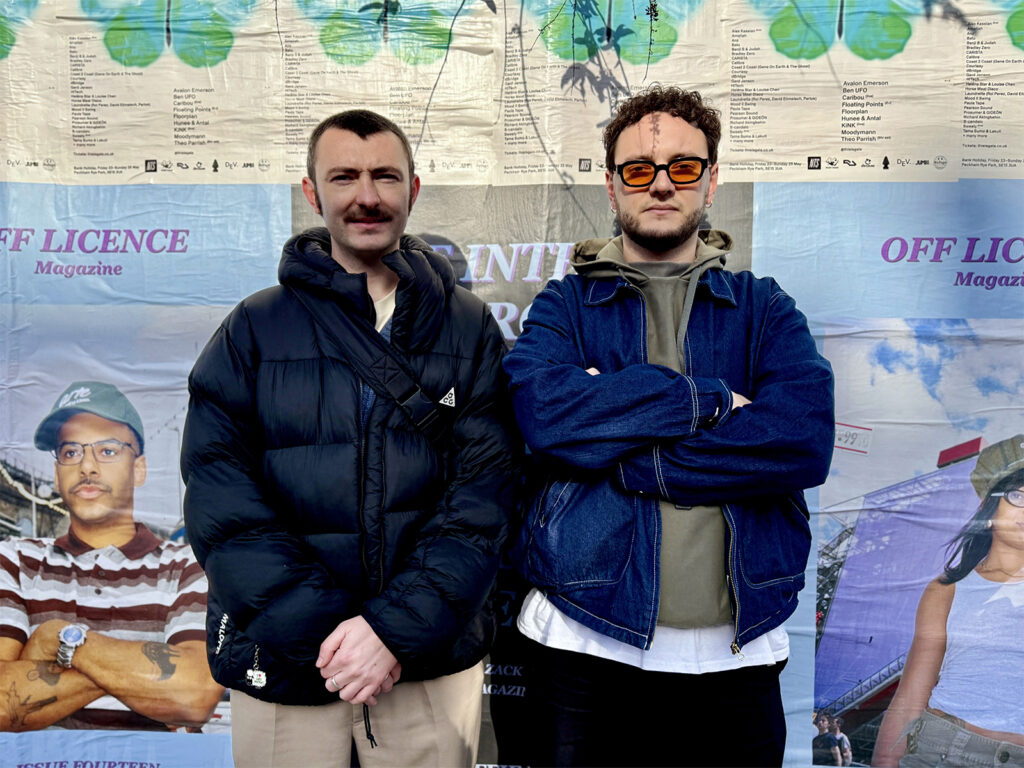
Off License Magazine has built its name by championing independent music, underground culture, and the creatives pushing boundaries. With Issue Fourteen, the mag turns its focus to something inescapable – the internet. From the rise of social media to the dominance of streaming platforms, the digital world has reshaped how artists create, connect, and survive. This issue isn’t just about the online age – it’s about navigating it. The highs, the lows, and everything in between.
To take the conversation beyond the page, Off License has teamed up with UNCLE for a flyposting campaign, bringing the cover art and standout quotes from the issue to Brighton, Bristol, London, and Manchester – making sure the dialogue lands where it matters most.
At its core, Off License has always been about giving independent voices the space they deserve. Whether it’s through carefully selected cover stars or the stories inside, the magazine stays committed to quality over clickbait. In a landscape where digital noise often drowns out authenticity, Off License keeps its focus sharp – real voices, real stories, and an unfiltered look at the culture that matters.
To understand how Issue Fourteen came together and why the internet was an inevitable theme, we spoke to Editor-in-Chief Greg Stanley about the magazine’s evolving vision, the challenges of the digital age, and what the future holds.
WHAT INSPIRED YOU TO FOCUS ON ‘THE INTERNET’ AS THE THEME FOR ISSUE FOURTEEN?
It’s hard to pinpoint one specific thing that inspired us to focus on The Internet as the theme for Issue 14. It had been sitting on our Google Doc of good ideas for a while, and I think, to some extent, it grew out of frustration—at least for me as editor-in-chief. While we always encourage everyone involved in the magazine to interpret the theme in their own way, my perspective on it was probably shaped by a sense of social media burnout.
In the six years we’ve been running Offie Mag, the social media landscape has changed drastically. The shift in what kind of content performs well directly impacts us—not just in terms of reach, but in how many people see the magazine and the artists we’re trying to platform. We built a lot of our audience and sales through still imagery, particularly film photography, which used to be a really effective way to grow. But as things moved toward short-form video, adapting to that shift became a challenge. So, in some ways, the decision to focus on The Internet was driven by a mix of inspiration and frustration—often a great motivator for writing.
That being said, the issue isn’t just about the negatives. We wanted to explore both sides. If it weren’t for the internet, Offie Mag wouldn’t exist, nor would the community of readers we’ve built. Many of the musicians and artists we’ve featured in this issue share that same dual perspective—the internet has brought opportunities but also new struggles.
I also have a background in journalism, and while a lot of what I studied still holds relevance, some of it already feels outdated. When I was at university, we weren’t preparing for this ultra-short-form video era we’re in now. The media landscape has shifted so rapidly that traditional teachings struggle to keep up.
Ultimately, The Internet felt like the right theme at the right time because it reflects so much of what we, and the artists we platform, are experiencing—both the highs and the lows. Like most things, the online world mirrors the offline one, bringing all of its evils and all of its good. The theme came together as an amalgamation—or maybe more fittingly, an algorithm—of all of the above.
CAN YOU SHARE THE STORY BEHIND SELECTING THE COVER ARTISTS FOR THIS ISSUE?
The way we pick cover stars is pretty simple—we think about artists we love, track down a contact, and hope they’re up for it.
Liv.e was someone I’d wanted to interview for years, but we used to do all our shoots in the UK, so I was waiting for the right time. Then I listened to Past Futur.e and thought, nah, let’s just go for it. She had a small show in Paris, we had good connections there, and Lucy Cullingworth was available to shoot—so it all lined up. Given her independent approach to music, she fit The Internet theme perfectly.
With Zack Fox, my partner Fez actually suggested him after we kept watching his DJ sets on YouTube. At first, I was like, yeah, right, because he’s been on some huge magazine covers. But he really fucked with the ethos of Offie Mag, and The Internet theme felt like a good excuse to aim for an artist with a bigger platform than we usually go for. Plus, I just think his music is really interesting—his Wood Tip EP is way more introspective than the chaotic energy of his DJ sets.
What ties them both together is that they’re genuinely hilarious online—whether it’s memes, captions, or actual directed content—but in their music, they can be really sincere. That contrast feels like the perfect way to express both sides of the internet.
HOW DOES ‘THE INTERNET’ THEME INFLUENCE THE CONTENT AND DESIGN ELEMENTS THROUGHOUT THE MAGAZINE?
Our themes can be really specific—like the New York issue, which focused entirely on artists and stories from the city. But The Internet is broader. Since it’s inescapable, every artist we spoke to had something relevant to say.
Content-wise, we covered topics like the pressure on artists to create social media content, our addiction to phones, and the exploitation of independent musicians by streaming services. There’s also a lot of nostalgia in this issue—DaMetal Messiah put together a list of tracks with LimeWire energy, which taps into that early 2000s thrill of discovering music online. Meanwhile, younger artists featured in the mag have never known a music industry without the internet, so we’ve got a really broad perspective.
For design, we didn’t go overboard on Y2K aesthetics, but Daniel Lovrinov created an incredible title page and merch design using ones, dots, and punctuation to spell out “The Internet” and “Offie Mag”—a nod to digital code. We’ve also got Elsa Monteith exploring whether short-form content is killing music videos, which ties the theme together in both the content and visual direction.
WHEN CURATING EACH ISSUE, DO YOU BEGIN WITH A THEME AND WORK FROM THERE, OR DO YOU FIND COMMON GROUND AMONGST CONTRIBUTORS? WHAT IS YOUR CREATIVE PROCESS?
We used to do it the other way around—starting with artists we really wanted to feature and then finding a common thread between them. That’s how Issue 10 got its Renaissance theme—Pink Siifu and Fly Anakin said underground rap was going through a renaissance, and it just clicked. We were also in Paris at the time, which made it feel serendipitous.
But now that we’ve moved to quarterly publishing, we plan themes in advance and then build the issue around them. We reach out to artists and put out calls for pitches that fit our upcoming themes, which helps us stay structured—especially since we now have paid subscribers expecting regular issues.
Some themes are really specific, like New York, where every story had to tie back to the city. Others are looser, like The Internet or Nightlife, where we explored everything from why nightlife matters to how we can support club culture. The themes naturally shape the kinds of artists we feature, and it’s been interesting to see how that’s evolved—our earlier mags were mostly rap-focused, whereas more recent issues have branched into dance music, experimental scenes, and beyond.
HOW AND WHY DID OFFIE MAG GET STARTED?
There are really two answers to this. On one hand, I was finishing university and desperate to get my work out there. I’d been writing for football magazines at the time—still absolutely obsessed with football—but I had a growing urge to write about music and culture, especially independent music. Around 2016-2018, there was a wave of underground hip-hop, rap, and jazz in the UK that wasn’t being covered in much depth. If publications were writing about it, they weren’t digging into it the way I wanted to.
So, Offie Mag started as a way to bypass the industry. I wasn’t great at pitching, I had no industry connections, and rather than waiting for an editor to take a chance on me, I figured I’d just start my own platform. At the same time, I was getting more into film photography—my mum had given me her old Olympus Trip 35, a camera my dad had bought her when she was 21. I was taking photos of my mates, nights out, house parties, and the things happening around me. Offie Mag became the perfect mix of the two—writing and photography in one place.
Choosing to print the magazine was another step. I’d seen independent record labels selling small vinyl runs and limited merch, making enough to sustain themselves. That inspired me. There were loads of artists with dedicated fanbases but no in-depth media coverage. Print felt like a way to provide that while also making the magazine financially viable.
From there, it just grew organically. More people wanted to get involved—journalists, photographers, DJs. We launched a radio show at my university station, then moved to a small Brighton station, where the most transformative friendship of my lifetime begun to flourish with Matt Leppier (Brickcellphone), who’s now Offie Mag’s managing editor (pictured!). That led to events, which we kept in line with our ethos—booking small artists, keeping ticket prices low, and focusing on community building.
Initially, Offie Mag’s audience was Brighton-based, but the print magazine gave us a global readership. Financially, it started with what was basically an unofficial grant—I had been accepted for a Master’s in Documentary, and they had already sent my student loan before I decided, literally the day before term started, that I wasn’t going to do it. That money paid for the first print run, and from there, it snowballed into what Offie Mag is today.
DESCRIBE OFFIE MAG IN THREE WORDS.
A real-life magazine. Thank god for hyphens.
HOW DO YOU ENSURE THAT EACH ISSUE RESONATES WITH YOUR AUDIENCE WHILE INTRODUCING FRESH PERSPECTIVES?
We don’t overthink it. By focusing on independent musicians, independent labels, and independently owned establishments, we naturally attract readers who care about those things.
We also ask our contributors to write for themselves first. Since they come from different backgrounds and places, the mag reflects our audience without forcing it. The people making Offie Mag are the target audience, so it feels authentic.
There’s always a chance that someone only buys a mag because they’re obsessed with one cover star, but that’s a risk we take. We don’t rely on just the reach of big names—we trust the longevity of the curation and the stories we tell.
HOW HAS THE CULTURAL LANDSCAPE OF THE UK INFLUENCED THE DIRECTION AND CONTENT OF OFFIE MAG?
How can it not? The biggest influence is austerity—the cuts to public funding that make it harder to be an independent artist, a venue owner, or a creative of any kind.
That financial pressure has shaped everything, but it also reinforces how important music and culture are—not just for entertainment, but for community, connection, and well-being. We cover those struggles, but also the ways people keep creating despite them.
WHAT ARE SOME UPCOMING PROJECTS OR EVENTS THAT READERS CAN ANTICIPATE FROM OFFIE MAG?
I don’t want to say too much… but if Offie Mag started a radio platform, it would probably be the best radio platform in the world.
WHY DID YOU DECIDE TO FOCUS ON PRINT VS. ONLINE?
A few reasons, but my favourite right now is the archival nature of print. Online content disappears in the flood of social media, but print makes things permanent.
There’s something special about knowing that in 10, 20, 30 years, someone might find an issue in a museum, a charity shop, or a car boot sale and get a snapshot of what was happening in independent music and culture at that time. Each mag is a capsule of a moment—something tangible that lives on.
WHY IS PRINT MEDIA IMPORTANT TO OFFIE MAG IN THE DIGITAL AGE?
If we hadn’t gone into print, we’d have just been another Instagram page or blog. Print made people take us seriously.
It also feels more special now that there’s less of it. When a new issue lands on someone’s doormat, there’s a novelty to it. People get excited to hold it in their hands, and that’s something online media can’t replicate.
WHAT ARE YOUR HOPES FOR THE FLYPOSTING CAMPAIGN?
I hope it stays up forever. I hope people who supported us since Issue One or Issue Two see it in their city and think, oh wow, they’re still going, still growing.
And as for the posters themselves? I hope a lot of people see that Zack Fox quote, because he nailed it—
“The internet is just a big old trash pile of the greatest thinkers and the dumbest people of all time.”

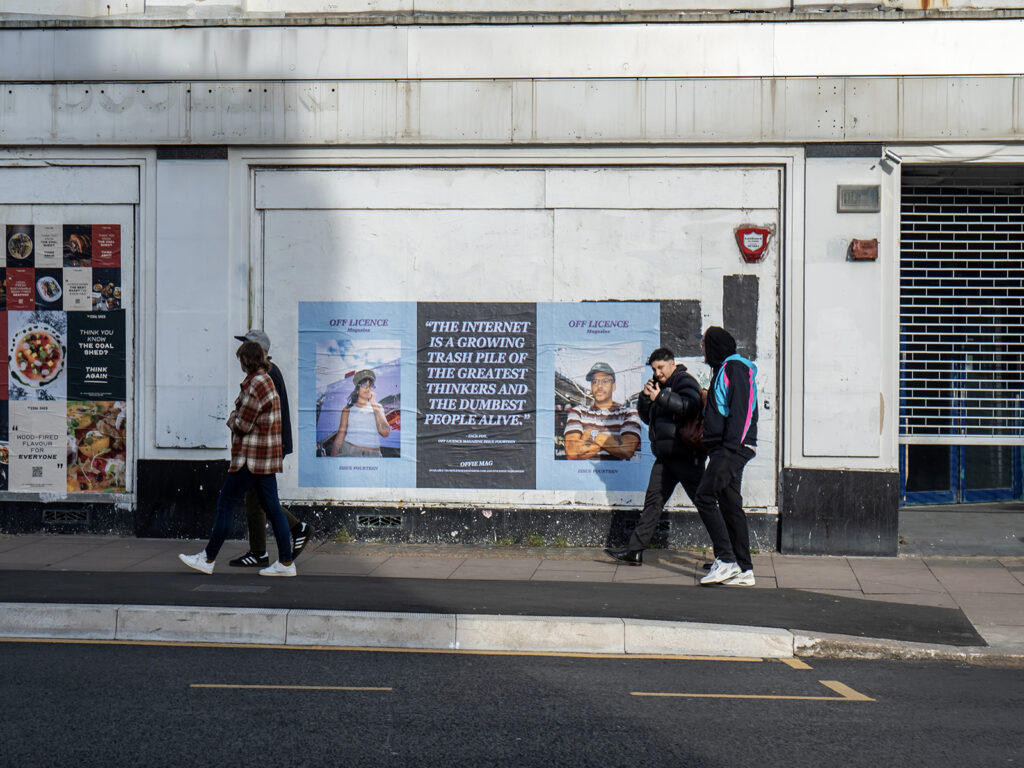
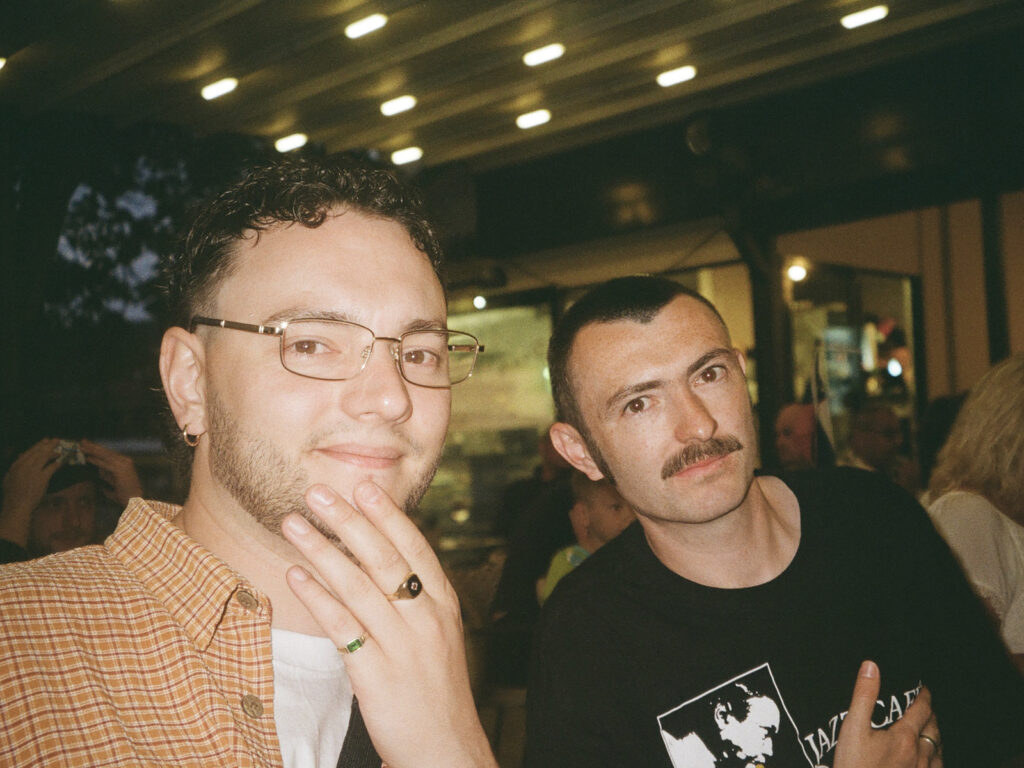
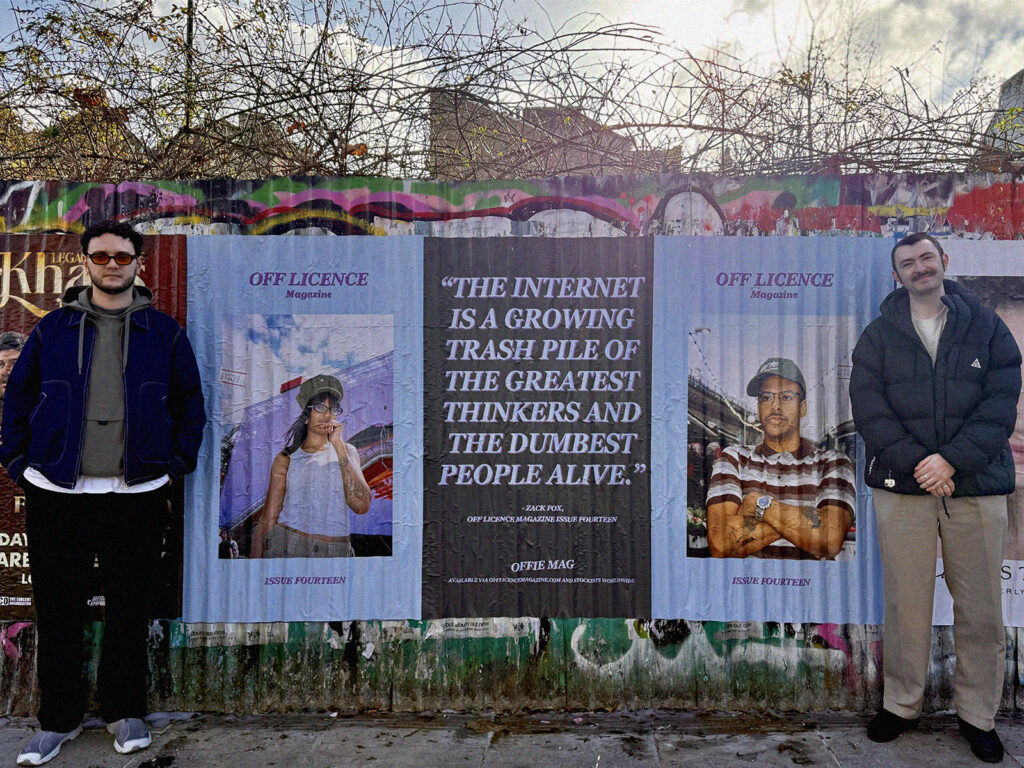
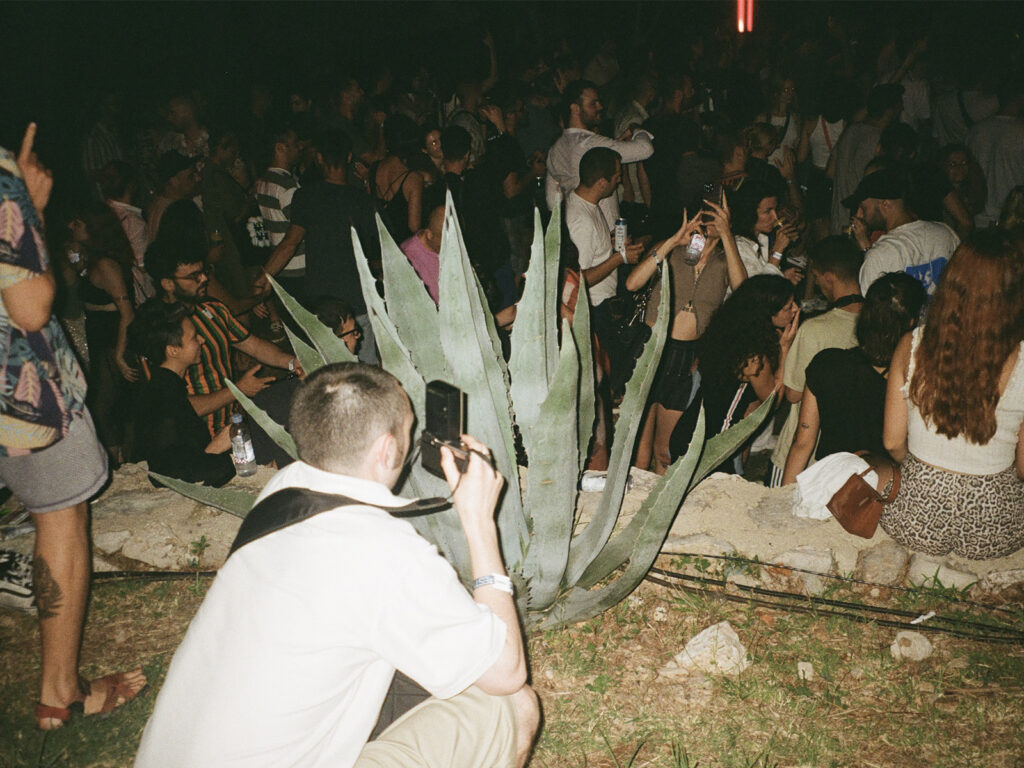
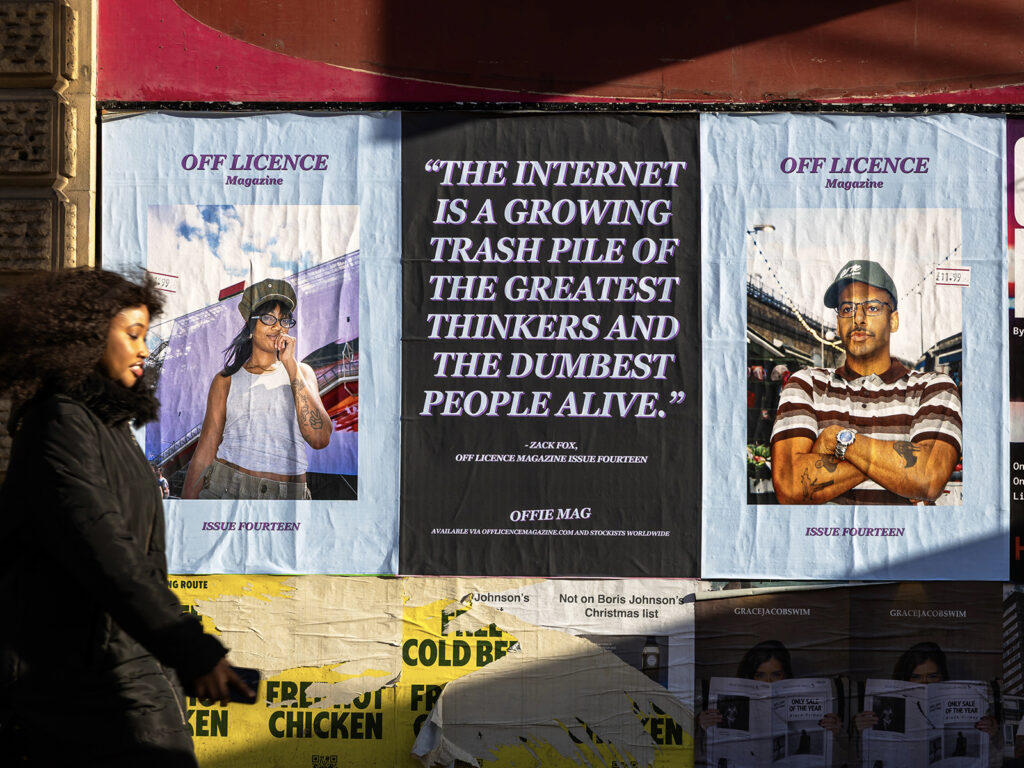
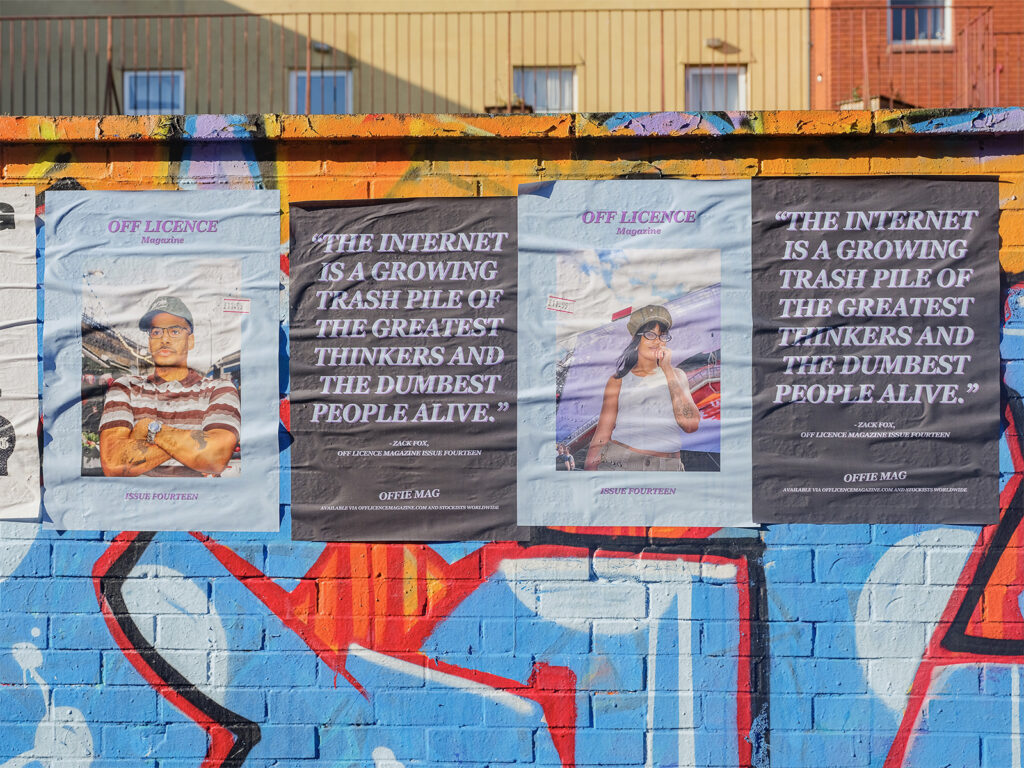
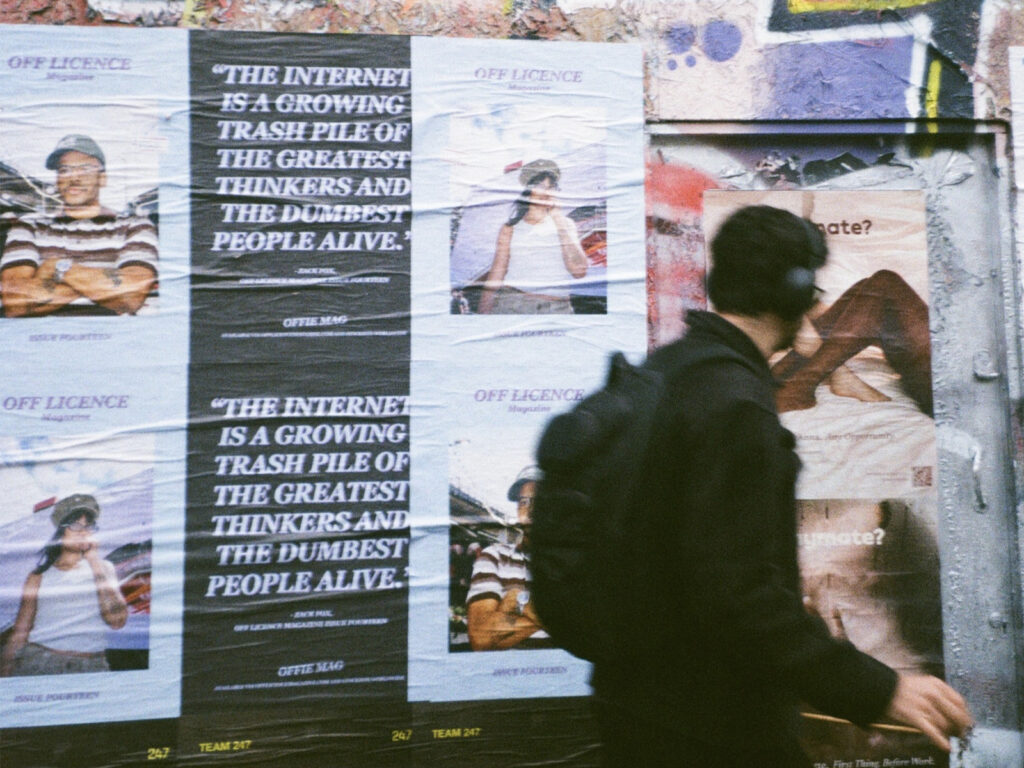
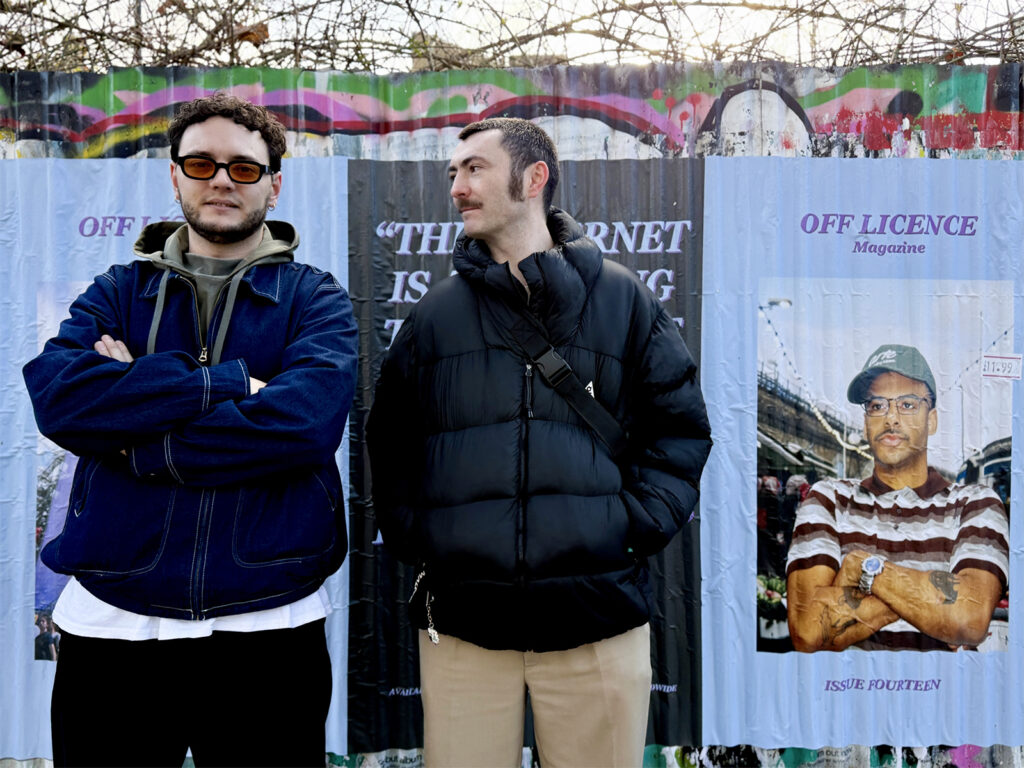
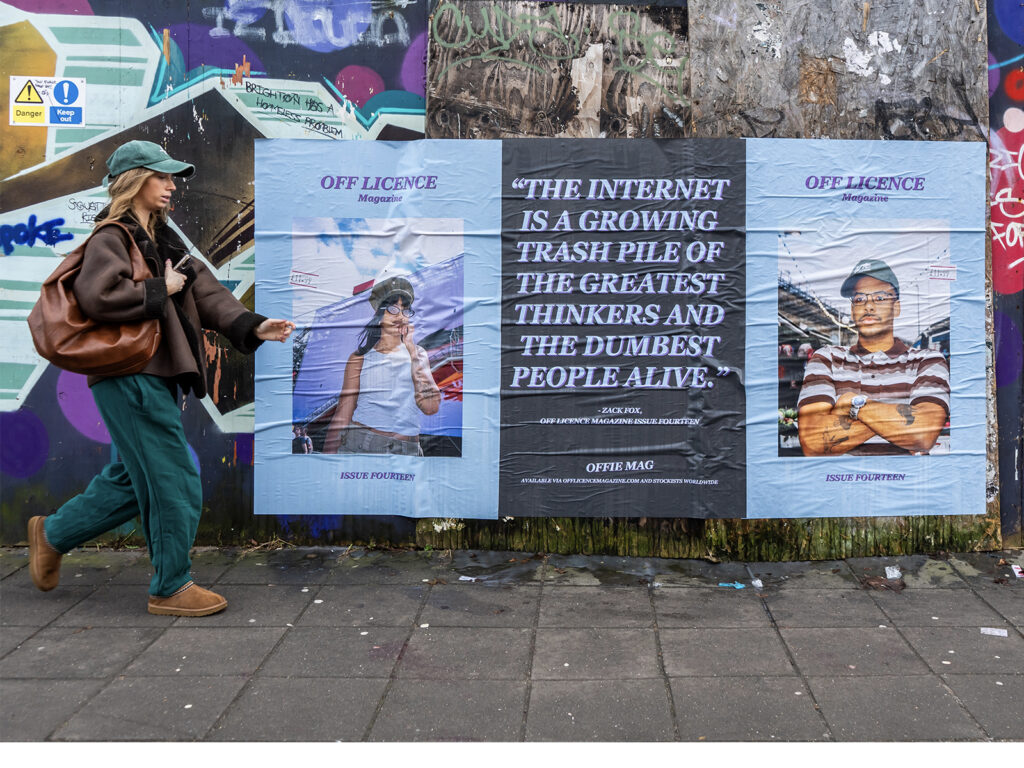
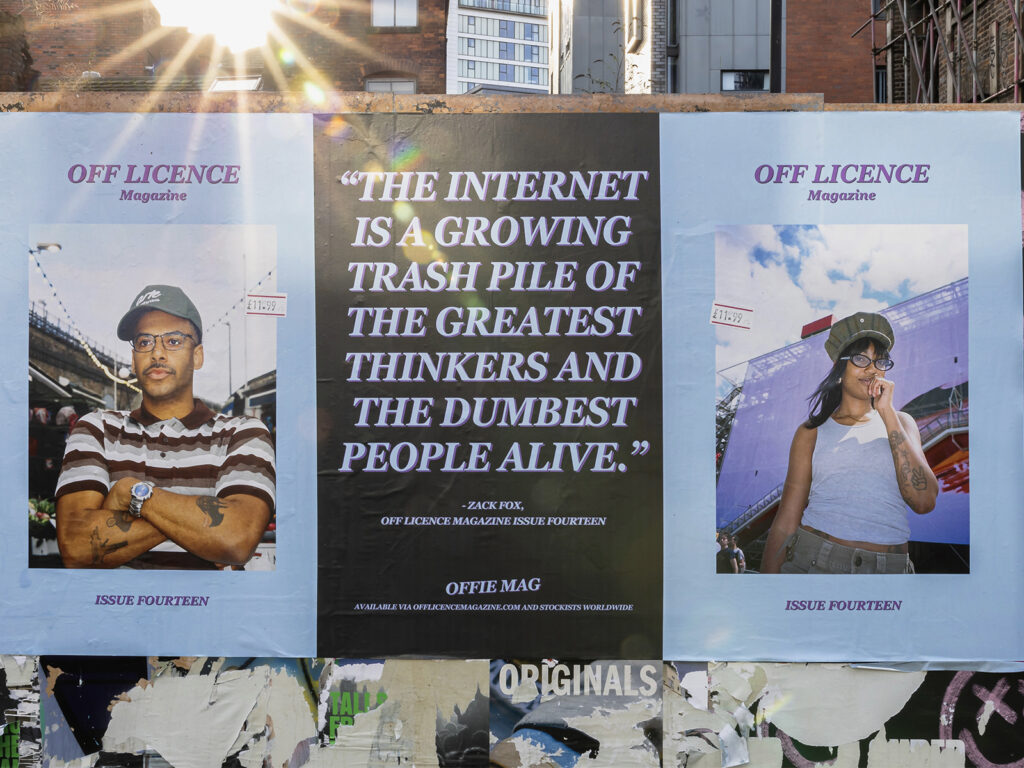
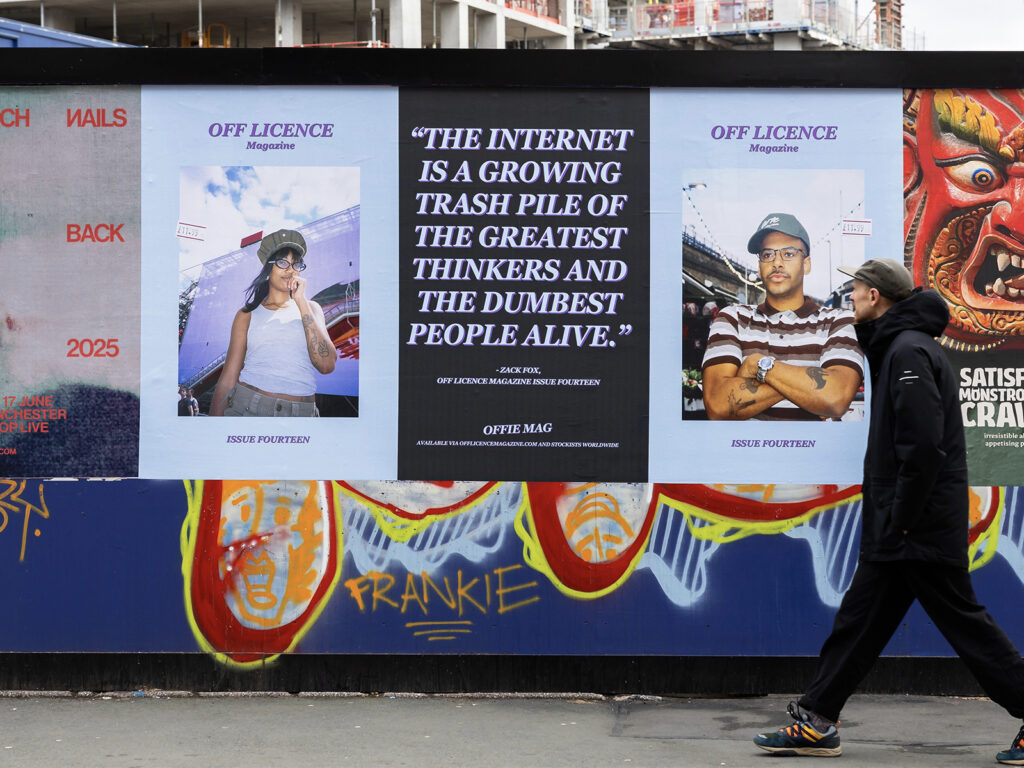
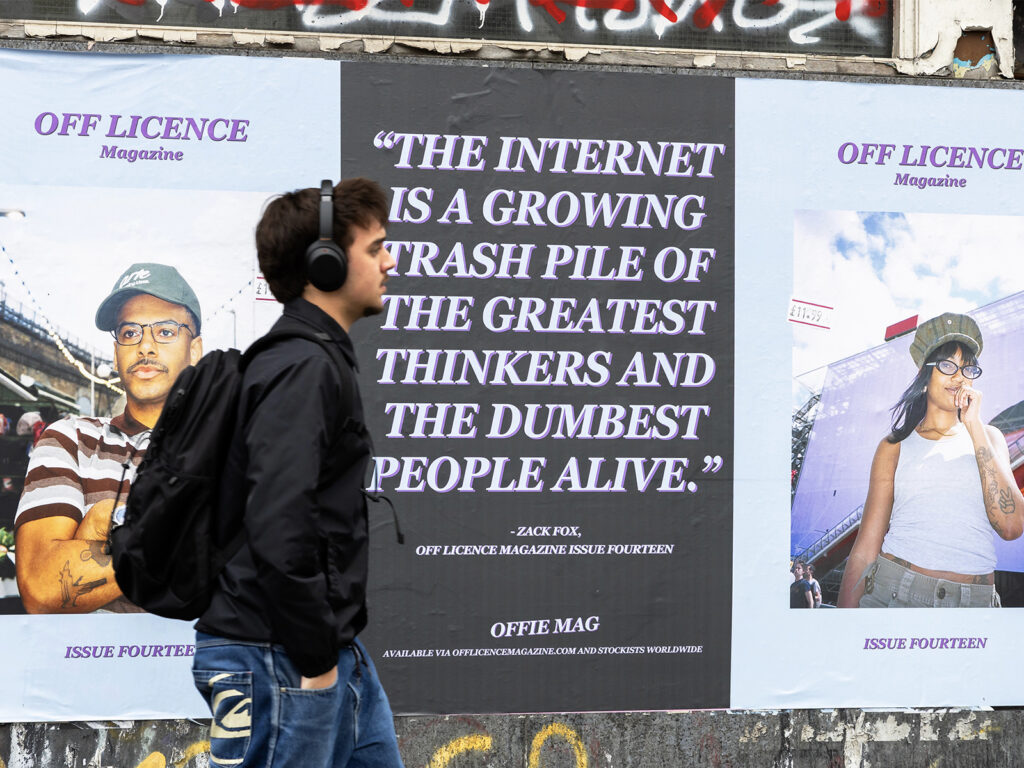

‘The Last Night Out’ is an urgent PSA campaign created to raise awareness of the rapid decline in UK nightclubs, an issue that threatens to erase an iconic and vivacious part of British culture. Nightclubs, vital pillars of economic and cultural vitality, particularly for younger generations and creatives, are closing at an alarming rate. The campaign therefore aims to highlight the date at which, based on recent data, all nightclubs could be forced to close, and does so in the style of a nightclub event. The NTIA spearheaded this initiative alongside McCann (Adam Taylor-Smith and Stephen Yeates), and they came to UNCLE to join forces and amplify its reach across the UK. Together, we’re combining expertise to ensure the campaign resonates in the communities that need it most.
At the current rate of three nightclub closures per week, it is projected that all such venues could disappear by December 31, 2029—a hypothetical “last night out” that the campaign uses as a stark rallying cry. Through the design of striking event posters, “The Last Night Out” campaign brings the issue to life visually, reminiscent of the eye-catching advertisements that typically promote nightlife events. At its core, the campaign champions the idea that nightclubs are more than just places to dance—they’re incubators for youth culture, artistic innovation, and community connection. Nightclubs have long been a space where people, particularly young adults, can feel free to express themselves, discover new art forms, and meet like-minded individuals. Losing these venues would mean not only the end of cherished social spaces but also a significant blow to local economies and creative industries.
The interview we did with the team dives into the motivations behind this campaign and the broader significance of it. We cover the campaign’s mission, the alarming decline in nightclubs, and the implications of this trend for UK communities. By framing the closure date as 31.12.29, they hope to create a sense of urgency that inspires government support and public action, with steps including petitions and emails to local MPs.
WHAT LED TO THE CREATION OF “THE LAST NIGHT OUT” CAMPAIGN?
Earlier this year we came across a stat that revealed over 3 nightclubs are closing every week, and that at that rate they’d all be extinct by 2030. Pretty shocking really.
So we took that stat and reframed it, which—in nightclub terms—would make 31.12.29 the last night out. So we wanted to bring that date, and the struggles nightclubs are facing, to life in a way nightclubs would, ie through a world of beautiful and arresting event poster design.
WHY ARE NIGHTCLUBS SO VITAL TO THE UK’S CULTURAL AND SOCIAL LANDSCAPE?
Nightclubs are more than sound systems and wristbands. They’re vital organisations that provide careers, spark friendships, inspire generations of artists and give people a place where they can truly celebrate their eclecticism as one after-dark family. And they’re vital on an economic level, too. Jobs, careers and artistic endeavors are at risk if nightclubs are allowed to disappear.
WHAT IMPACT WOULD THE CLOSURE OF ALL UK CLUBS BY 2030 HAVE ON COMMUNITIES AND LOCAL ECONOMIES?
Michael Kill, CEO of NTIA put this really well when he said, “Our industry is not just about entertainment; it’s about identity, community, and the economy. The loss of our venues means the loss of jobs, culture, and a vital part of the UK’s social fabric. Clubs like Fabric, Ministry of Sound, FAC 251, and SubClub are more than venues—they’re cultural landmarks that foster creativity, community, and the heartbeat of our cities. Without urgent intervention, December 31, 2029 will be the last night out and the end of an era that has defined generations.”
WHAT ROLE DO NIGHTCLUBS PLAY IN FOSTERING MUSIC, ART, AND YOUTH CULTURE IN THE UK?
Nightclubs are the perfect environment for young people to discover things about themselves, and be inspired by others. They are like incubators for creative expression and have always been spaces that give people a sense of freedom. At their best, they are a place where nobody is judged. There aren’t many places or spaces like that where people can come and be truly free to experiment with and learn about how they want to be perceived.
HOW DOES FRAMING 31.12.29 AS ‘THE LAST NIGHT OUT’ BRING URGENCY TO THE MESSAGE?
We hope it makes the sad reality of these closures harder to ignore. By highlighting the doomsday, and making people realise that it’s really not that far away, we’re hoping it might spark action.
WHAT ARE THE MAIN CHALLENGES UK NIGHTCLUBS FACE THAT CONTRIBUTE TO THEIR RAPID CLOSURE?
The financial landscape has been pretty dire for UK nightclubs since the start of covid. We need the government to provide sustained financial support to keep this industry alive. But also, there are a number of policies and regulations that need reform. We need a review of licensing laws, business rates, and planning policies to create a supportive environment for the industry to build itself back up.
WHAT STEPS CAN THE PUBLIC, LOCAL GOVERNMENTS, AND INDUSTRY PLAYERS TAKE TO HELP SAVE NIGHTCLUBS?
The public can help by signing the petition that challenges the government to launch a Heritage Protection Scheme, granting significant nightclubs culturally protected status.
They can also email their MP with this prepopulated email that takes only a few minutes.

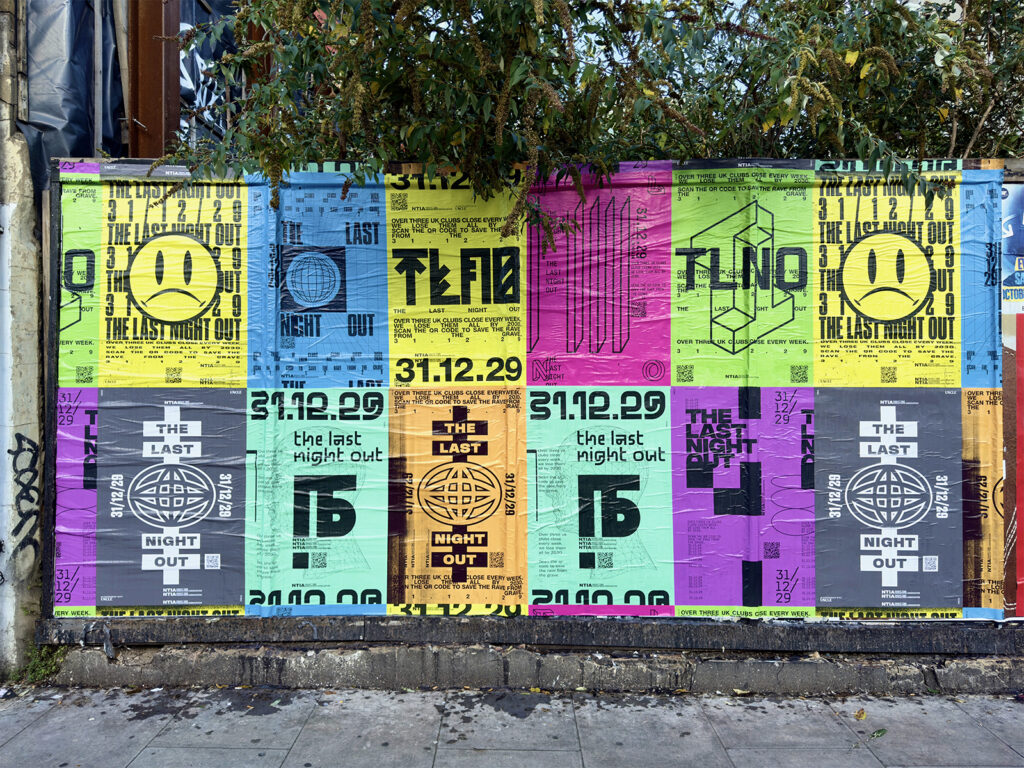
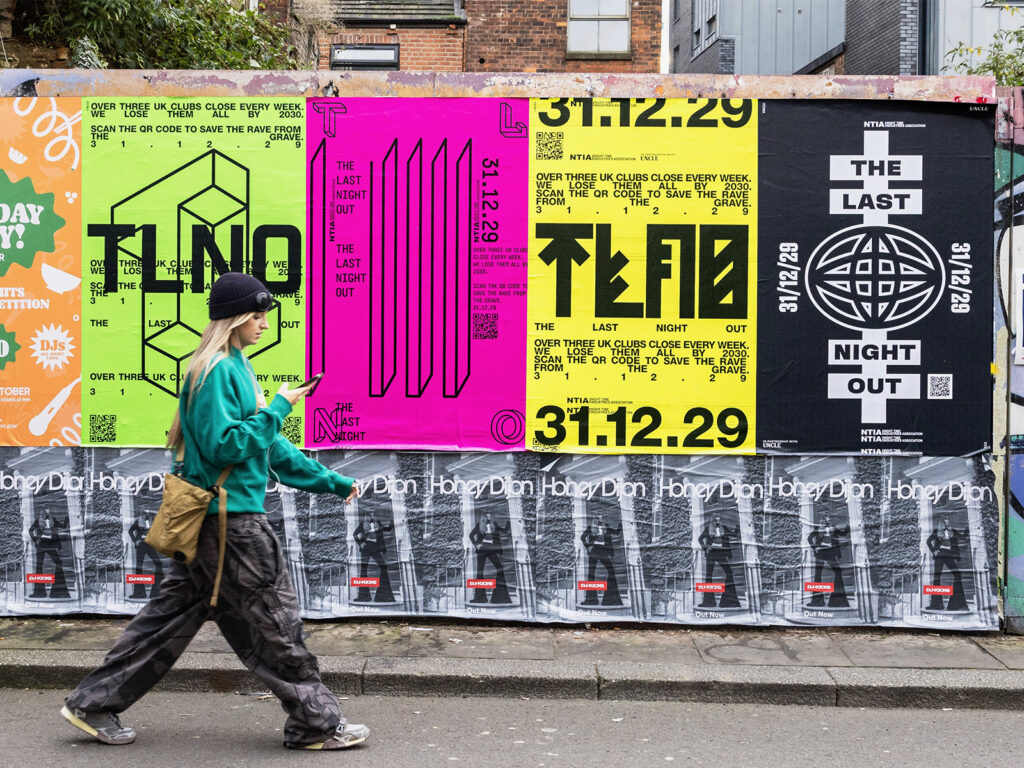
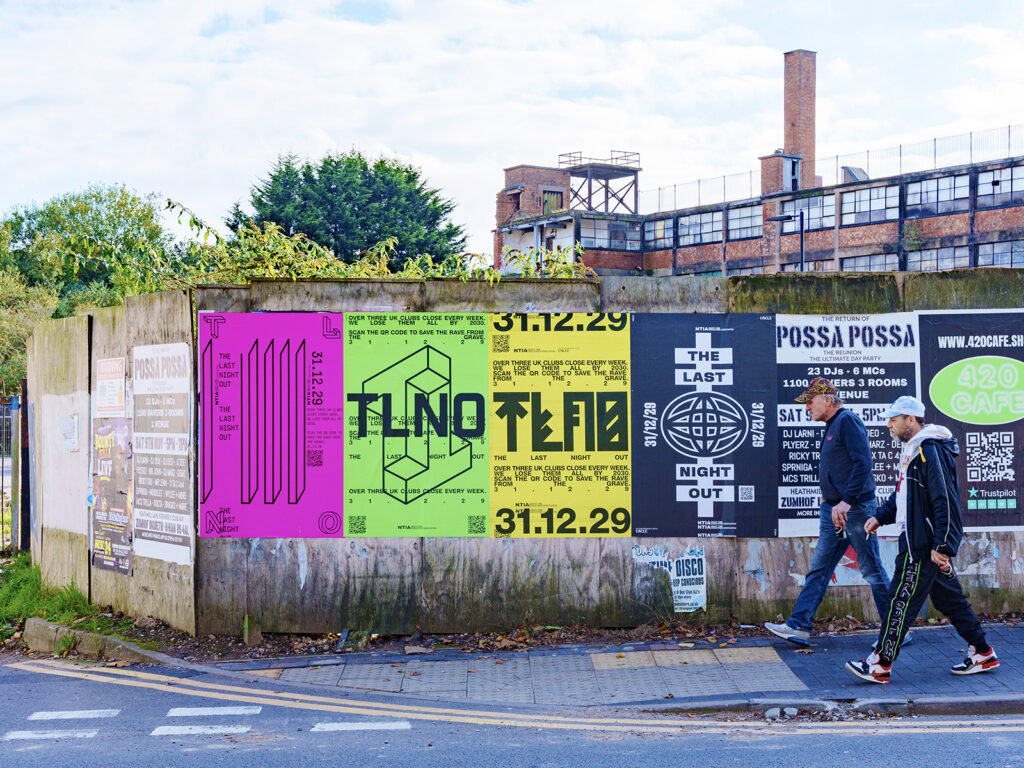
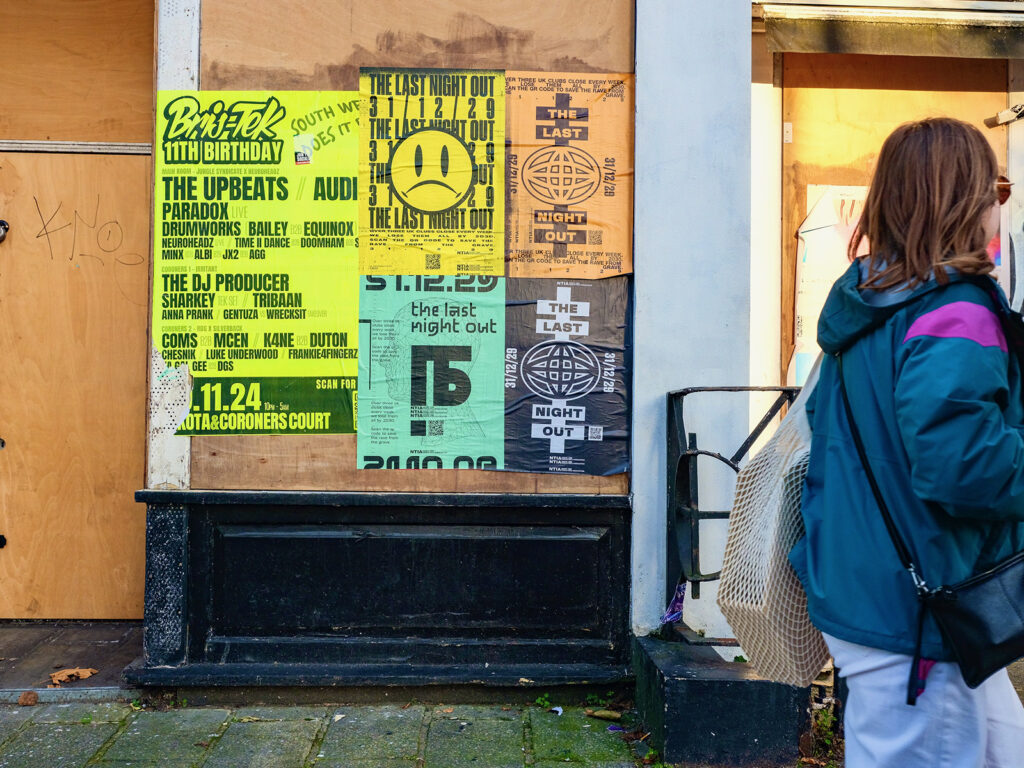
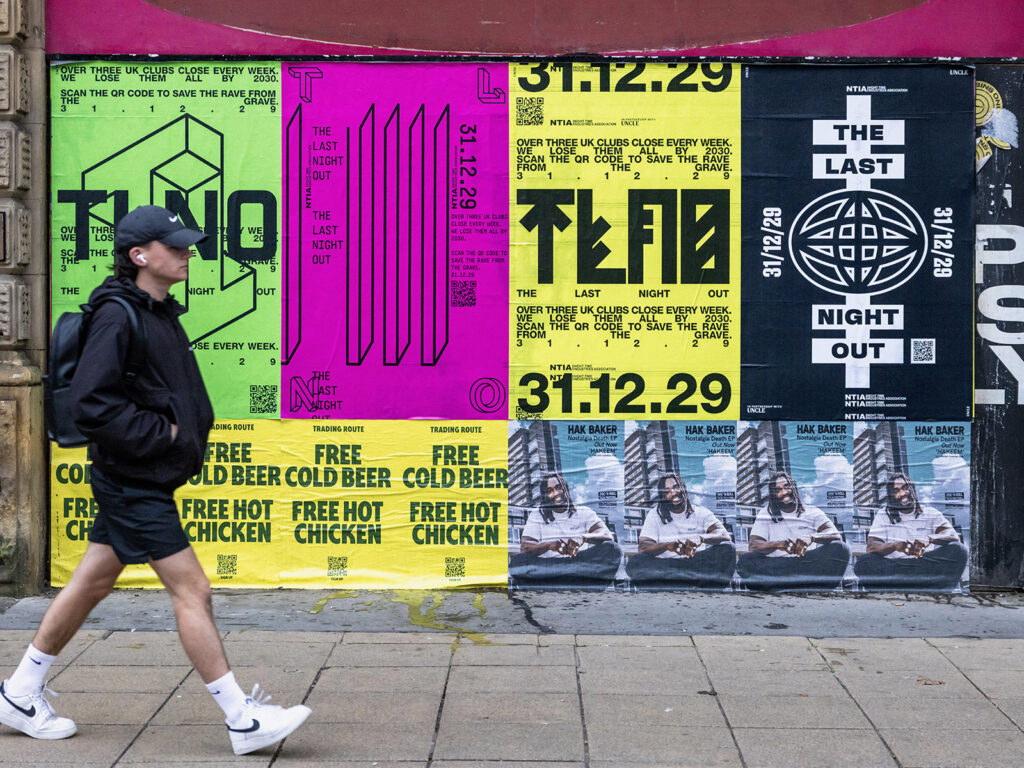
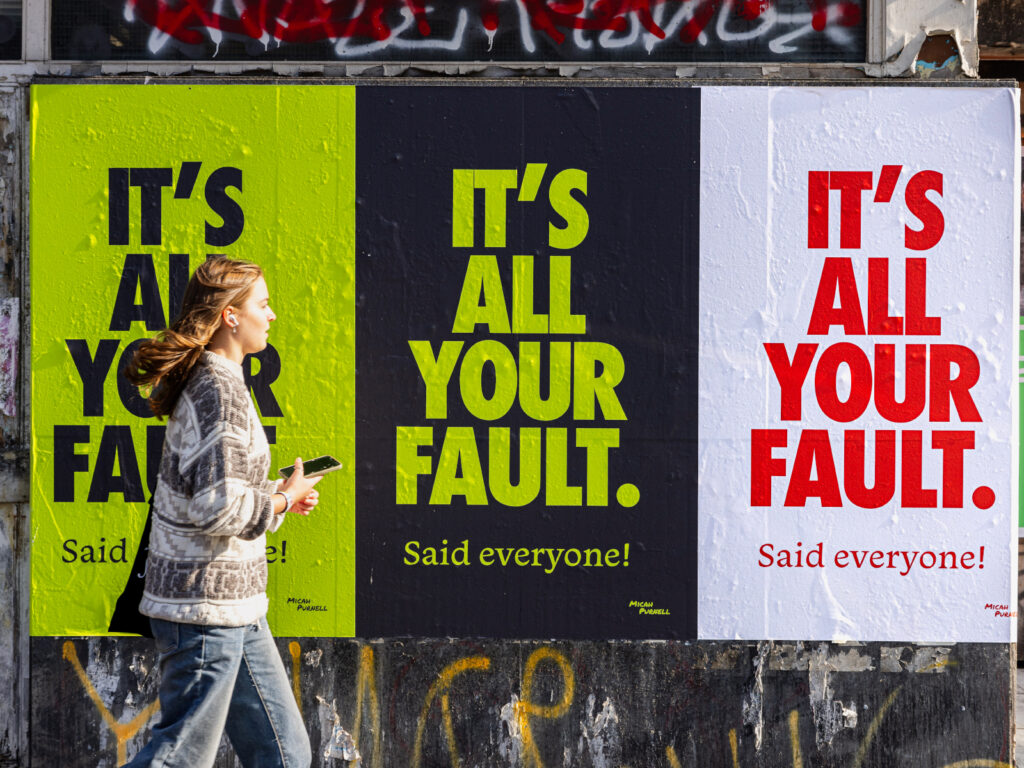
Micah Purnell is a Manchester-based artist known for combining bold visuals with thought-provoking messages that challenge societal norms. With a background deeply rooted in club culture aesthetics and spiritual themes, his work explores complex ideas such as blame culture and collective responsibility. Through public art installations and campaigns, he aims to provoke reflection and dialogue in everyday spaces, bringing artistic and philosophical ideas into public consciousness. UNCLE partnered with him on his latest campaign, which prompts people to look inward and examine their own role in perpetuating scapegoating, encouraging personal accountability.
As an artist, Purnell is inspired by everything from religious scripture to modern advertising, blending the two to create unique pieces that engage both visually and intellectually. He draws influence from the city of Manchester itself, where urban and political environments have shaped much of his creative journey. With notable projects that span from Guardian magazine covers to stadium installations, Purnell seeks to bring meaning to the places where people are most likely to encounter them. This campaign in particular cleverly uses humour and bold design to create a conversation about collective responsibility while gently challenging people to reconsider their own attitudes and behaviours. By doing so, Purnell hopes to inspire a shift toward greater self-awareness, empathy, and ultimately, a more harmonious society.
In this interview, we discuss the concept behind his recent series in more detail and delve into the development of his work over time, inspirations, and how Manchester has played a role in shaping his creative vision. Through this conversation, Purnell offers insights into the larger cultural and philosophical ideas that influence his art, as well as his hopes for the public’s reception of his latest campaign.
WHAT IS THE CONCEPT SURROUNDING THIS SERIES OF WORK?
The idea is a surprising, funny, yet relevant piece, in bold capital letters and strong colours initially appearing as a brazen statement declaring ‘IT’S ALL YOUR FAULT’, assigning blame on the reader, but with the punchline ‘Said everyone!’ Retracting all blame. To a degree.
WHY IS THE SLOGAN ‘IT’S ALL YOUR FAULT. SAID EVERYONE!’ FEATURED SO PROMINENTLY?
The phrase is used as a device to create a public or internal conversation about blame culture and scapegoating.
HOW HAS THIS SERIES OF WORK DEVELOPED OVER TIME?
The theme is part of my ongoing thinking around scapegoat theory, which is an early psychoanalytic idea that explains how individuals or groups project their own frustrations, anxieties, fears or destructive tendencies onto another convenient group or target. It’s a defence mechanism of unconscious denial by projecting one’s own pain, turned into blame, onto others.
WHAT DOES THE CAMPAIGN AIM TO ADDRESS?
The scapegoat is in fact innocent, but highlights the trauma in those scapegoating. The philosopher René Girard believes that if someone has a revelation of, or is confronted with the knowledge of their own scapegoating, then they can no longer do so, so easily, it can break the cycle. Jung said, ‘If people were aware of what they were doing, they would not scapegoat, since the idea of punishing people for crimes they have not committed deeply offends our ethical sense.’
TELL US ABOUT SOME OF THE MOST PROMINENT MOMENTS IN YOUR CAREER?
Producing work for a Guardian magazine cover and Wembley Stadium are major highlights of my commercial career because my drive has always been to bring the humanities to public spaces. Public spaces are the places where people are, but commercial motives dominate.
WHAT IMPACT DOES THE CITY OF MANCHESTER HAVE ON YOUR WORK?
Late 90’s club fly poster aesthetics mixed with the black and white spiritual and political slogans at the Friends Meeting House on Mount Street gave birth to what I continue to do in the same city today. Urban settings have given more space up to a counter consumer narrative thanks to the likes of Uncle and others.
I myself have managed to create an ongoing dialogue with the public via three purpose-built art boards named Add-Art (www.addart.gallery) housed by those willing to risk for the sake of a better city. This is what makes Manchester the place to be. There’s room for us all and people are willing to take risks.
WHAT ARTISTS INSPIRE YOU?
As pointed out above, this is twofold. For the meaning and content, a lot of my work was early readings of the wisdom scriptures in the Bible, in the likes of Ecclesiastes and Proverbs. Contemporary influences have to be the likes of Barbara Kruger, Jenny Holzer, and Douglas Coupland. However, when it comes to visuals, I love football and sports advertising. Nike and Adidas both have superb advertising agencies creating thoughtful advertising (albeit to line their pockets). I love the idea of using the visuals and skill of advertising and mixing them with meaningful themes to push humanity further, to dig deeper, and be more forgiving of one another.
WHAT ARE SOME HIDDEN GEMS IN MANCHESTER YOU LOVE? / FAVOURITE THING ABOUT LIVING IN MANCHESTER?
People are the hidden gems. When you’ve time to stop and see all that goes on, the support to push on solidifies a healthy, defiant drive towards a better world. And of course, the drive is the end game, there is no completion, it’s in the doing, in the small productive ways that make things possible.
DOES CULTURE PLAY A KEY PART IN YOUR CREATIVITY?
I think it has to, but I’m so involved I’m unaware of how it comes out in my work. I aim to foster a DIY culture in others. All too often, one can feel the need to wait for the money, the resources, the tools, the space, the backing, the permission to go forward. You should push on with what you have, however minuscule. Whatever you want for the future, you need to be willing to design it now, in whatever minuscule way, because these things have a tendency to grow. Every tiny act in the right direction is a seed towards it. And through it, you hone your craft. Through this unconscious method, I have been supported, encouraged, financed, and published without pushing, applying or asking — there is a time for pushing doors, but generosity provokes generosity, so just crack on.
WHAT DO YOU HOPE PEOPLE TAKE AWAY FROM THIS CAMPAIGN?
I hope it’s received as a light-hearted bit of matey, fun-poking banter — that we’re all culpable to, and when we own our own, we’re closer to harmony.


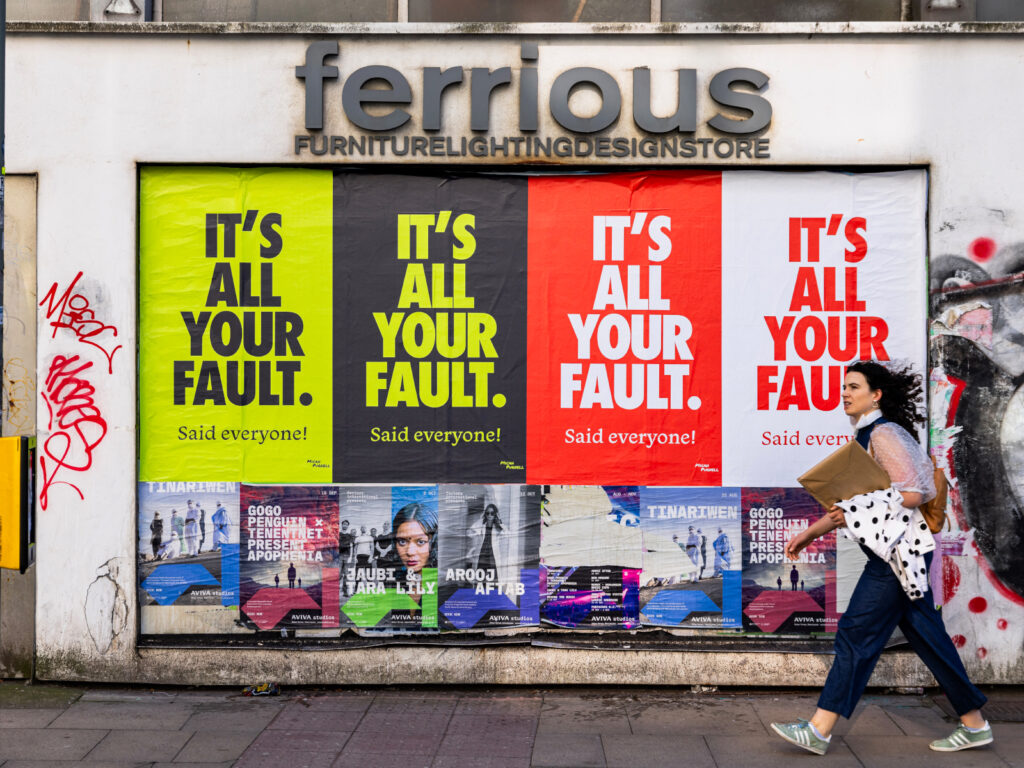
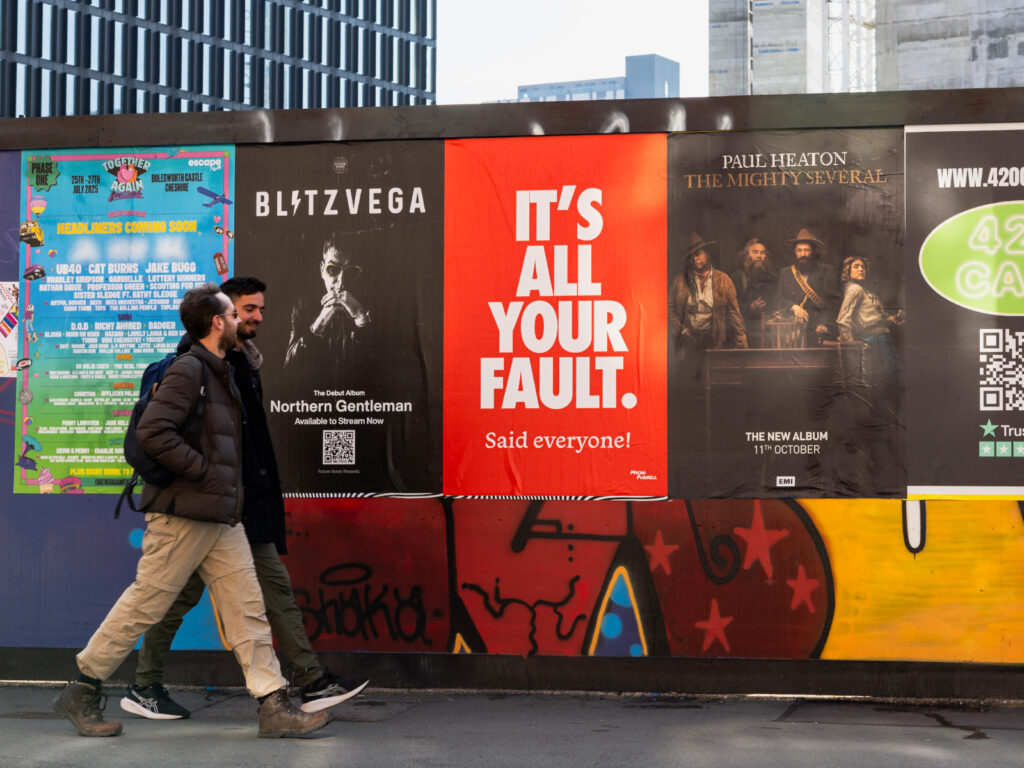
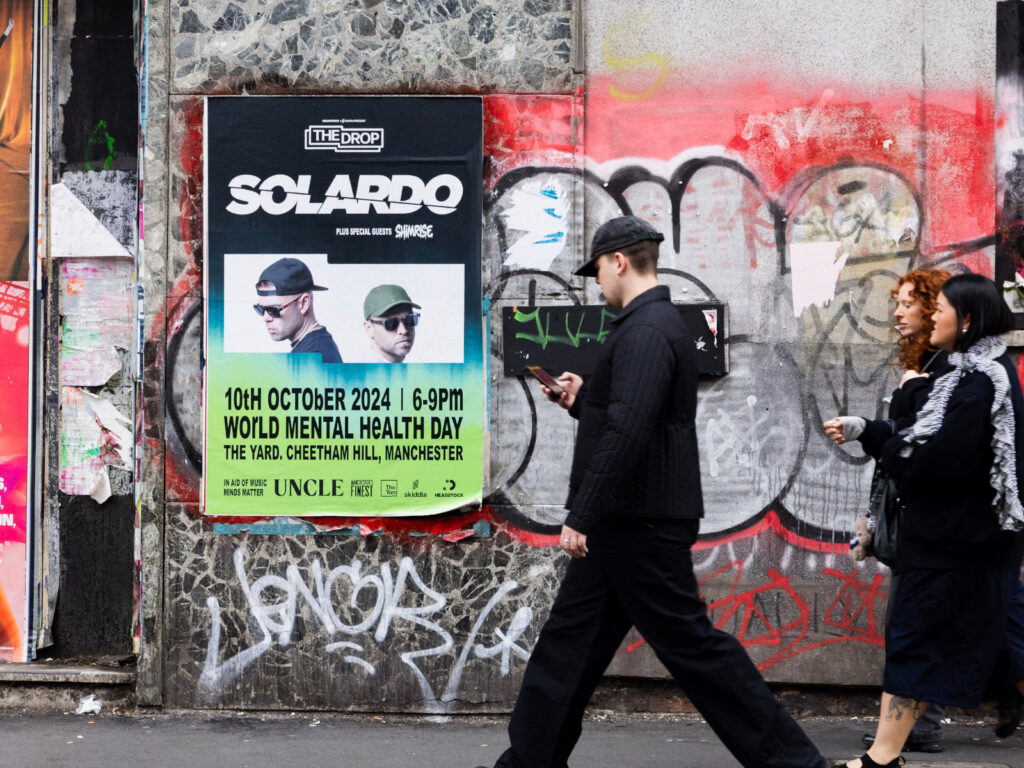
Headstock’s new event series, The Drop, is a dynamic initiative that blends the power of house music with a mission to support mental health in the music industry. Created in partnership with Skiddle and renowned Manchester-based duo Solardo, The Drop aims to celebrate the positive impact electronic dance music can have on mental and emotional well-being. The event series focuses on raising awareness around the mental health crisis within the industry, while also donating proceeds to key charities supporting those affected by it. UNCLE have partnered with them to bring their posters to the streets of Manchester, spreading the word about The Drop, a free event set to take place on October 10th, in celebration of World Mental Health Day.
‘The Drop’ emphasizes the significant role music plays in combating the mental health crisis, especially within an industry that faces high levels of stress and anxiety. Headstock’s team highlights how house music, much like exercise, has been scientifically proven to reduce stress and symptoms of depression. With the support of high-profile artists and music communities, the event focuses on the therapeutic benefits of electronic dance music through a shared and immersive experience. The Drop offers a unique, early-evening rave experience, providing an opportunity for people to dance, unwind, and engage in the positive effects without the pressures of a traditional night out.
In this interview, Headstock reflects on the inspiration behind The Drop, its potential to expand, and the significance of launching in Manchester—a city with a storied history in electronic music. They dive into how the event offers support to the music industry and shines a light on the importance of mental health awareness. Be sure to catch The Drop’s debut and follow their journey as they aim to make a lasting impact through music and community.
CAN YOU SHARE MORE ABOUT THE INSPIRATION BEHIND ‘THE DROP’ AND HOW IT CAME TO LIFE?
We’re big fans of house music and believe in its power to lift our mood. To that end, we were keen to develop an event format that focuses on the positive impact that electronic dance music can have on our mental health, whilst shining a light on the transformative ability the genre can have on our mental & emotional wellbeing. We also wanted to create an event that supports people working across the music industry. With that in mind, we’re delighted that all proceeds from ticket sales will go to support a number of music industry mental health charities and causes.
WHY DID YOU DECIDE TO LAUNCH THIS EVENT SERIES ON WORLD MENTAL HEALTH DAY?
Without question, World Mental Health Day is the biggest moment in the global mental health calendar, so we decided to launch the series on this date to try and make as big a statement as possible.
WHAT ROLE DO YOU SEE MUSIC PLAYING IN COMBATING THE MENTAL HEALTH CRISIS, ESPECIALLY WITHIN THE MUSIC INDUSTRY?
Headstock believes firmly in the power of music and shared experience to positively impact our mental and emotional health. In a similar way that exercise has the ability to lift our mood, house music has been scientifically proven to reduce symptoms of stress and anxiety, whilst also reducing feelings of depression through the climactic release of dopamine and endorphins. Music has a vitality important role to play when it comes to helping us maintain good mental health.
WHAT HAS THE RESPONSE BEEN LIKE FROM ARTISTS AND THE MUSIC COMMUNITY TOWARD HEADSTOCK’S INITIATIVES?
We have been very lucky over the past few years with regards to talent, and the music community as a whole has really got behind what we’re trying to do. Over the past few years, we’ve worked with artists ranging from New Order and James Bay, through to the likes of Becky Hill, Faithless and Nothing But Thieves. We even managed to get The Killers’ Brandon Flowers to support one of our initiatives which was a ‘pinch me’ moment.
HOW DID THE COLLABORATION BETWEEN HEADSTOCK, SKIDDLE AND SOLARDO COME ABOUT?
We have been collaborating with Skiddle for the past few years on various mental health initiatives and they are one of the founding partners of MUSIC 85258 – the music industry mental health text support service Headstock launched in partnership with Shout earlier in 2024. When we first floated the idea of The Drop to the team at Skiddle, they were very eager to be involved. With regards to Solardo, we wanted to launch the new event series with Manchester talent given our Manchester roots and Solardo seemed like the perfect choice to kick things off – especially given their uplifting style!
WHAT DO YOU HOPE THIS EVENT SERIES WILL ACHIEVE IN TERMS OF BOTH RAISING AWARENESS AND SUPPORTING MENTAL HEALTH CHARITIES?
Ultimately, we want to shine a light on the brilliant charities that exist to support the mental health of anyone working within the music industry. People who work within music and live events are far more susceptible to mental issues than the broader population, so it’s vitality important that we do all we can to raise awareness of the support and services on offer. In some small way, we hope that The Drop is able to support the life-saving work these charities are doing.
ARE THERE PLANS TO EXPAND ‘THE DROP’ TO MORE CITIES OR TAKE IT TO A LARGER SCALE IN THE FUTURE?
In the first instance, the plan is to establish The Drop in Manchester over the next 12 months, championing talent from the North-West as well as further afield. Whilst we don’t have any concrete plans to expand the event series to other cities at the time being, we’d love to eventually take the event to other regions throughout the UK.
WHAT CAN ATTENDEES EXPECT FROM THE UNIQUE FORMAT OF AN EARLY EVENING RAVE THAT ENDS BY 9PM?
We wanted to create an intimate rave experience for people that love to dance, but without the pressures of a big night out. The Drop isn’t positioned as a sober rave but is perfect for anyone looking to unwind – with or without at drink – after a hard day at work. And with a 9pm finish, people can decide whether they want to continue their night elsewhere – or head home where they can be tucked up in bed by 10pm!
WHY WAS MANCHESTER CHOSEN AS THE CITY TO LAUNCH THIS EVENT SERIES, AND WHAT MAKES IT AN IDEAL LOCATION FOR SUCH INITIATIVES?
Our roots are in Manchester – as are Skiddle’s – so it made perfect sense to kick things off in our home city. Add to that the fact that Manchester is widely regarded as the music capital of the UK, then we couldn’t really launch the series anywhere else!
HOW IS THE EVENT IMPORTANT TO THE CITY?
Manchester has an incredible history when it comes to electronic music, boasting globally recognized brands such as the Hacienda, Sankeys and the Warehouse Project. In time, we hope that The Drop can make its own mark on the city, whilst helping to shift the needle when it comes to the positive role that music has to play with regards to our mental health.

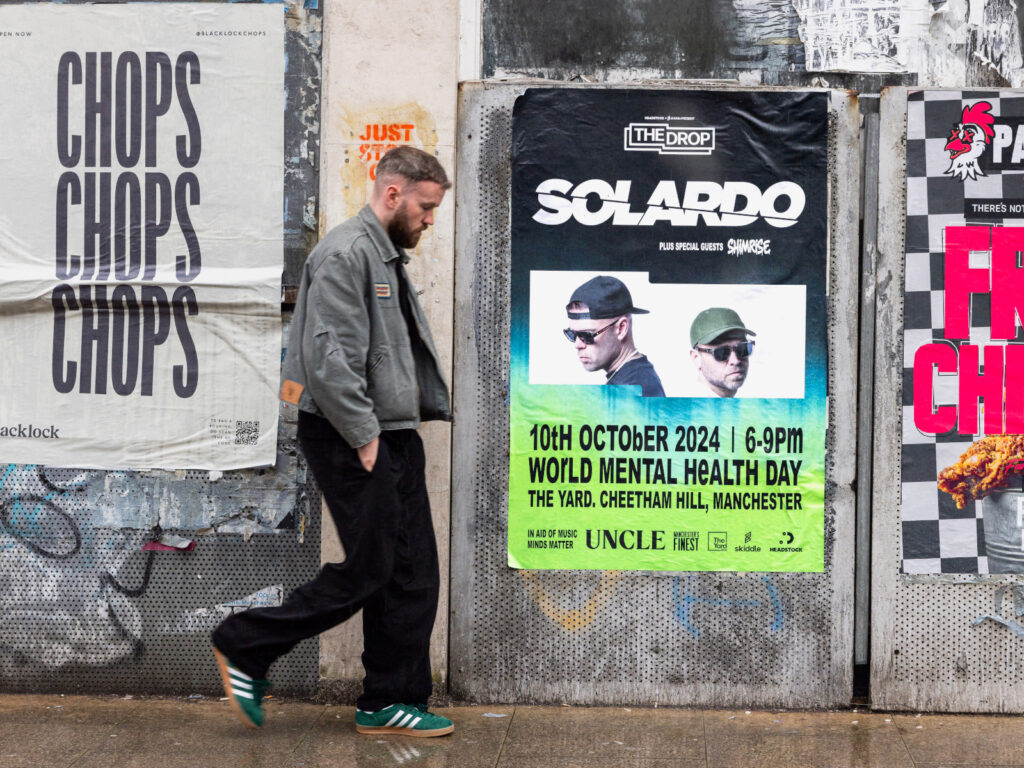
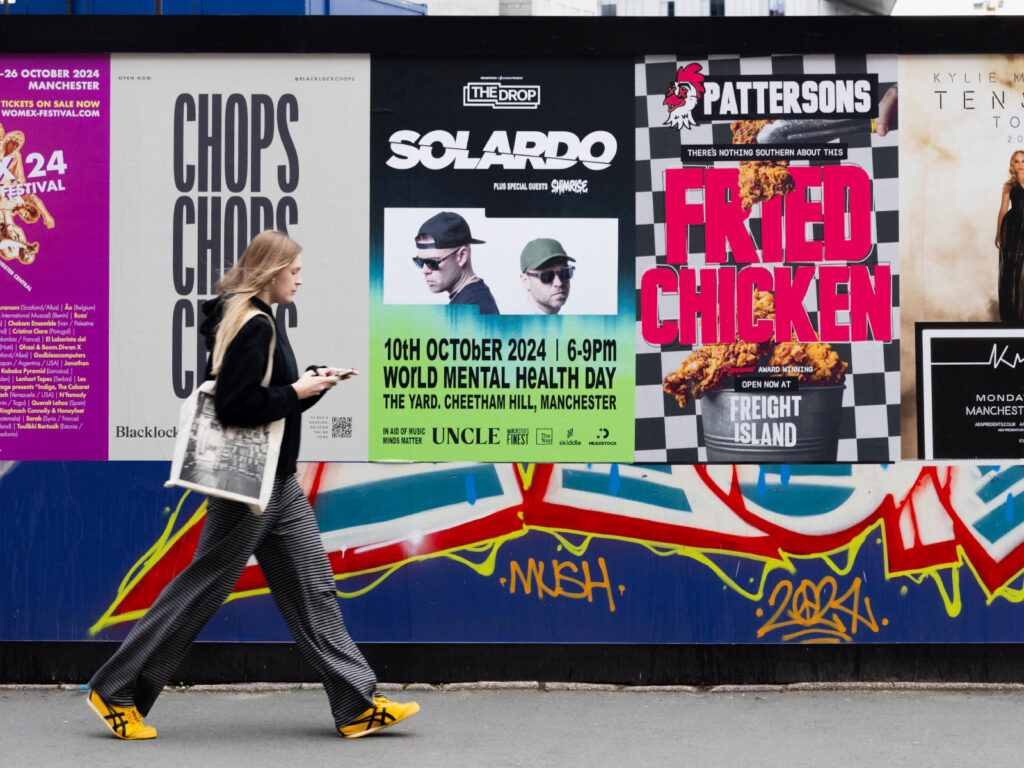
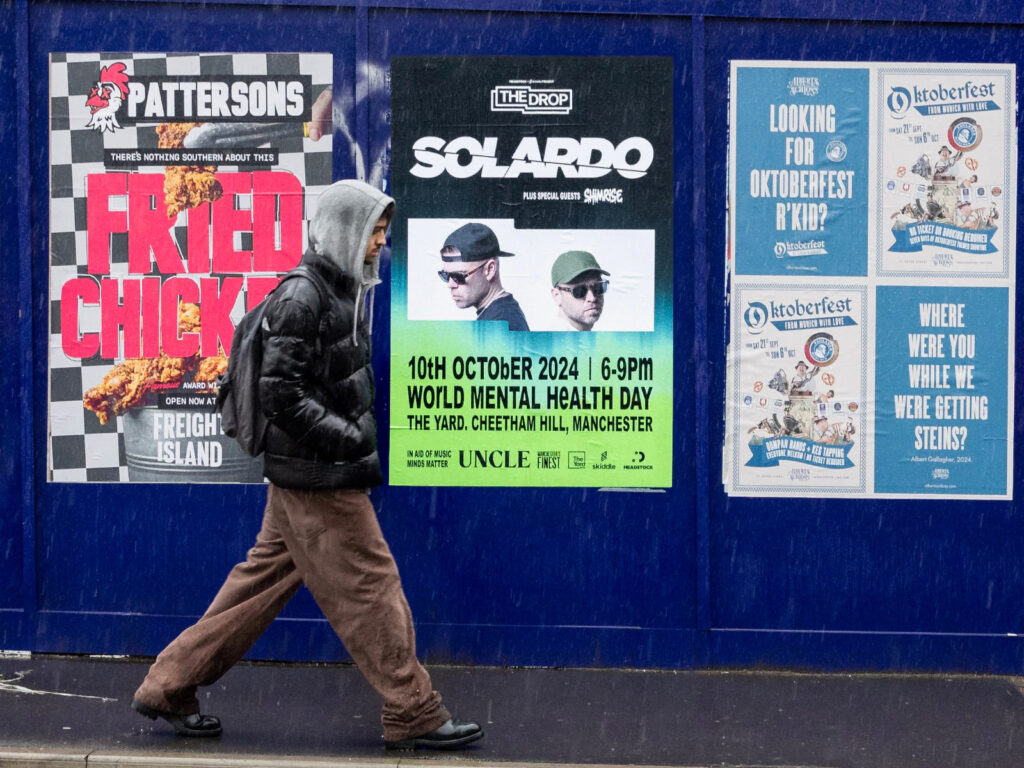
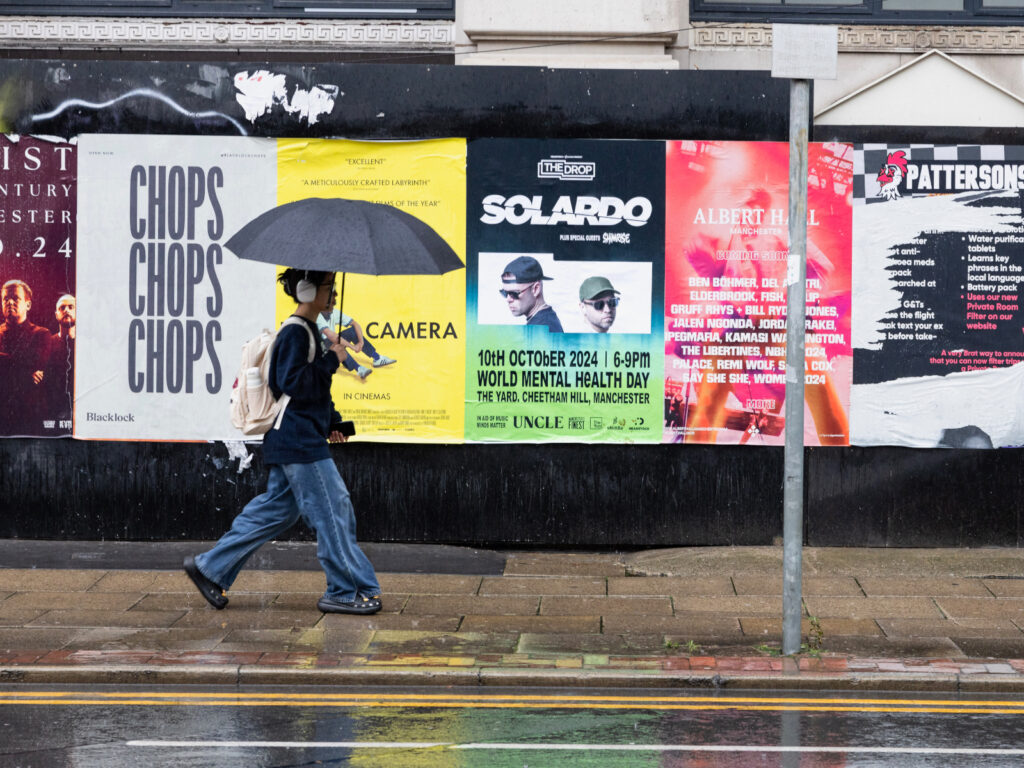
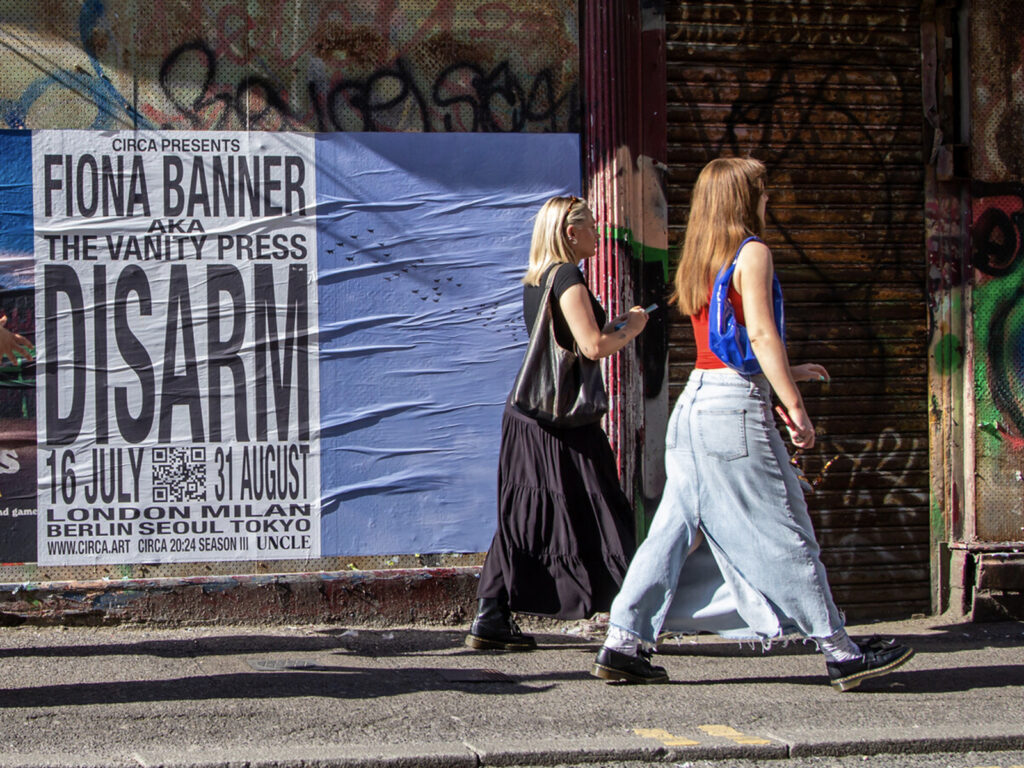
DISARM is a public artwork display from artist Fiona Banner commissioned by CIRCA in partnership with UNCLE. The creative itself has taken shape in multiple mediums since it’s creation, culminating in a showing on the digital screens of Piccadilly Circus. Known for their commercial content, these screens provide a powerful platform for a campaign focused on political and social commentary. It will be shown daily at 20:24pm (BST) on that screen, plus others globally until the 31st August. To amplify the campaign’s message, we also facilitated a national flyposting showing, drawing attention and support for its agenda.
The artwork presents a striking juxtaposition: military aircrafts, typically associated with destruction, spelling out the word ‘DISARM’. This visual statement challenges viewers to reconsider the implications of military power and the often-unexamined nationalism associated with such displays. Whilst the roar of the planes and their formations can be thrilling and beautiful, they also are underscored by the stark realities of nationalistic pride and the obscenity of war. The aim of the artwork being to provoke thought and conversation about peace and excess, especially via the interconnectedness of nations across the globe that we hope strive for unity.
UNCLE conducted an in-depth interview with Fiona Banner to explore the full scope of the artwork’s concept. The conversation reveals the creative process behind the piece, its personal significance to the artist, and the inspirations that led to its creation.
WHAT IS THE CONCEPT SURROUNDING THIS SERIES OF WORK?
DISARM is on the mega screen at Piccadilly Circus, London – Piccadilly Lights… A super public intersection…It’s a public artwork that happens daily for 2 months.
DISARM takes from the viscerally and direct impact of a military flypast, its self a very public kind of performance, and subverts the usual jingoistic message of military power, so the planes in formation spell out the word DISARM.
A few times a year a flypast goes right over my studio. It’s weirdly exciting, such a brief moment of extreme weather, of obscene ego and nationalist folly, yes, but it also hits you viscerally, something about the planes high in the sky performing like that, is emotional, frightening… possibly beautiful.
We always rush out to see it when we hear the roar… then afterwards talk about how fucked it is. Lately they have been spelling out C R, the kings initials, things like that – hubris writ large.
Piccadilly circus spot is a centre of establishment in many ways, and the screen is top capitalism, in normal times it’s a constantly replicating quilt of unrequitable consumerist desire. The flypast is an interruption, or take over of that, it plays into that excessive and perverse energy – the word ‘disarm’ also refers to that excess, and our combative relationship with nature, as well the military.
The poster campaign goes long side that. Fly-posters for a fly-past…street posters are always animated because they are experienced in passing.
WHY IS THE WORD ‘DISARM’ FEATURED SO PROMINENTLY?
In spelling out the word DISARM, letter by letter, the airplanes are calling for their own demise, or emasculation at least. It’s is a moment where language meets its limits.
The work is grandiose as is a flypast, and not, disarm is a big word, and also a physical word, it also refers back to the domestic sphere of our own bodies, dis arm.
I was thinking that there is a naivety to making the statement ‘disarm!’, which is to say the word has become detached from its reality – how do you use that word in a way so that it redresses the cliché, or otherwise put so that the word speaks with impact, speaks its own complexity.
Addressing the biggest global Conference on Disarmament this year U.N. Secretary General Antonio Guterres said “Something is very wrong if a disarmament conference leads to no meaningful disarmament, year after year.” The word has become taboo, and all we are taking about at the moment is ramping up arms. The arms industry is all about control, but it is out of control… It has become normalised.
There is very little proper public conversation around peace at the moment. Seems like a time to say Disarm!
HOW HAS THIS SERIES OF WORK DEVELOPED OVER TIME?
It started as a series of story boards or drawings, and then slowly got realised. It became clear to me the planes had to be from different, non-allied countries. D – Flying Leopard, I – Typhoon, S – Flanker, A – Falcon, R – Golden Eagle, M – Lightning, so there is contention in the medium of the language.
The action happens amongst the birds, the sky…the boredom of an undistinguished bucolic land scape… the sound coming first and waiting for the planes to erupt into the frame.
Like any flypast its uber boring and uber exciting…. Waiting and the excessive action, then waiting…. Plus there is the perversity that the planes are named after forces of nature… so we are looking at nature? I realised the suppleness of nature was an important antidote to the harsh roaring anti nature of the planes… the space between the letters that makes the word possible.
Years ago I made a series of works called Chinook. One involved a chinook performing a sky ballet at an air show. Perhaps I have been slowly making this work for a long time without realising it.
WHY ARE YOU OFTEN DRAWN TO THEMES OF MILITARY?
I grew up in one arms race, and then there was another around the time I started working properly as an artist. Cold wars were the wallpaper to growing up in the 70s and later 80s – our primitive dark side spelt out in high technology.
TELL US ABOUT THE COLLABORATION WITH CIRCA ART?
I got to know Josef O’Conner when he was thinking about starting Circa and he asked me to make something for Piccadilly Lights then. As time went on we agreed that it should be something active, a happening, something that implied, or called for, change. I had recently put massive full stop sculptures into the sea, with Greenpeace, part of an action against destructive fishing…and delivered another to the front door on DEFRA. Disarm is another bit of language in action, it plays into the public nature of Piccadilly Lights. Whilst I have been working on this different conflicts have flared up and the global context has changed. It has been hard to find a time when the work does not feel like a response to a specific context.
DID GROWING UP IN LIVERPOOL SHAPE YOUR CREATIVITY?
It’s hard to know these things. There is often an underside of humour, as a way of saying things in my work – something physical and connected with language… perhaps there is an element of bravado…
TELL US ABOUT SOME OF THE MOST PROMINENT MOMENTS IN YOUR CAREER? BEING FEATURED IN THE MUSEUM OF MODERN ART OF BEING SHORTLISTED FOR THE TURNER PRIZE ETC…
Most prominent moments have been human… back room interactions… the making stuff… the linear cv, or career moments aren’t actually the big moments, I try to not make them my markers.
WHAT IMPACT DOES THE CITY OF LONDON HAVE ON YOUR WORK?
Sometimes it’s restrictive, sometimes it’s a release. The friction is important.
WHAT ARE SOME HIDDEN GEMS IN LONDON YOU LOVE?
The gaps and in-between bits, the community gardens…. lets protect them!
FAVOURITE THING ABOUT LIVING IN LONDON?
The mix of human voices and accents.
DOES CULTURE PLAY A KEY PART IN YOUR CREATIVITY?
Always by osmosis mainly. I am grateful to live now, but now is also shit in many ways…
WHAT DO YOU HOPE PEOPLE TAKE AWAY FROM THIS CAMPAIGN?
It may sometimes seem small or stupid, naive, but if you believe it find a way to say it.
Stand for change.
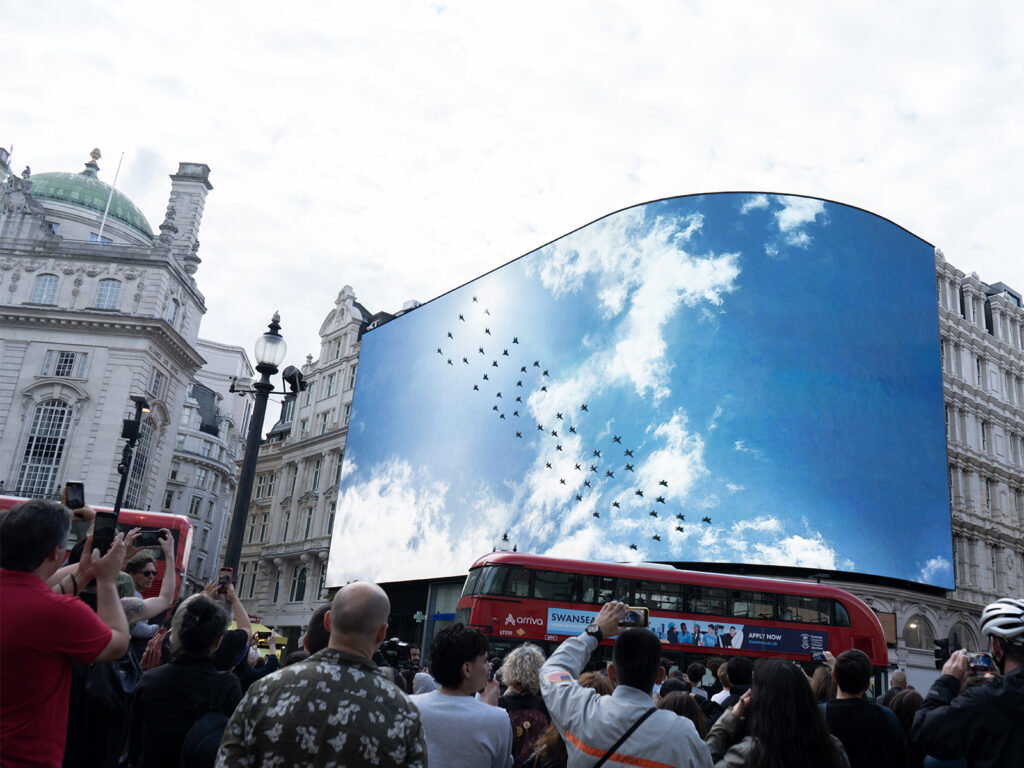
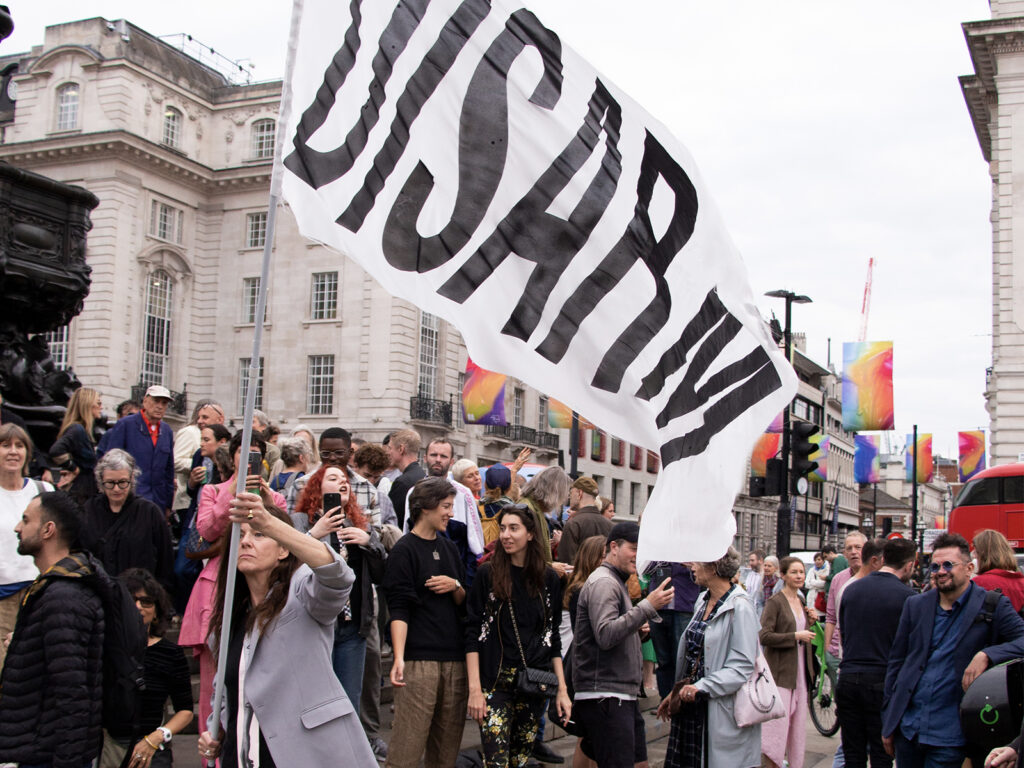
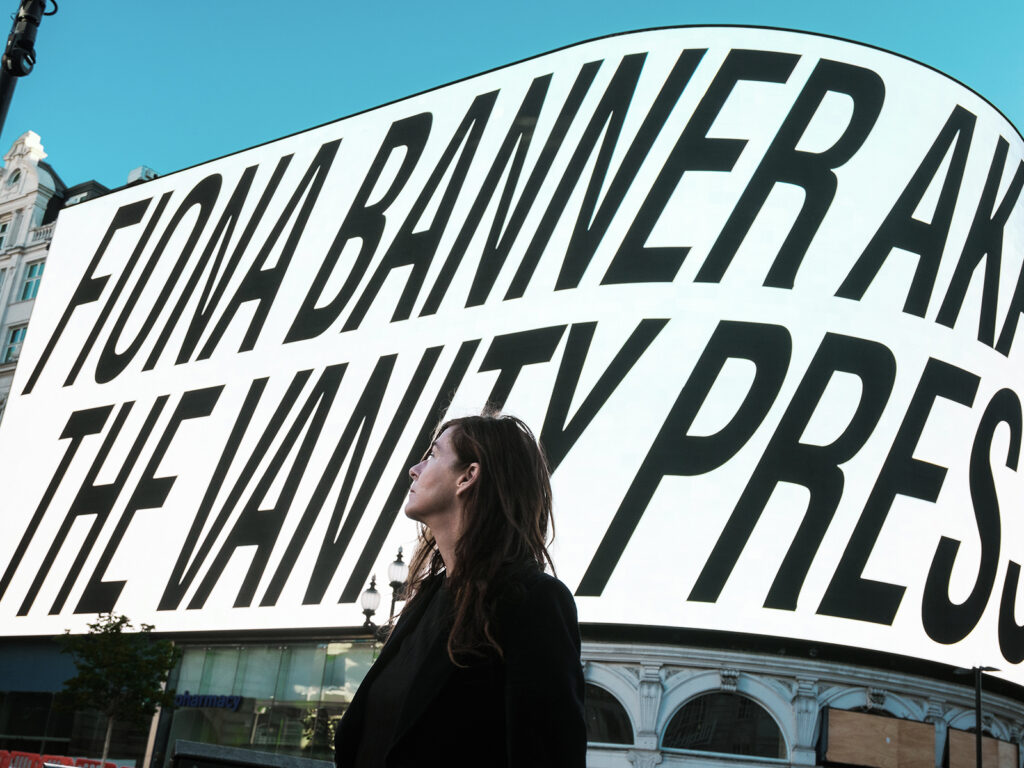


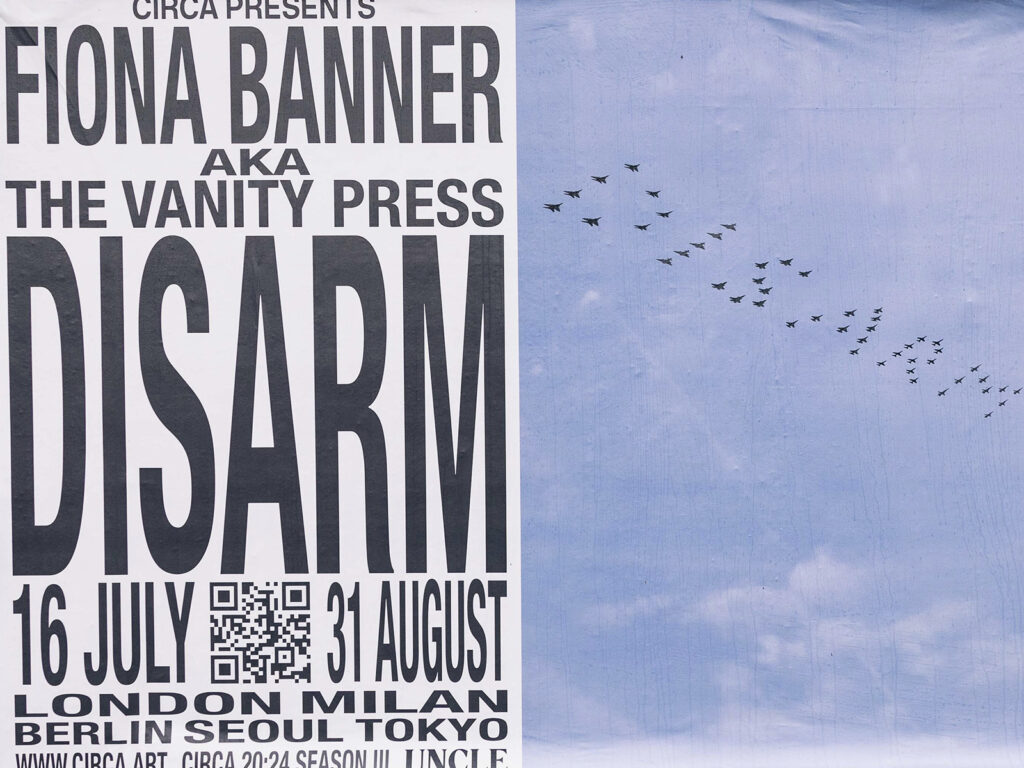
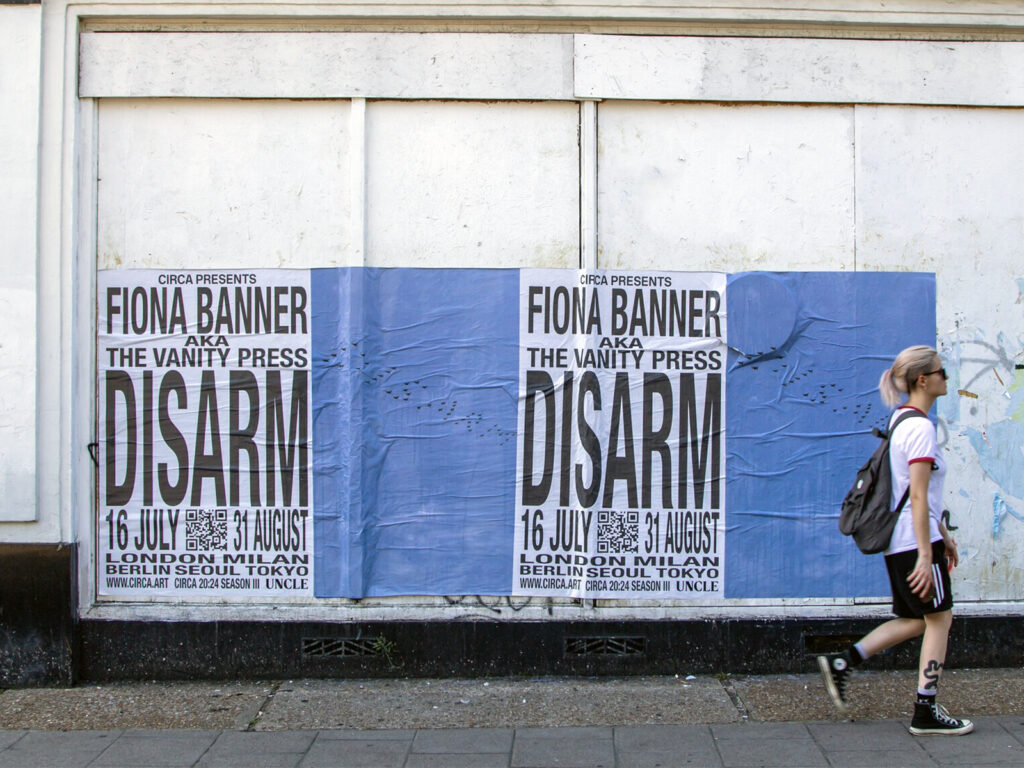
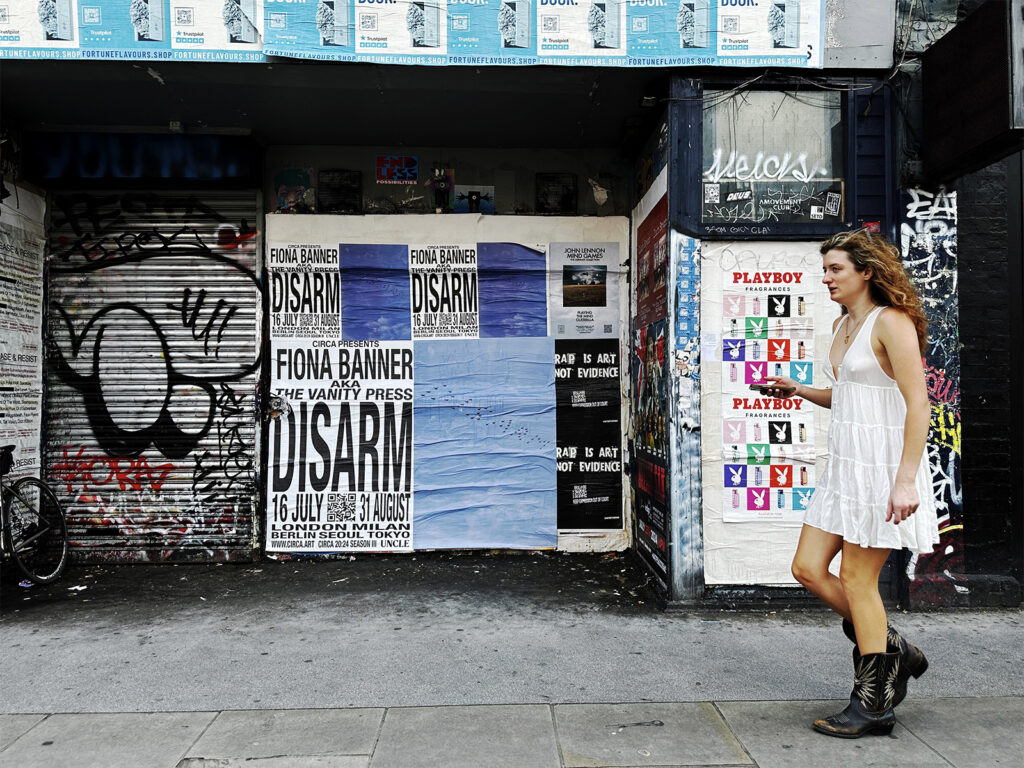
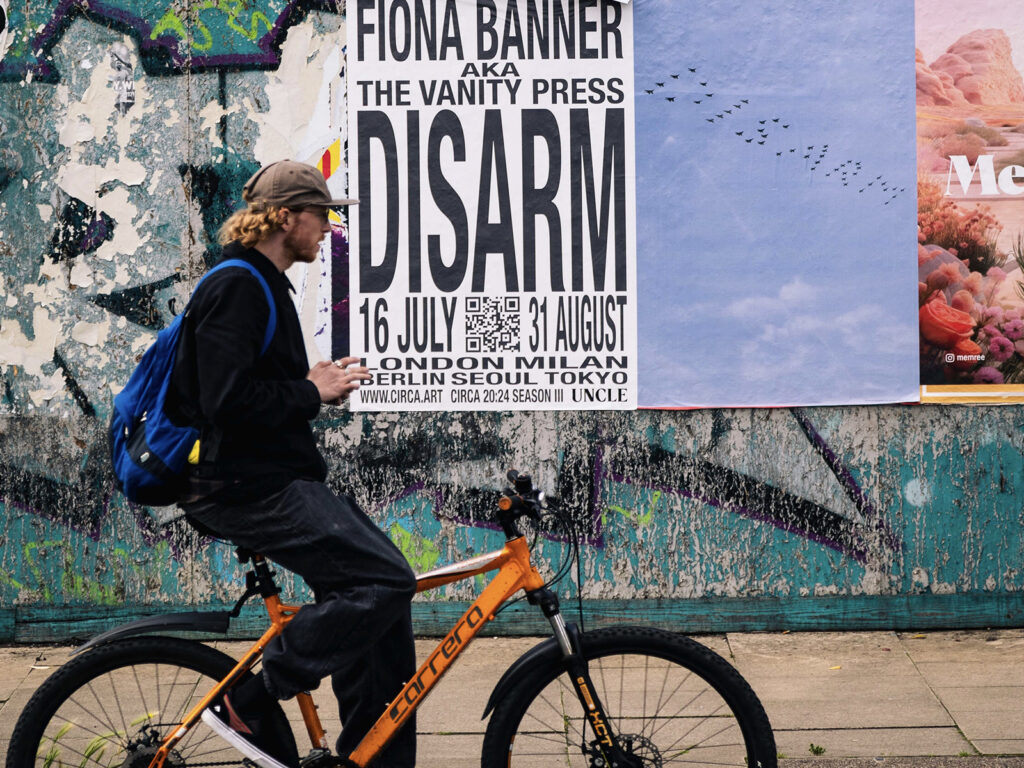
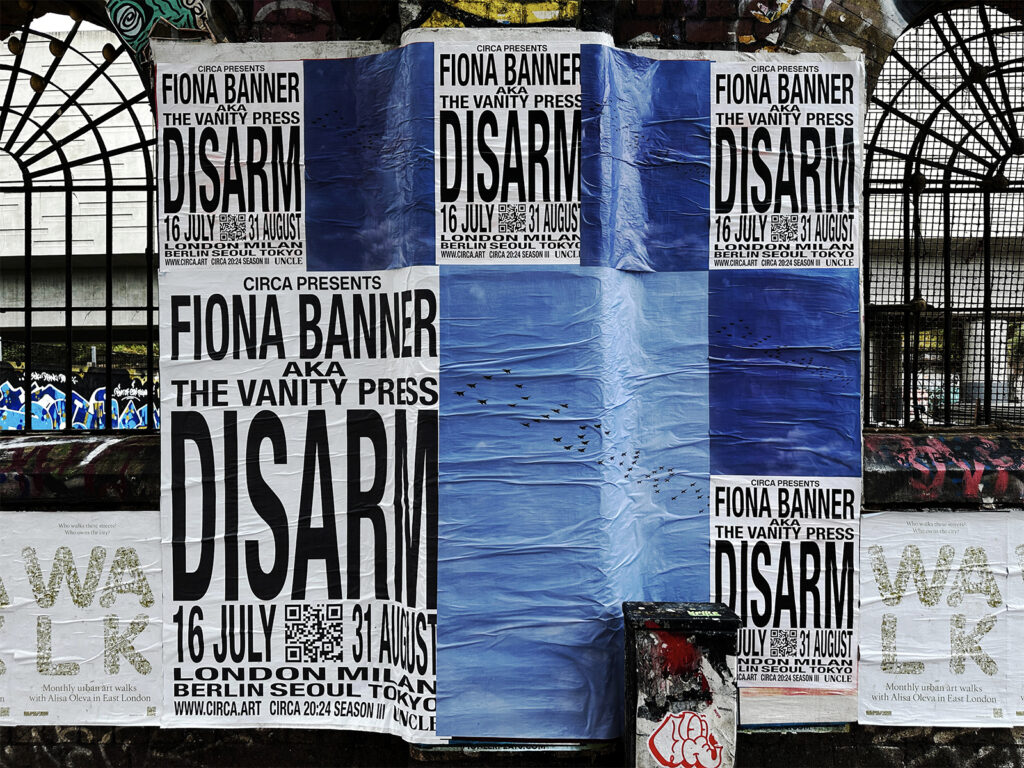
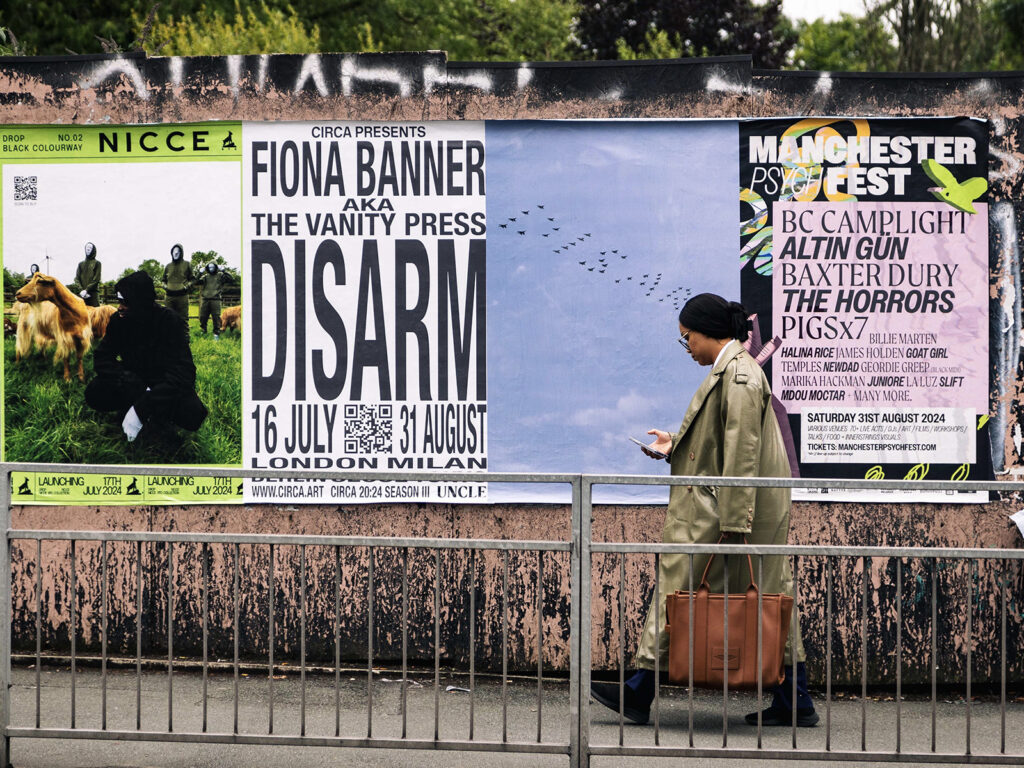
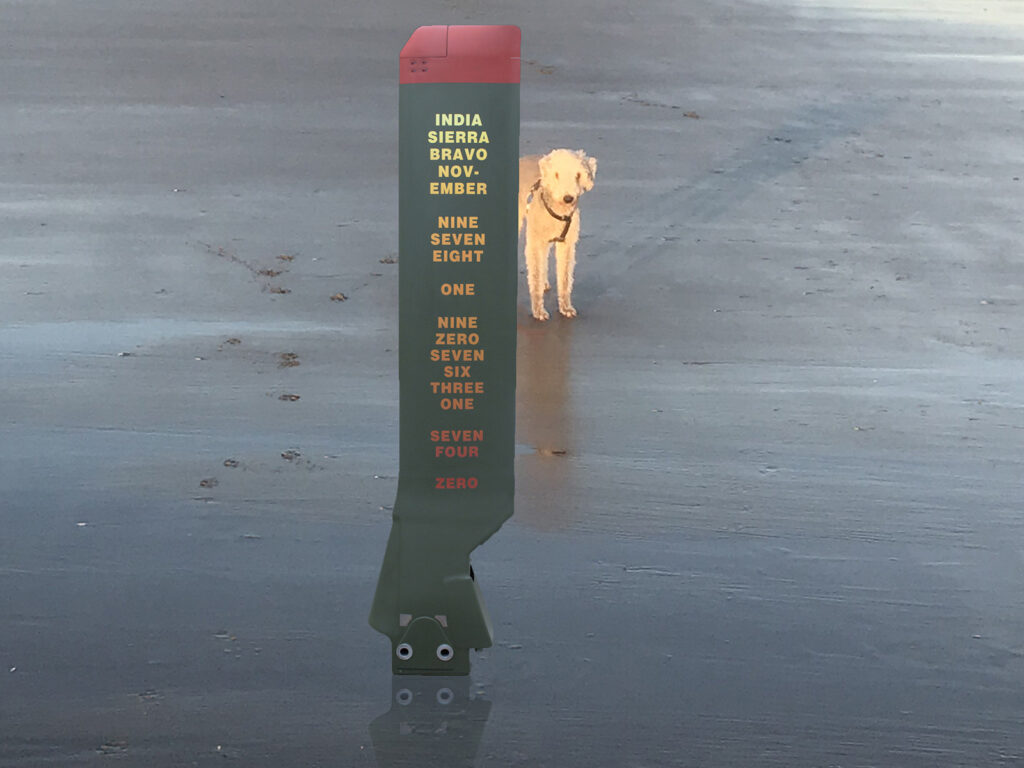
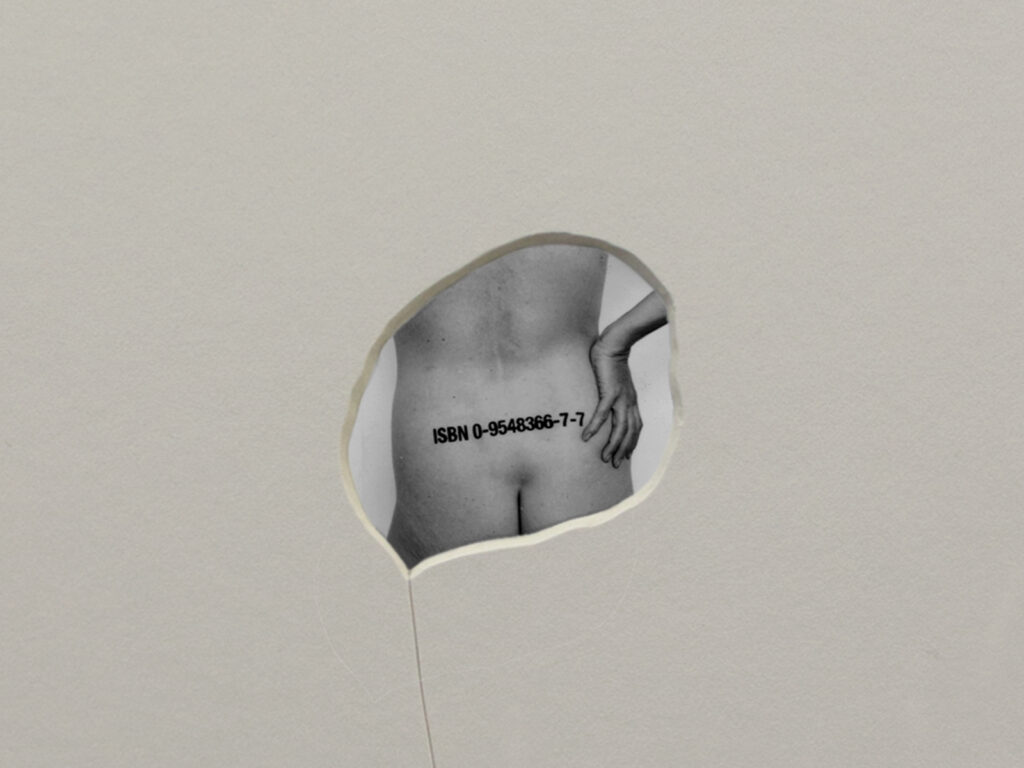
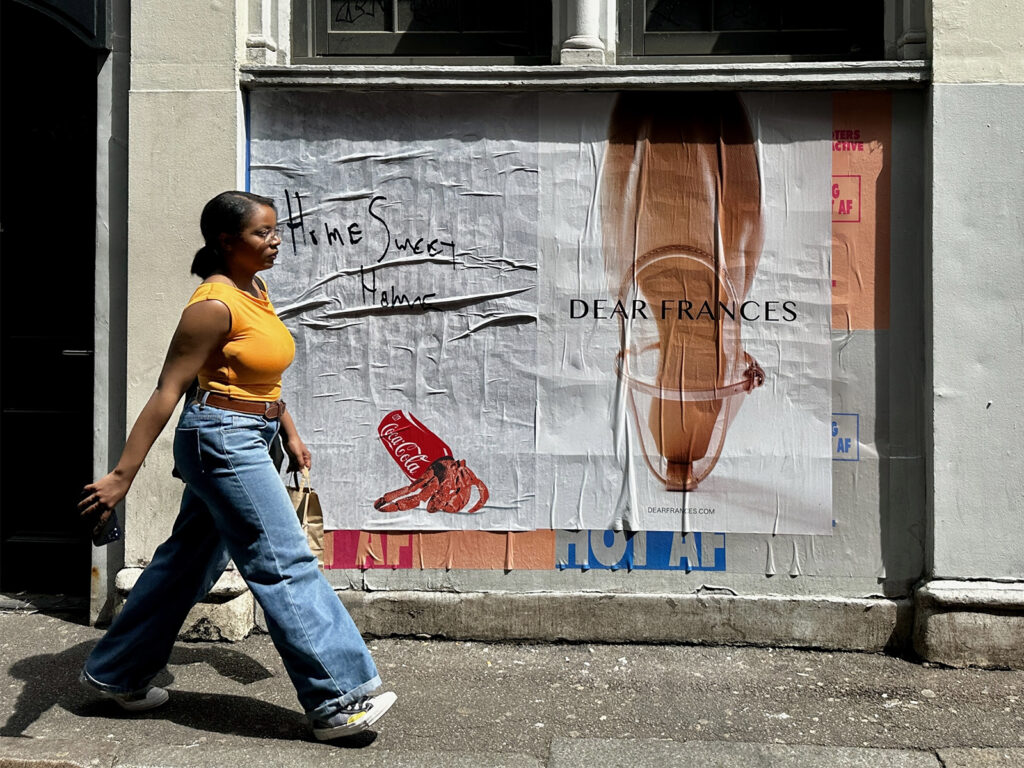
Hermit crabs are crustaceans that have evolved to occupy empty mollusc shells in a bid to protect their fragile exoskeletons. Only nowadays, when our oceans and hence beach habitats are heaving with societies’ discarded refuse, the crabs have been forced to make bottles, cans, plastic cups, and the like their mobile homes.
The sight of such vulnerable, other worldly creatures coupled with detritus born of our neglectful consumer society is more than unsettling, it feels palpably wrong. It’s damning evidence that commerce always seems to trump any sense of stewardship, of care for planet earth.
Observing this sorry situation, artist and curator Olly Walker has pursued an ongoing sticker, paste-up and now, courtesy of UNCLE, a poster project featuring hermit crabs emerging from branded cans.
Placing these misfit chimeras on sites of urban development, they become a pointer to and metaphor for gentrification and displacement. A nauseating sign of global corporations and financial imperatives relentlessly impacting not just the natural world but all our lives.
“It’s originally based on my experience of living in Hackney and seeing how residents have been systematically driven out of their homes and neighbourhoods by property developers whose only real focus is on profit at the expense of the local people and infrastructure that once sustained thriving communities,” the artist opined. “And this is happening to poorer, marginalised people in major cities across the world. The hermit crab artwork is a visual objection to the blinkered attitude of these developers and planning regimes. It’s a protest against wanton destruction, not just of tangible amenities like bingo halls, pubs and community centres but also peoples’ historical, social bonds to the places where they live and work, neighbourhoods they’ve grown up in.”
We caught up with Olly to chat about his HOME SWEET HOME project but also his long involvement in many creative projects.
HOME SWEET HOME IS AN ONGOING PROJECT WITH POTENTIALLY MANY ITERATIONS. CAN YOU TALK ABOUT THE VERSION THAT SEES THE CRAB CAUGHT IN A MONTANA GOLD AEROSOL SPRAY CAN?
In the 1990s and the noughties London’s East End was a magnet for street artists from all over the world. In a time before social media, it was word-of-mouth that drew people to come and see new, exciting work.
THE AREA HAS CHANGED A LOT SINCE THOSE DAYS…
Yes, new buildings have sprung up everywhere and walls which were once available to paint on have either disappeared due to development or have been taken over by street art agents.
SO, WHAT WAS ONCE AN INDEPENDENT PAINTED STREET ART, PASTE-UP AND GRAFFITI SCENE HAS BEEN REPLACED WITH WALL MURALS THAT MAY BE TECHNICALLY CLEVER BUT BASICALLY, THEY’RE JUST ADVERTS?
And my Montana Gold crabs ‘intervene’ on these mural adverts. Again, it’s a comment on gentrification but also, it’s a reminder that corporate displacement is not just about the loss of housing, it’s about the materialistic co-option of our urban environments and the effects that can have on social and mental well-being.
YOU’RE AN ARTIST AND CURATOR, WE’VE ESTABLISHED THAT, BUT YOU’RE ALSO A STREET ART AFICIONADO, A DESIGNER AND PRODUCER (WHO HAS WORKED ACROSS BOOK, FILM AND FASHION WORLDS). COULD YOU TELL US ABOUT A FEW OF THE ‘HIGHLIGHTS’ (AND EVEN PERHAPS SOME ‘LOWS’) OF YOUR LONG AND RICHLY VARIED CAREER WORKING IN THE ARTS?
Yeah, some of those [early] experiences were great. I was designing books for Steve Lazarides [publisher, photographer, collector and curator who was instrumental in popularising street art] and that included meeting the artists. So, I got to meet JR, Vhils, Paul Insect I already knew, Ben [Turnbull], that’s how we met, and erm, Johnny Yeo who’s just painted the king! When you get to meet these artists and you witness their work ethic, that was what spurred me on to go down the street art route really and slowly move away from some of the corporate work that I was doing.
I was lucky to have those experiences, without meeting those artists you’d never get to see the other side of how all that works and how amazingly inspiring they are.
IS THAT THE ORIGIN AS WELL OF HOW YOUR STENCIL AND STREET ART POSTER BOOKS CAME ABOUT?
Yeah, that happened through a contact at Laurence King [world leading publisher of art books] who’d sort of seen what I’d been doing and we just came up with the idea of doing the stencil books. And once again that involved working, albeit remotely, with forty of the best artists in the world. Those experiences drive you on to be even better, more creative and produce more work. They also led to my curating, at the Saatchi Gallery, and Urban Nation [a museum dedicated to street art, graffiti and contemporary urban art] in Berlin so once again you’re in the company of some of the best artists in that field. You then take what you’ve learnt and apply it to your own work. And I think now I’ve reached a point where everything I do excites me. Because I don’t have a design studio to run anymore which means I don’t have to feed work into it that I don’t particularly want to do. I don’t have to pay wages, rents, all of that.
Currently I’m working with Katherine Hamnett on her huge campaign to get people out to vote, with JackArts, that’s an amazing opportunity. Likewise, I’m just getting this bespoke packaging together for a special record project with John Gosling to release Alexander McQueen’s fashion show soundtracks. Again, that’s exciting because they’re kind of unique projects. And so, I guess I’m lucky really to have these things sort of come at me. But, of course, you do have to do a bit of leg work. You have to put yourself out and about a bit. I don’t ever have to pitch for anything and the design world is full these days of people desperately pitching for work and that can be a bit soul destroying.
AND YOU PRODUCED A FILM NOT SO LONG AGO WITH DR.D?
The film side of it is brilliant. And that was another project where there was a whole crew of very talented filmmakers, you know, the DOPs [directors of photography], the director, the editor, they’re all highly rated in the industry and [during Covid] we were all out of work. So, I came up with the idea of working with Dr.D and it turned into an amazing project.
I think, strangely, one of the nice things about it is there was no money involved. Which meant there wasn’t any influence from a ‘client’ as such. No money equals freedom sometimes. And again, John Gosling did the soundscape for the Dr.D film. Suse helped too [Susan Hansen is Europe’s most cited street art scholar]. It was a coming together of very talented and enthusiastic people. Initially the film crew had never met Dr.D, or seen what he does. And they were blown away by being involved in the project, again the artist’s energy, commitment, and the work that he sites in the streets, it changes the way you think about not just the street art and activism, it offers you another lens through which we can experience the city and the social issues that arise there.
ANY LOWS?
It’s not really a low as such but one thing that does piss me off is when people don’t proofread copy properly! Apart from that, it’s all good.

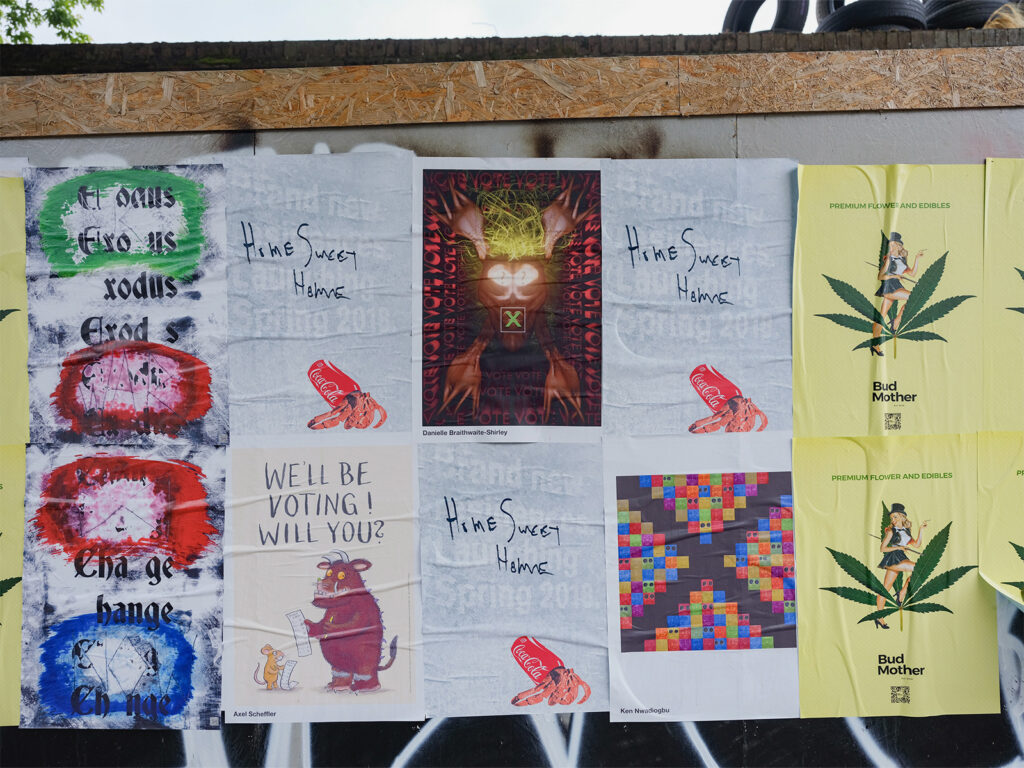
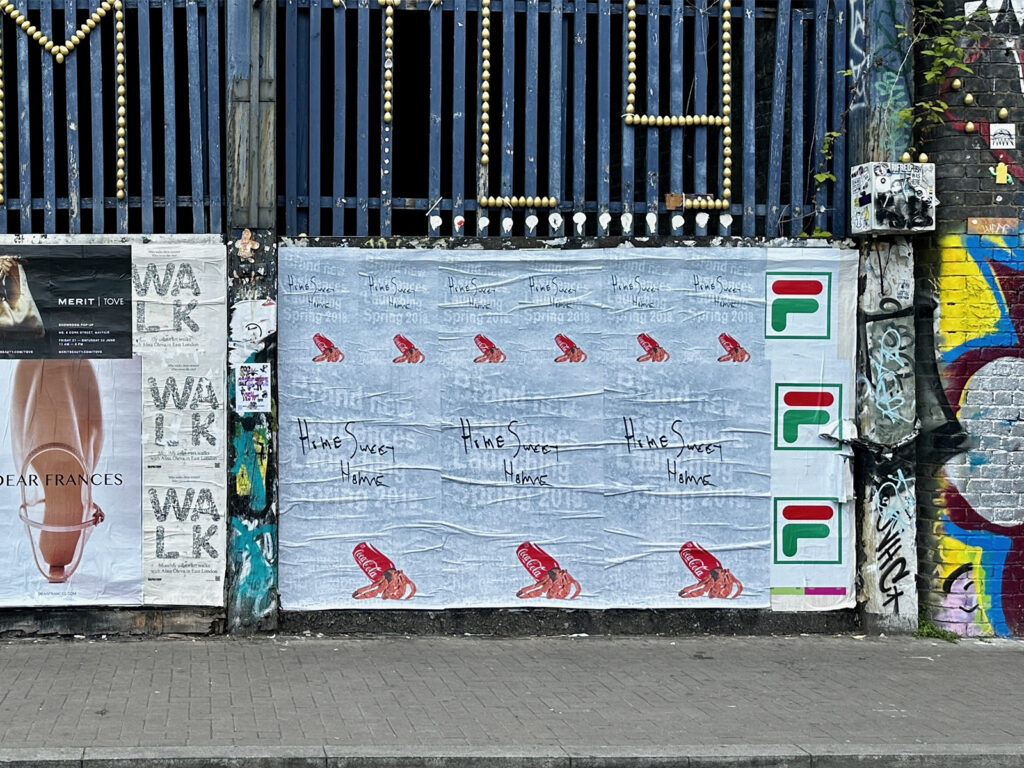
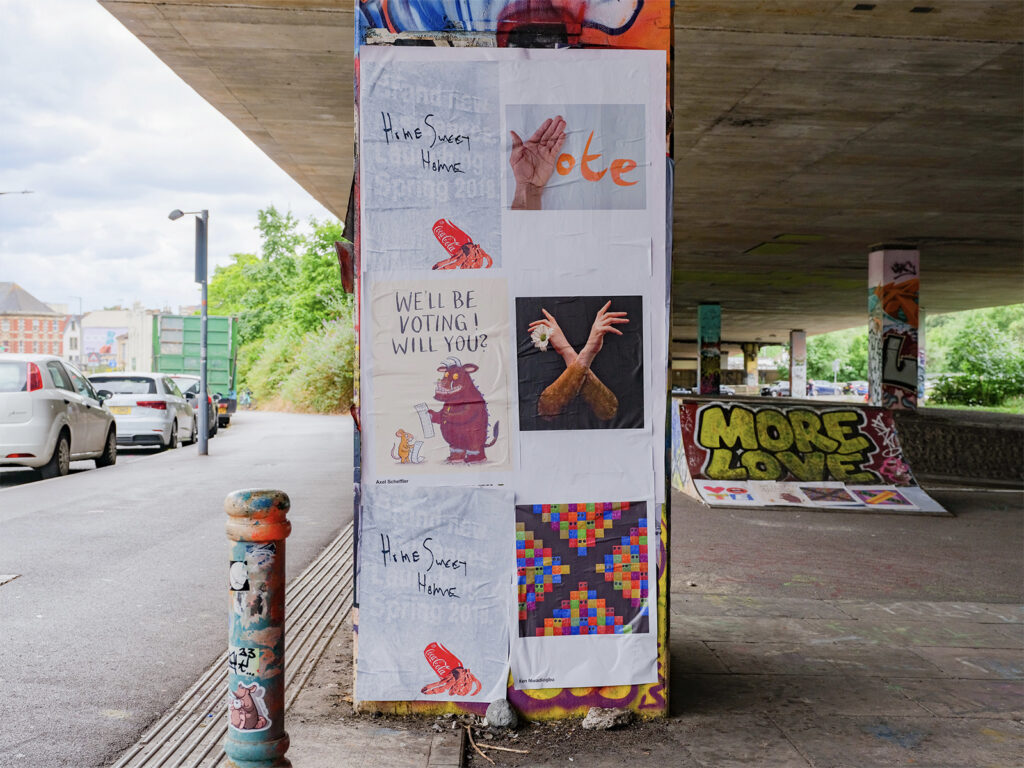
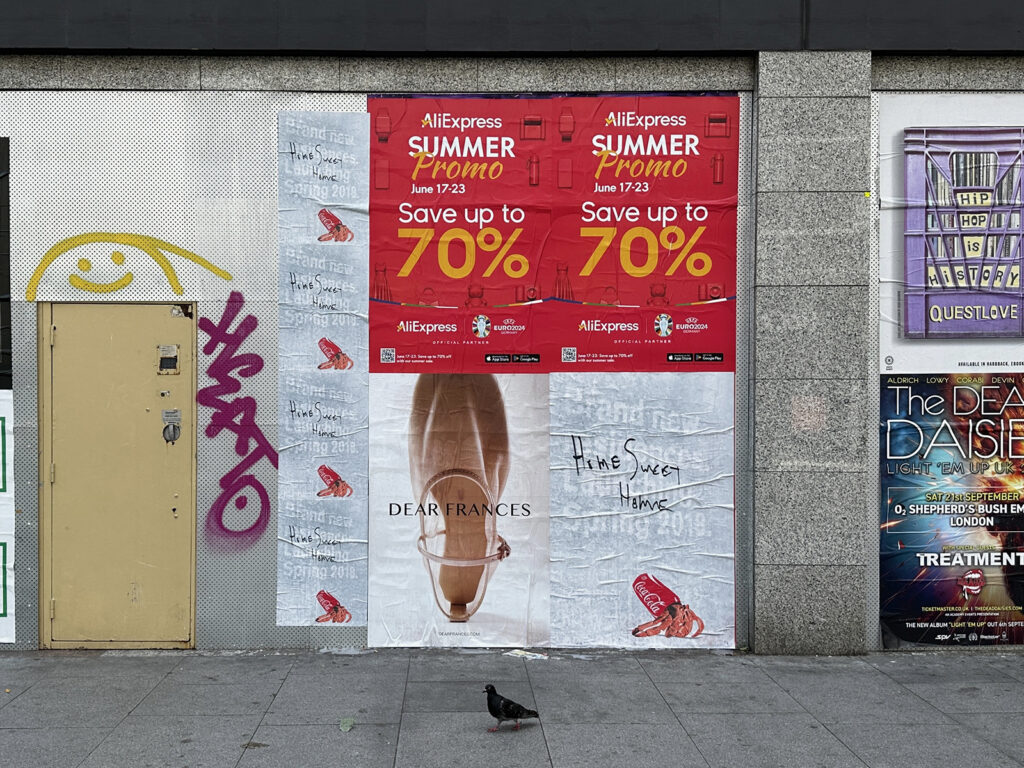
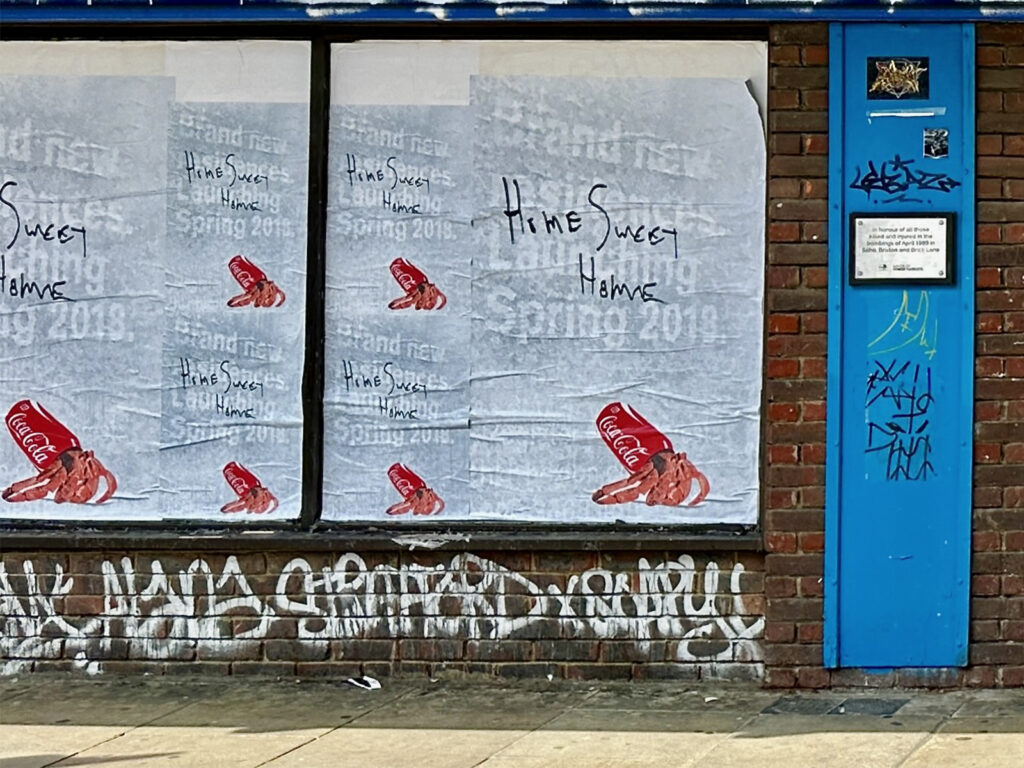
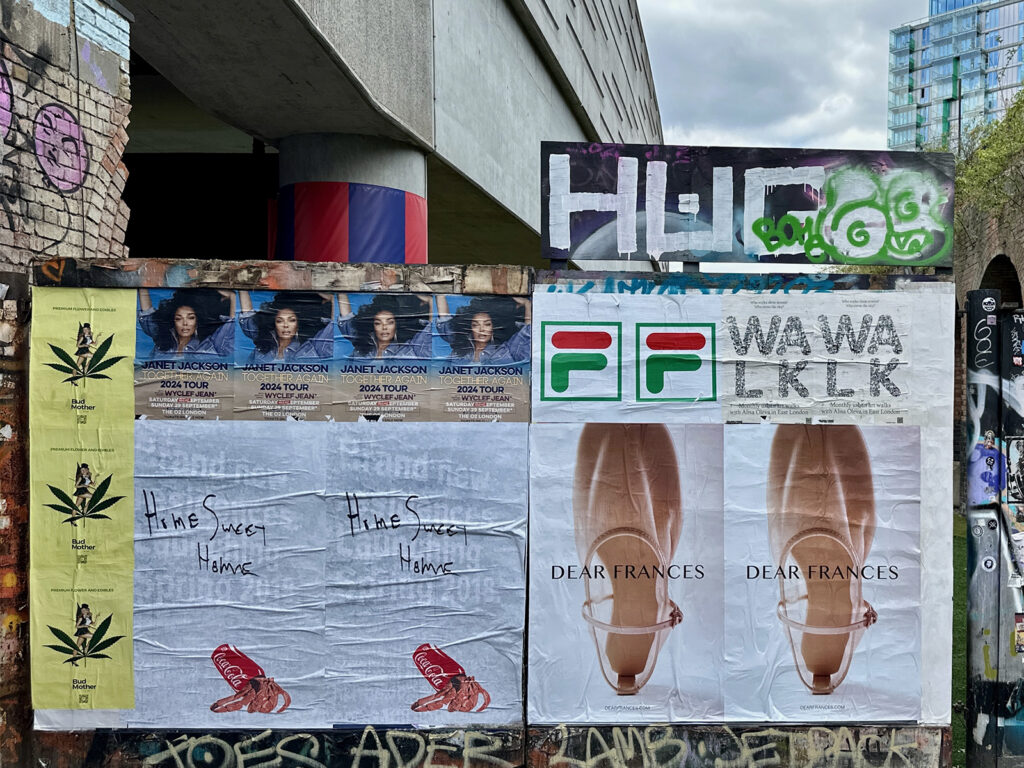
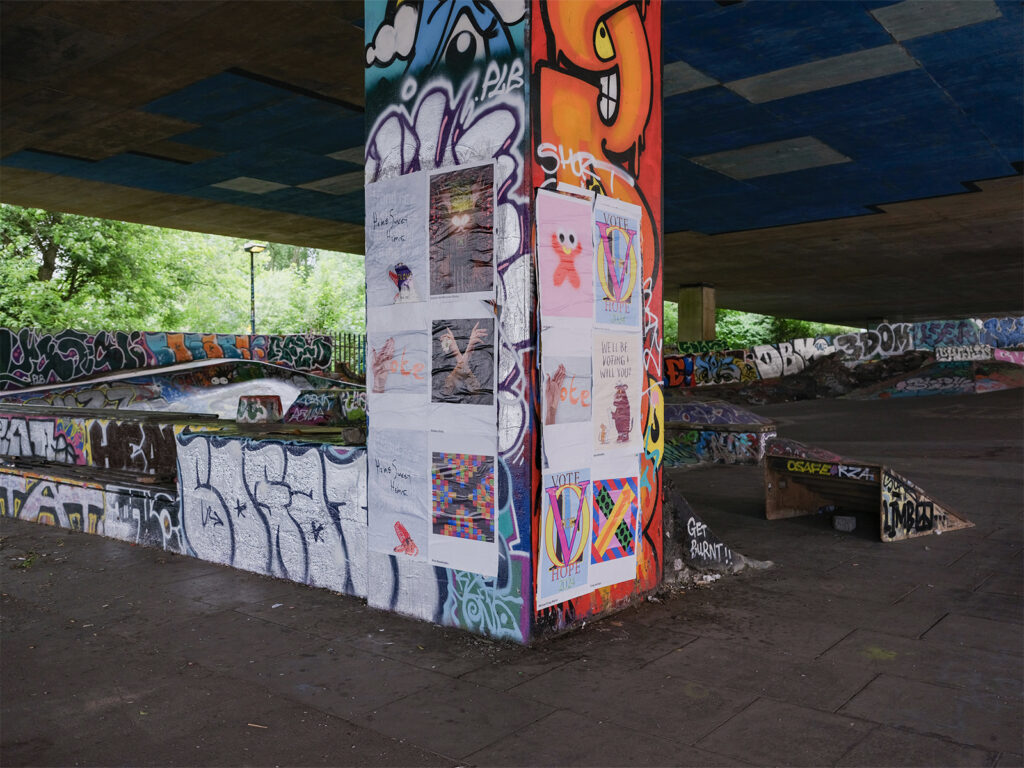
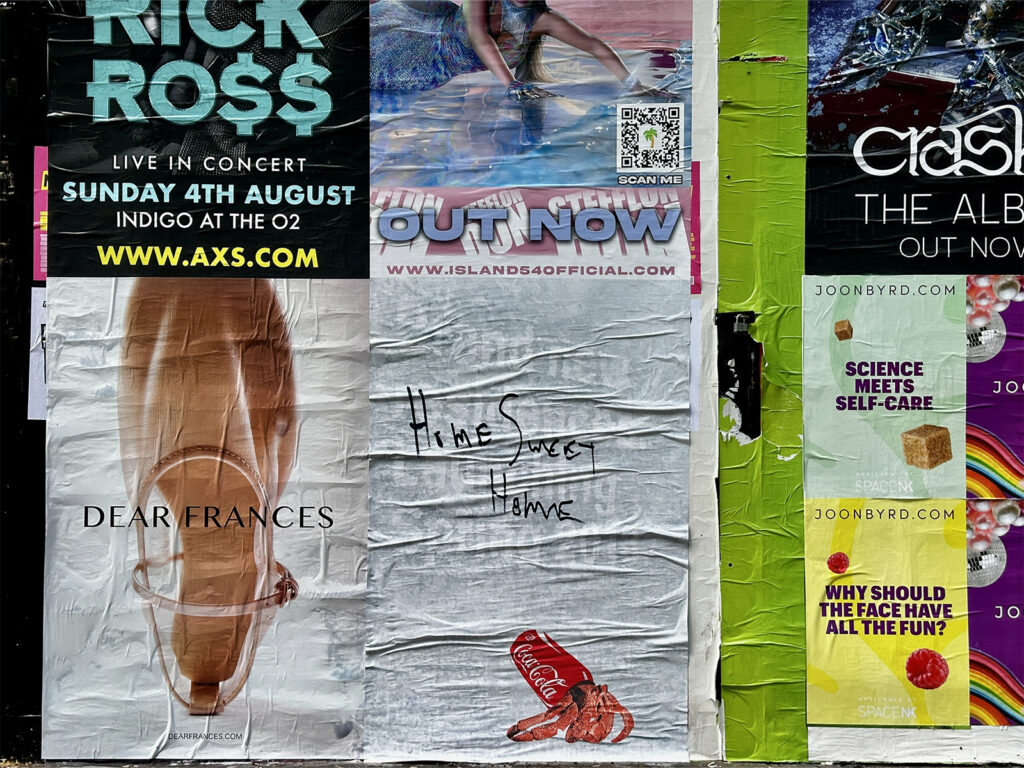
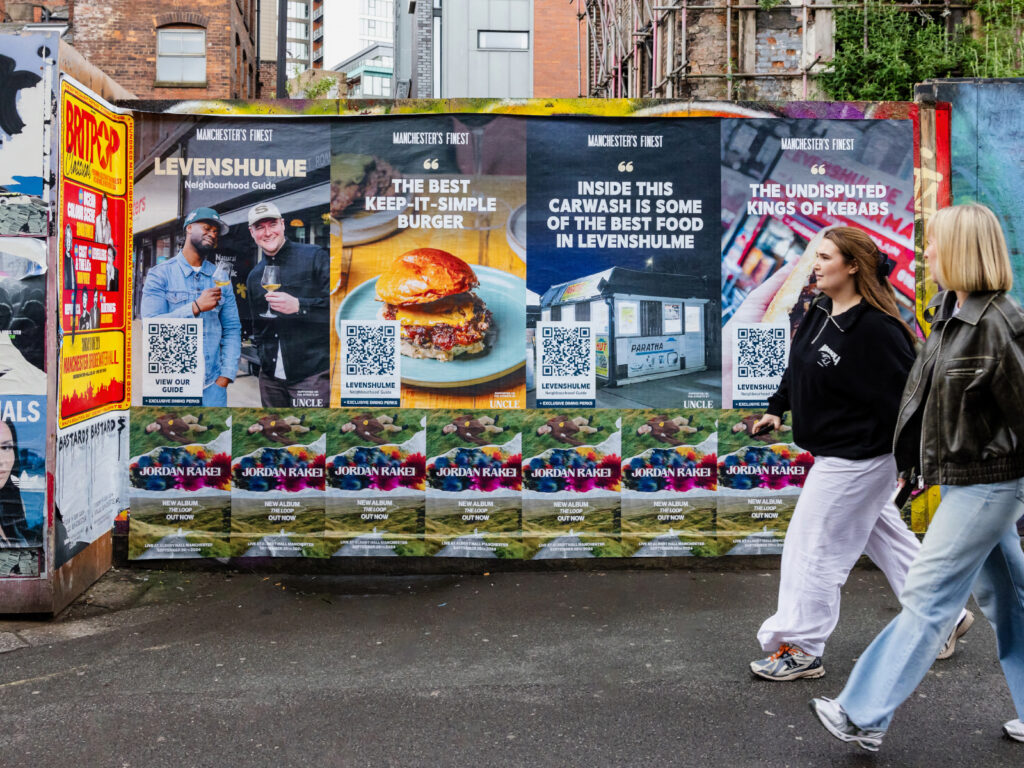
Manchester’s Finest began over a decade ago as a small passion project, aiming to highlight the best independent lifestyle venues in Manchester. Now they have grown to be a universal hub that people flock to for recommendations across the city. This is done through their various online channels amassing hundreds of thousands of followers respectively. This organic growth underscores the public’s appetite for genuine, localized experiences and the valuable role Manchester’s Finest plays in meeting that demand. UNCLE will be continuing to partner with them over the coming months to elevate their presence on city streets.
Their usual process of selecting featured establishments is both dynamic and community-driven. There is no strict formula; instead, selections are made based on personal experiences, team discoveries, and audience recommendations. The team members and local residents continuously scout for fresh and exciting places, ensuring they provide honest and firsthand reviews. This hands-on approach allows them to maintain authenticity and reliability in their recommendations.
This poster campaign highlights the district of Levenshulme, described by the team as “a really fascinating microcosm of what’s great about the whole city”. The reasoning and importance behind this selection is discussed in the following interview we did with the team along with the cultural emphasis of the brand and how they are able to showcase the city’s unique blend of tradition and modernity.
HOW DID MANCHESTER’S FINEST BEGIN?
Manchester’s Finest started out as a passion project over 10 years ago – it was a simple blog that we used to spotlight independent lifestyle venues we loved. It turned out that what we were doing really resonated with a community that started to develop – people were eager to explore and engage with what our city had to offer.
The blog quickly grew into multiple social accounts and a website that now provides a trusted resource for anyone looking to get curated recommendations.
WHAT GOES INTO SELECTING THE FEATURED ESTABLISHMENTS?
There isn’t really one set rule on how we select places to feature. It can come from good personal experiences or from recommendations. We have a weekly series ‘Suggested By You’ where our audience hits us up in social comments and DM’s to tell us about food and drink spots we ‘must’ visit – it’s a really popular series that one – and we’ve been to so many places we hadn’t previously tried because of it.
We’re always out there ourselves though, trying everything first-hand. Our team all live locally and are constantly sharing intel on new places they spot that are opening or where they’ve been out to eat, drink, shop etc… We enjoy the food, we chat with the owners, we get the vibe of the place. This way, we can tell you honestly what’s really worth checking out. It’s a tough job, but someone’s got to do it!
WHY IS IT IMPORTANT FOR YOU TO CHAMPION INDEPENDENT SPACES?
Supporting independents is crucial for us at Manchester’s Finest because these places are what give our city its unique character and charm. It’s something we’ve done since the start – independents are the lifeblood of the city and pioneer innovation, offering experiences, products and services that you don’t find in larger chains. They bring the creativity and variety that makes our city such a vibrant and diverse place to be.
Championing local businesses also has a positive impact on our community – these places are owned and operated by people who care deeply about our city – they contribute not just economically, but culturally and socially as well. By supporting them we help maintain a thriving local economy and ensure that important resources stay here for the enjoyment of everyone.
Our team also love it when we’re privileged enough to share in the journey of growth and success for a local business, as well as owners and ventures that come from outside the city and make it their home. There’s a real sense of camaraderie and support in Manchester that makes it a unique city.
DO ALL YOUR SELECTIONS HAVE SOMETHING IN COMMON?
In terms of the literal selections, places can vary greatly in what they do and offer – one moment we could be in a rustic café, the next at a gig or craft workshop, or in a Michelin level restaurant – but what they all share are the same core attributes – passion, integrity, and great at what they do.
TELL US ABOUT LEVENSHULME?
We think Levenshulme is a really fascinating microcosm of what’s great about the whole city.
The A6 is one of the main roads here (famous for being the 192 late night bus route!) and it runs right through the centre of ‘Levy’ which was historically a more working class (read ‘cheaper’) part of South Manchester to live in compared to places like Didsbury.
Levenshulme’s been through huge changes in recent years – a familiar story but a large influx of artists and creatives as well as other communities moved to the area for lower rents or to get a foot on the property ladder. So now you’ve got a generation of people who’ve grown up there plus immigrants and newcomers from a range of backgrounds – Asian, British, French, Indian, Italian, Irish, Jamaican, Lebanese, Turkish. These diverse cuisines and cultures all jostle against each other alongside the more ‘old school’ classic joints that are mainstays – traditional greasy spoons, working men’s clubs and heritage sites like The Antiques Village all within a small easy to navigate radius.
WHY DID YOU CHOOSE TO HIGHLIGHT THIS AREA FOR THE CAMPAIGN?
Last year we launched our new ‘Places’ directory, to be a useful resource on our website for our audience and visitors to the city by curating all our recommendations in each Greater Manchester neighbourhood. So these new ‘Neighbourhood Guide’ campaigns are a natural extension of that – we pick some of the best spots and delve a bit deeper and behind the scenes with our video crew, a presenter and someone who lives in the spot we’re focusing on.
We create written and visual content to really get under the skin of a place. Levy seemed a good place to start for all the reasons above – but we’ll be covering more soon.
TALK US THROUGH THE POSTER DESIGN?
We just kept it simple and selected highlights from our video guide to make statement headlines and grab people’s attention. Then when you scan the QR code you get to watch our full video guide.
WHAT’S NEXT FOR MANCHESTER’S FINEST?
We want to get out more, away from our screens, to create our own events and meet our community in real life. We’ve been running a BBQ and music festival ‘Live From the Grill’ for the past two years which is a fun end of summer blowout that we want to scale up. And we recently launched a beer in collaboration with Manchester Union brewery – we definitely want to do more stuff like this – creative collaboration on products with local producers etc. We’re not short on ideas… just time!


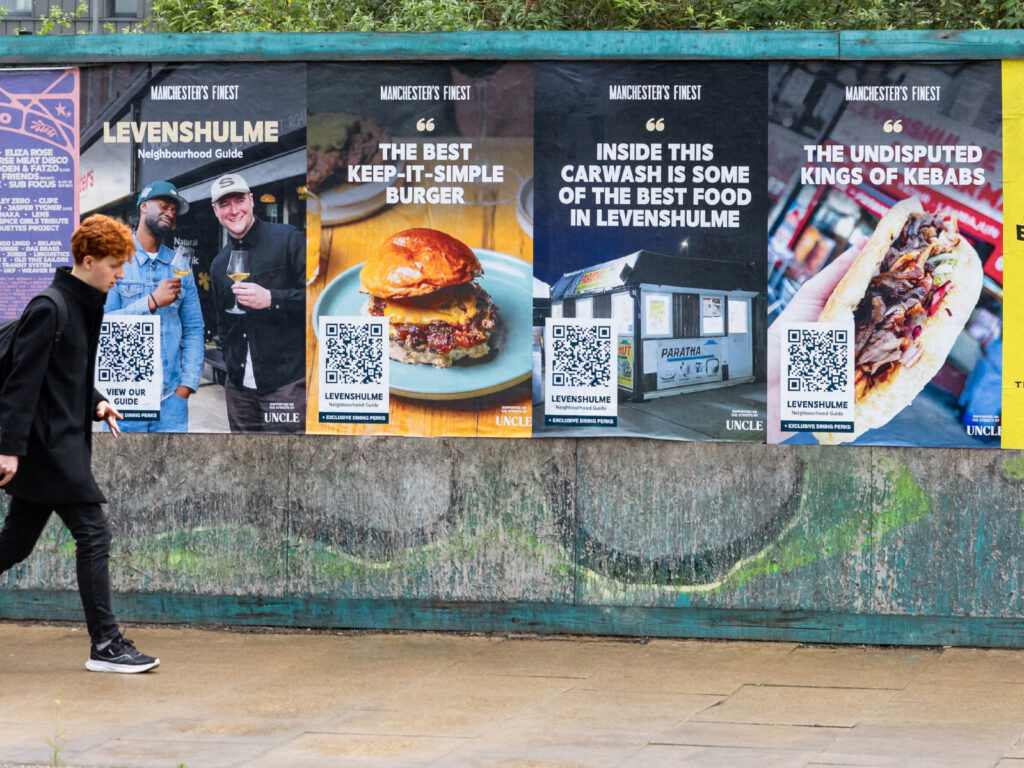
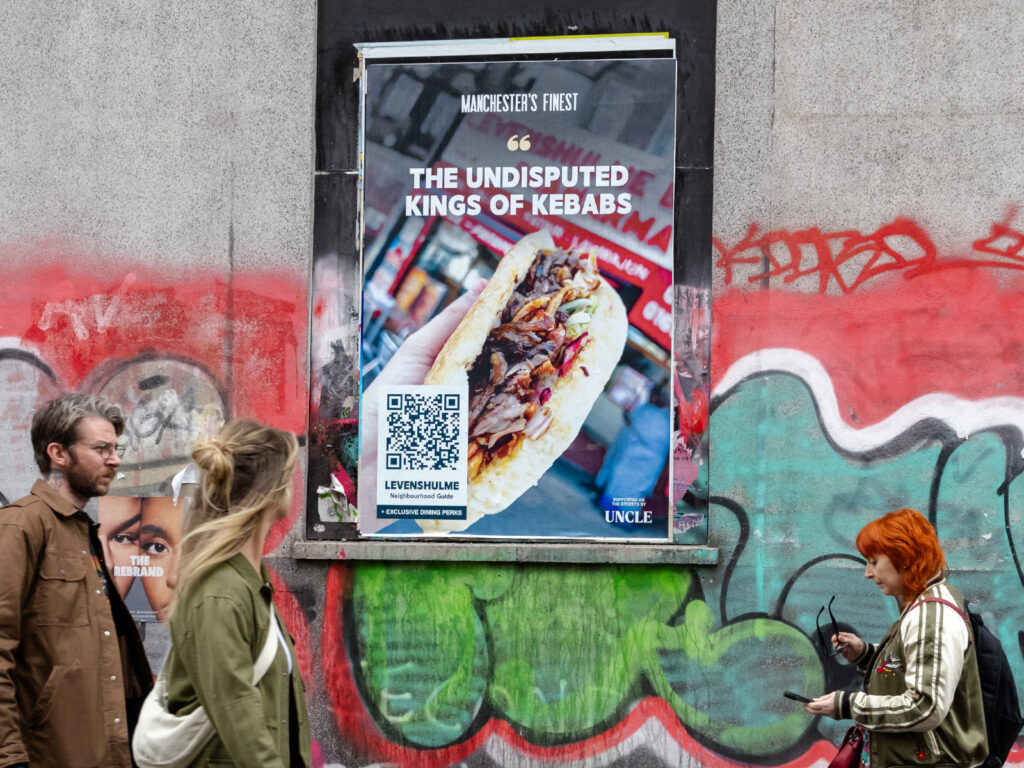
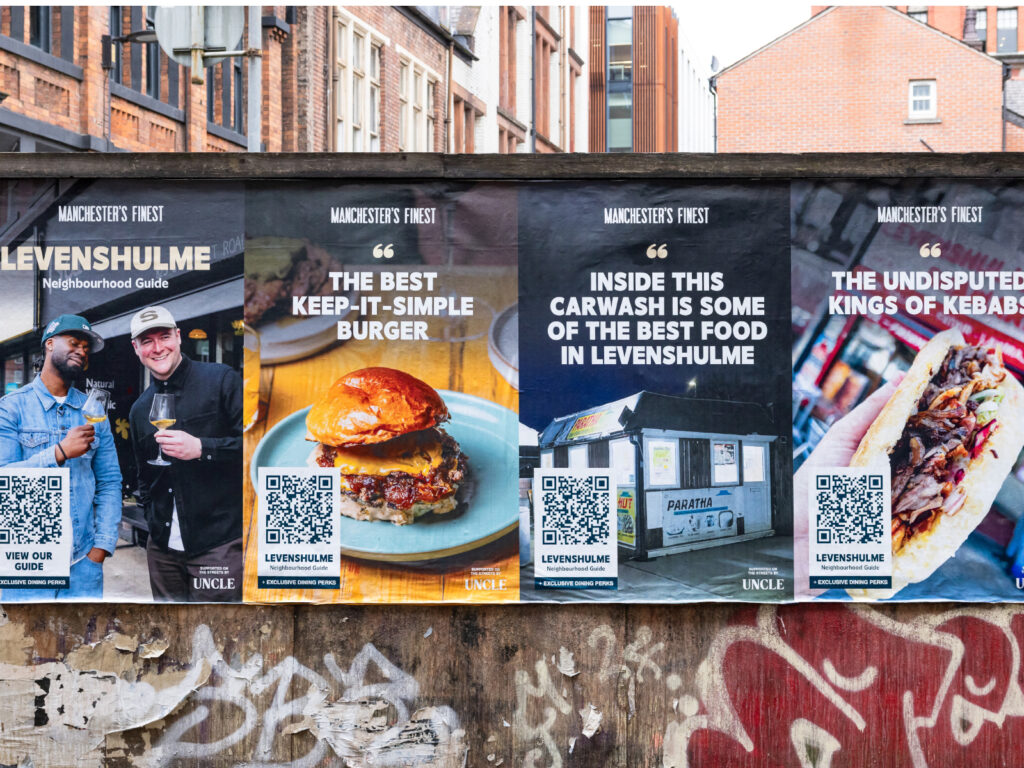
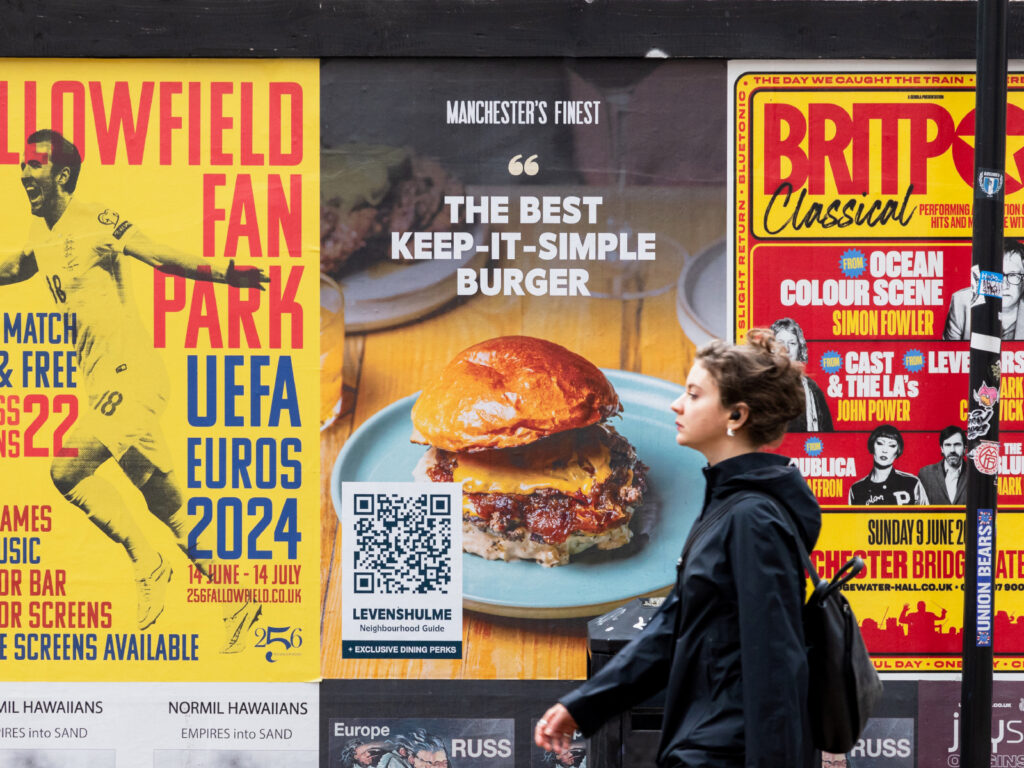
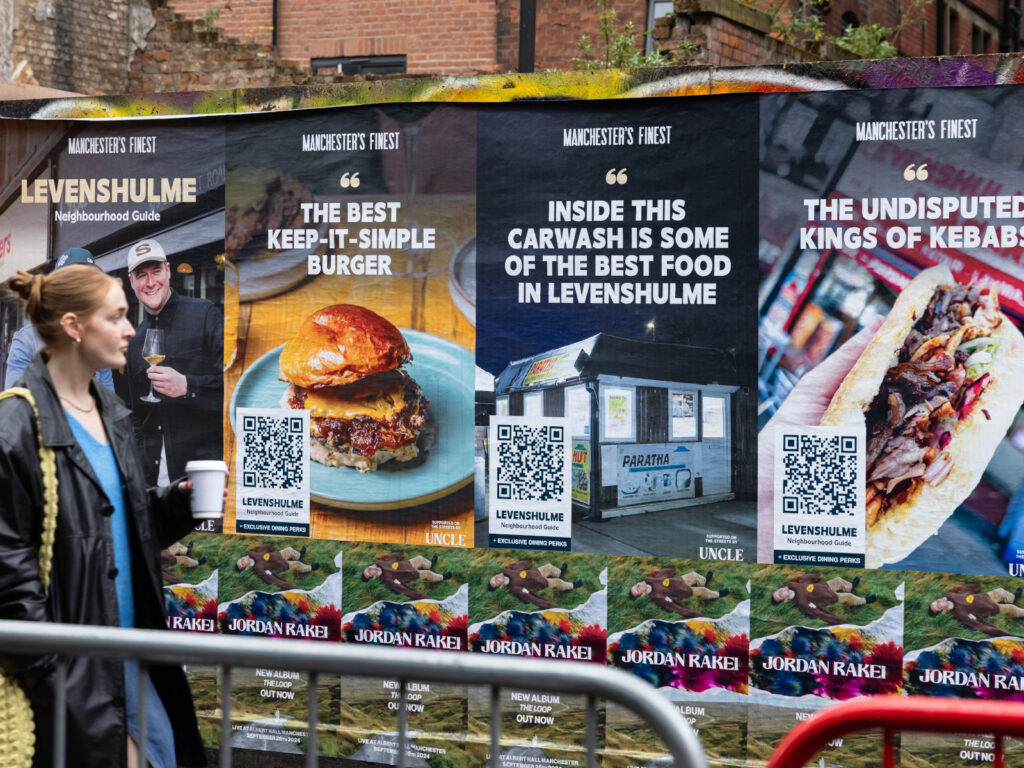

In just a couple of hundred meticulously argued and illuminatingly illustrated pages, Postdoctoral Fellow in Cities and Urbanism Sabina Andron has produced a book that examines, challenges, and radically reorientates the possibilities of engaging with our urban environments, and thus to experience cities in entirely new ways.
As set out in the introduction to Urban Surfaces, Graffiti, and the Right to the City, “Cities code an incredible amount of information in their publicly displayed signage and in the ways they present themselves through their surfaces. When we move through cities, read about them, or watch them on the screen, we constantly decode these signs and interact with urban surfaces. We employ them, and they guide us. We protect them, and they inform us. We beautify, vandalise, and clean them, and they remain indispensable to urban rhythms, affirming the presence of bodies in the city. City dwellers, government, commerce, art, weather, pollution, law – all these bodies need surfaces to communicate, and their messages are stored in the archive of the urban surface.”
Andron’s landmark text breaks down into four main areas. Semiotics is defined as the study of both the production and interpretation of signs and symbols and the first section of the book, titled Surface Semiotics: A Manual for Knowing Surfaces, introduces us to fresh ways of viewing all manner of urban inscriptions, and not just in spatial, visual and material terms. What the author also shares are interpretive tactics through which we can better read and understand the multitude of entangled images and texts that surround us. And what’s also revealed are underlying issues to do with agency, order, justice, and power, etc., that are variously denoted by so many forms of often overlapping inscriptions that populate our urban surfaces. And, of course, we’re not just talking about ‘writing on the walls’, but building elevations and facades, fences, billboards, street furniture and all the other publicly accessible and visible boundaries in our cities. By the end of section one you may find yourself conducting an interview with an urban surface, and it turns out this can be a conversation that ultimately says as much about the interlocutor as it does about the city.
Section two, Beyond Art and Crime: A Critical History of Graffiti and Street Art is an exhaustive investigation. Academic, literary, public, administrative and media attitudes are examined to arrive at much more nuanced consideration of this historical and contemporary phenomena. Andron argues that graffiti and street art’s valorisation and celebration – be that through coffee table publications, walking tours, absorption into the fine art gallery system, online forums, co-option by property developers and tourism – has turned what can be seen as democratic and inclusionary urban visual culture into one of “signature and authorship, stabilising the practice institutionally and making it easier to predict and monetise.” Time and again what’s so informative and refreshing about Andron’s approach is her willingness to counter hitherto accepted views – be that aesthetic, literary, sociological, political, etc. – about her subject. And she very effectively counters tired binary formulations re. graffiti and street art such as, “Is it crime or is it art?” It turns out neither of these pigeonholes take us anywhere useful. Andron teases out the much more productive categories of “communication, engagement, urban language, spatial practice, cultural production, multimodal expression, emplaced occupation, public discourse, networked semiosis, surface politics – all of these and more, just not art or crime.”
In section three of her book Law and Graffiti: Property, Crime and the Surface Commons Andron takes us on a deep dive into that “most turbulent of locations”, the surface lawscape. Andron calls out the ‘broken windows theory’ as lacking proper evidence to support links between (surface) disorder in neighbourhoods and links to serious crime. And while she argues that contested urban surfaces illustrate links between property, exclusion and public order, “they also represent political possibilities of establishing an urban commons and a claim to the right to the city.” Urban surfaces may be municipally or privately owned but “they expand through public use, generating new spaces in public sight like an open-source book of urban production and participation.” In the constantly evolving, multiple and simultaneous occupation by signs, tags, stickers, posters, pavement sale paraphernalia, etc., etc., in this fight for visibility, Andron discerns in the agglomeration what she refers to as a form of surface justice. It’s the very precarity, the ongoing jostling for conflicted space, that perhaps counter intuitively affords ongoing cultural and political value so that, in another neat reversal, surface activity that might be deemed antisocial, criminal and threatening instead becomes “socially and creatively engaged contributions to the surfacescape.”
Section four of the book Leake Street London: Legal Walls and Deep Surfaces is a distillation and further development of a project initially undertaken in 2013. The author identified ten different sections of wall in a legal graffiti tunnel running underneath the former Eurostar terminal at Waterloo station, visiting and photographing the changing scenes every day for a hundred consecutive days. It’s a tour de force of attention, visual and material, to painted layers inches thick in places. Andron goes on to say in her conclusion “From New York City trains in the 1970s to contemporary murals and graffiti layers in London’s Leake Street, the semiotics of surfaces not only reflects but also constitutes urban identities. Scribbles, placards, drawings, traces, white-washed walls, posters, signboards, and inscriptions are visual and material translations of the urban organism as complex, contradictory, plural, and chaotic as the city itself.”
UNCLE’s street poster campaign helping promote this scholarly, informative, surprising, and absorbing book is both a privilege and, in some ways, a symbiotic partnership. Like Andron, UNCLE sees urban surfaces as sites to ‘read’ and ‘write’ on, opportunities to contribute to the seemingly forever mobile conjunctions and to celebrate the rich publicness of our cities.
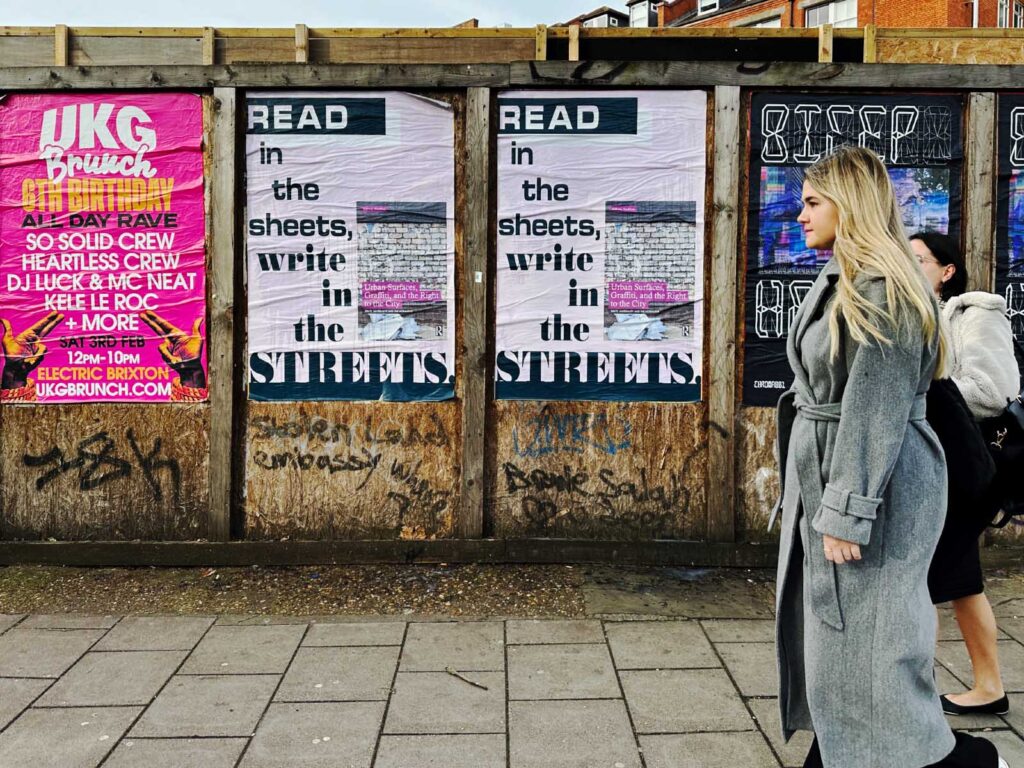



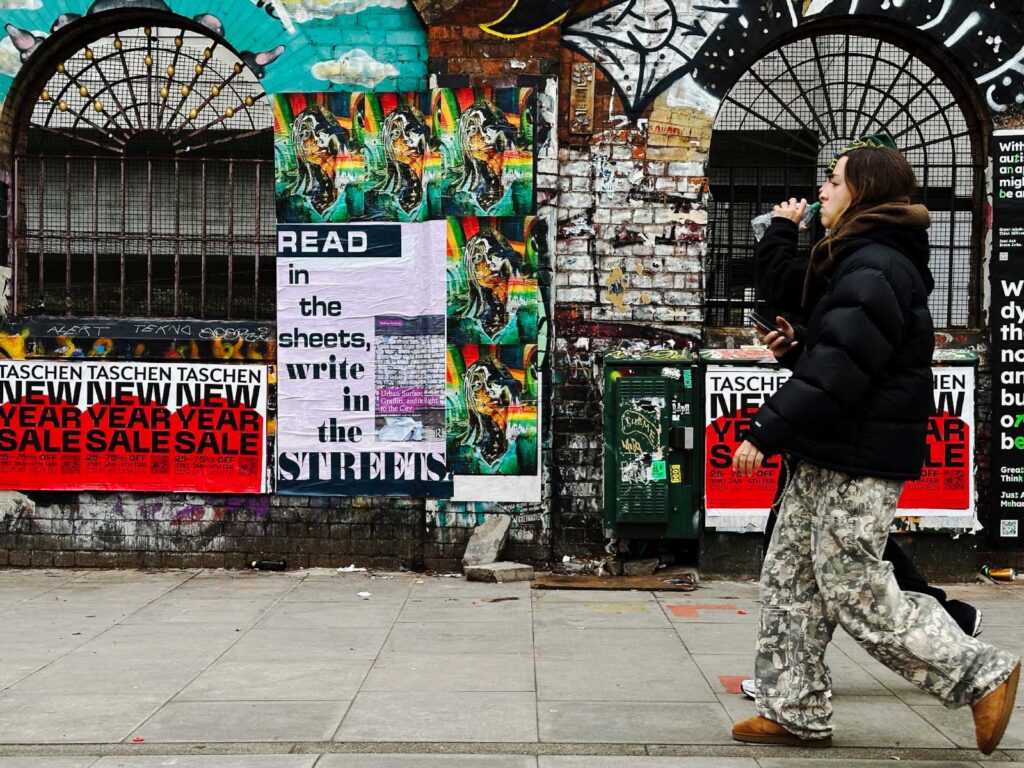
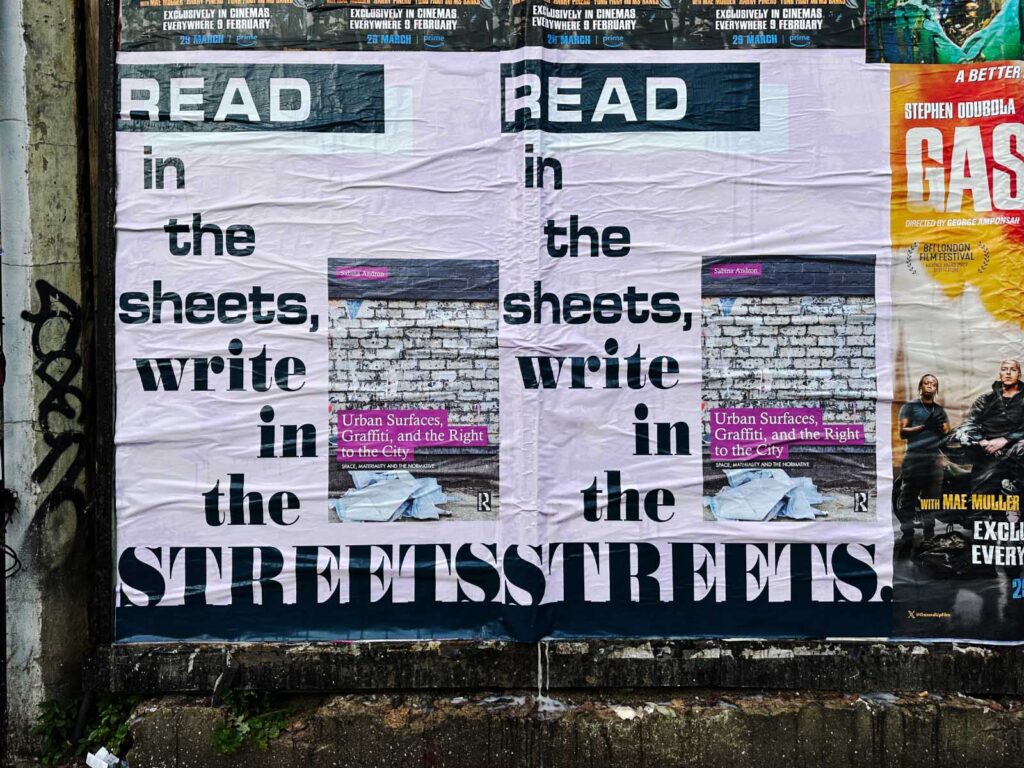
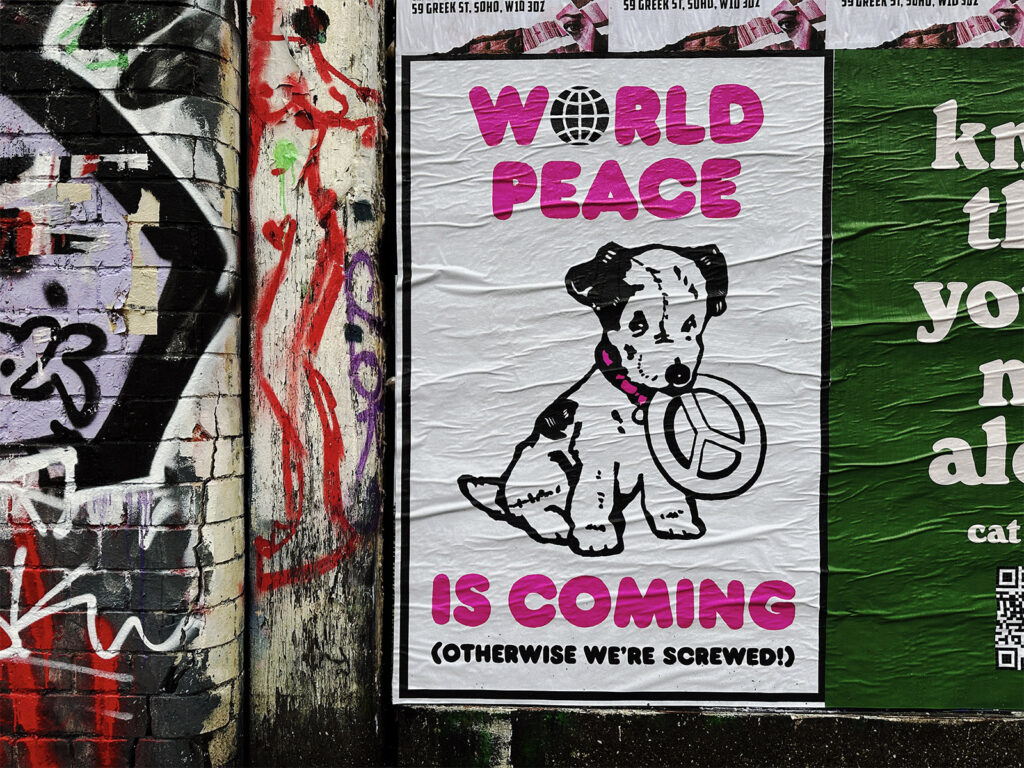
UNCLE has teamed up with flyingleaps artists’ street poster project to deliver a bit of wry hope and critical humour to a wall near you. UNCLE selected a brand new and achingly topical artwork by Archer as their 2023 festive message: ‘WORLD PEACE IS COMING (otherwise we’re screwed!)’ will be on display across numerous UK towns and cities.
In some ways it’s a heart-warming image, especially if you appreciate the unconditional love dogs can give us. Okay, it’s the just the hormone linked to positive emotional states present in both dogs and humans but hey, the world could do with a great deal more unconditional love. Dogs don’t go around inventing reasons not to get on, but it’s a trait humans excel in.
Sometimes with just a few deft brushstrokes and her superbly honed gift for wit and economy with words, Archer makes art that addresses the terrifying ironies of existence. Her paintings and prints are kitsch meditations that sometimes make you want to hold your head in your hands and weep at the gross stupidity of humankind. And at other times wonder at the innocence, the solace, the capacity for empathy to overcome the worst of us. Her work can untap hope as well as warmly warn against slipping into cynical despair.
And she manages to do all the above without being po-faced, preachy, or didactic. This is amply borne out by the name and impetus behind her most recent exhibition. In connection with Archer’s current show – ‘I Don’t Know’ at Helm Gallery, Brighton (9.11.23 – 24.12.23) – the artist explained, “The title is a perfectly valid response to just about any question. Embracing uncertainty leaves you open to a much broader experience of life, a bigger picture. For me, not knowing doesn’t lead to anxiety, rather to a sense of calm and a re-setting of my head to all of life’s possibilities.”
As the artist has kindly let us use one of her most recent works as UNCLE’s festive message, we thought it would be a good idea to have a catch up and chat IRL. Q&A here we go…
COULD YOU TALK US THROUGH YOUR CREATIVE PROCESS?
I like to have ideas lying around, they’re in notebooks but I’ve also got a lot of scraps of paper with one line or an idea, I don’t know how it’s going to evolve but at some point an image will collide with the text. Usually the text comes first but not always.
AND HOW DO YOU HANDLE CRITICISM OF YOUR WORK, WHO’S FEEDBACK DO YOU VALUE?
Criticism!? I don’t hang around to hear it. I’m sure it’s out there. Actually, the only place I’d hear it is social media. You know, I’ve had some stray remarks, or the odd sour commentator. Once in a while if I see the same name, I’ll remove them. If it seems they’re just there for sport rather than wanting to engage with the work. Regarding feedback that I appreciate, there’s a couple of my friends, and my children.
WHAT INSPIRES YOU, KEEPS YOU MOTIVATED TO MAKE YOUR PAINTINGS? AND YOUR PRINTS? HOW DO YOU VIEW THEM IN COMPARISON TO YOUR PAINTINGS?
Inspiration wise, I think it’s the news, modern culture, all of what’s going on around me. To put it baldly, it’s difficult not to think of the prints as a way of making money to pay for the painting. Painting is just such a slow, slow burn. In a year I might sell four or five. Another year I might sell one. You can’t live on that sort of money. Unless you’re super successful. But I was thinking earlier today, in a way not achieving huge financial success as an artist has been good for me. The way I think of my career is, I don’t want to use the word ‘failure’, but I’m certainly not up there with some of my male contemporaries. But, as I say, on reflection that’s probably been good for the way I think and the way I make stuff, because it doesn’t get in the way. I haven’t got a lot of money to think about. But then I don’t want to be on the phone to my accountant every day, being bothered with that, so there’s upsides.
HOW DO YOU HANDLE PROJECT DEADLINES AND TIME MANAGEMENT?
I’m very good at that, you know, everything else might be chaos, my studio is chaos a lot of the time. Deadlines? I think because I spent ten years as an illustrator, unhappily as an illustrator, I can do a deadline.
What’s been your experience of the business side of being an artist, dealing with people in that regard?
Well, in a word, it’s been tricky. Bloody tricky. I’ve had problems where people don’t want to pay me. And I’ve had problems where I know at the time I’m being ripped off, and then I discover a couple of years down the line you realise, no, you were really, royally ripped off. It’s quite a rare thing when someone comes to you and says, I really like your work and I want to be honest financially. Actually, it’s quite nice when people say, I haven’t got any money to give you but I want to use your work on this. It’s when people are underhand, I won’t name names but it’s a wind-up. So, it’s happened, and it keeps happening.
To offer some context, back-end of 2022 Magda had to finally sue several companies who were reproducing her work without permission. She won all the cases, but she explained this had been an emotionally and financially draining process. Obviously winning meant being awarded costs but there was very little by way of compensation.
You’ve recently teamed up with Jo Brooks PR – who works with Banksy, Lucy Sparrow (aka @sewyoursoul), David Shrigley, etc. – how do hope that will develop?
Well, if you read the small print as it were, Jo does the PR for Banksy and Shrigley but with Lucy and myself she’s our manager. And, as far as I know, she only manages female artists. How do I think it’s going to go? I think very well. Because she’s honest and a good person. And she’s funny.
HOW DO YOU BALANCE YOUR ART CONCERNS, ARTISTIC INTEGRITY IF YOU LIKE, AGAINST COMMERCIAL PRESSURES WHEN IT COMES TO COLLABORATING WITH OTHER PARTIES: FASHION DESIGNERS, BOOKS, MERCH., ETC.?
I’d say with the Marc Jacobs collaboration it went very well, they were very sensitive about how I felt, constantly saying, ‘What did I think about this, what did I think about that?’ If I didn’t like something, they’d take it out. Without any fuss. And the Idles book, Joe Talbot just said, ‘Do what you want.’ I didn’t believe him. Because people never really mean that, they say, ‘Do what you want, do what you want…’ But then they come back and say, ‘Ooh yeah, but don’t do that!’ No, I had to keep checking with Joe and he kept saying, ‘I like it all.’ Which you don’t hear very much, so you don’t believe it. Now the book’s out, and it looks great. I’ve described it as having like a ‘ready brek glow’, the imagery and lyrics resonate.
CAN YOU TALK ABOUT A PARTICULARLY CHALLENGING PROJECT AND WHAT YOU LEARNED FROM IT?
Well, again that would be the many years of illustration work, that’s why I’m not an illustrator, because I hated it. It’s just people pushing you around, grabbing the work and not even saying ‘goodbye’ or ‘thank you.’
HOW DO YOU HANDLE CREATIVE BLOCKS OR MOMENTS OF SELF-DOUBT?
I don’t have creative blocks. I might have a time, a period, when I feel flat emotionally. It might be exhaustion, it might be things that are kicking off around me with friends or family. And because I don’t particularly want to work with all these thoughts, I stop. I might still be in my studio every day, but I will stop making.
CAN YOU TALK ABOUT A PROJECT OR PIECE OF WORK THAT YOU’RE PARTICULARLY PROUD OF?
I’m proud that I’m still doing it. You know, what with all the other responsibilities of being a mother, running a home, you know, laundry, kids’ problems, blah, blah, blah. But despite it all I’m proud of myself for persisting.
You’ve collaborated w. flyingleaps artists’ street poster project several times since 2016 and this year your ‘WORLD PEACE IS COMING (otherwise we’re screwed)’ work’s been chosen as UNCLE’s festive message to the nation… What would you say about flyposting as a medium to show your art?
It’s become a favourite medium. Because, well, I’m not going to say it’s a leveller, and it’s a cliché to say it’s the street as art gallery but it is. People are not intimidated as they might be going into a fancy gallery. It’s there, and it’s public, and it’s sort of a bit ‘shouty’. I can’t fault the medium. I love it. I think it’s a collision between my background in graphic design and my wish to be considered a serious artist.
FINALLY, HOPES, DREAMS, AMBITIONS FOR 2024 AND BEYOND…?
Ooh, mmm. I want to make some music. And I want to, there’s a few things I want to do. I’ve got a new keyboard and I want to master that. Also, I want to do something else, and I want to say performance art, but it is, and it isn’t. More things that aren’t painting or print making but will have my physical presence as part of the piece. I want to do things that I’m a bit frightened of. I’d like to try and tackle the subject of ‘wonder’ creatively, like Yoko Ono.
So, whether it’s paintings, prints, collaborations with cool musicians and fashion designers, making more of her own music or the mysterious proposed move into work that will feature the artist in some way, Magda Archer it seems will go on challenging herself while at the same time continuing to delight, intrigue and provoke an ever-growing audience for her art. And, of course, with all that we wish her well.


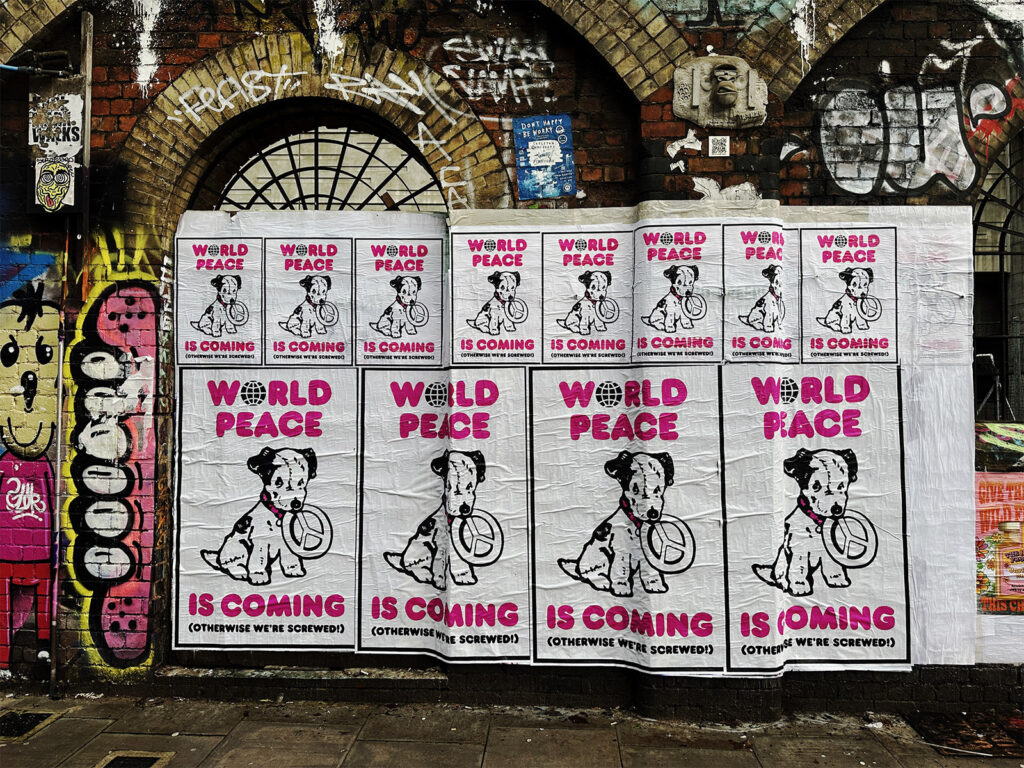

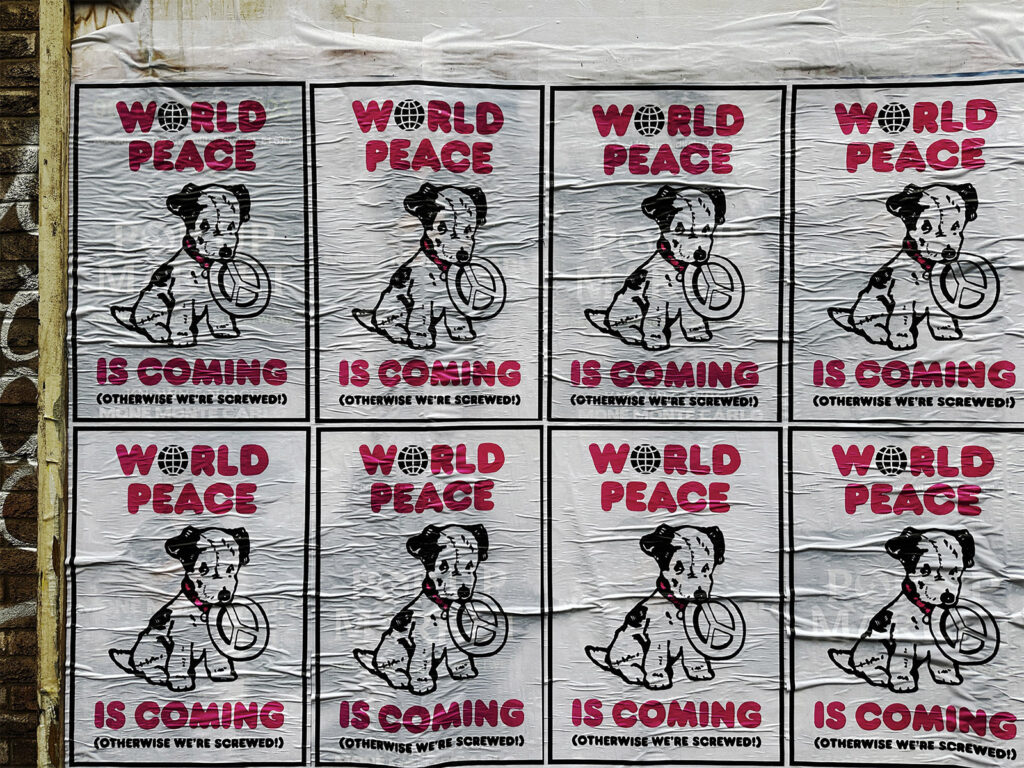

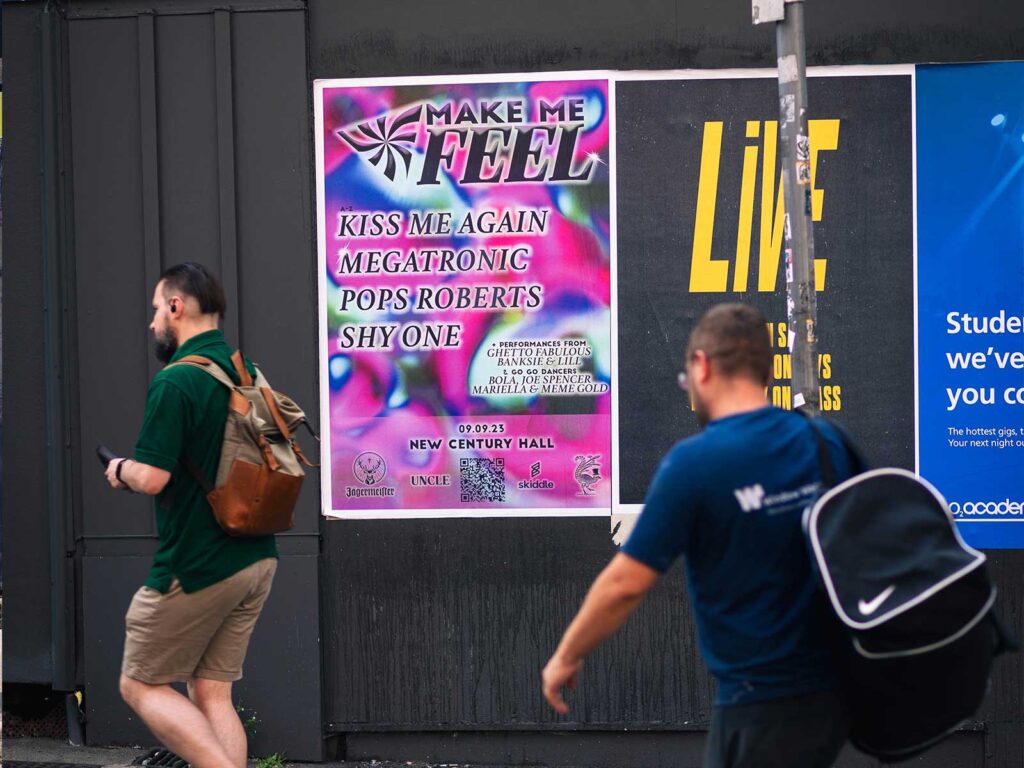
Manchester is home to the powerhouse Feel Good Club, a duo determined to spread the idea of self-love and creativity. UNCLE partnered with them as they undertook their most ambitious event yet, spreading the news of the night across Manchester and other northern regions ahead of the evening. The aptly titled ‘Make Me Feel’ took place at the historic music venue ‘New Century Hall’ and promised to deliver on a club night packed with “self-expression, connection and positivity”.
The stacked lineup sees an inarguable mixture for a good time, featuring Kiss Me Again, Ghetto Fabulous, Pop Roberts, Shy One and Megatronic. Not to mention a plethora of drag acts that will keep tempos high throughout the course of the night. Attendees saw the “party with a purpose” not only create a safe space on the night but also make an impact beyond – a percentage of money from ticket and merch sales went to Mindout Charity, in support of LGBTQ+ mental health services.
Feel Good Club pushed further than they ever have before by curating this event, UNCLE wanted to delve deeper into the why, by discussing conception, direction and just how the purpose of the night plays an important part of what makes it special.
WHY IS THE EVENT NAMED ‘MAKE ME FEEL?’?
Expanding on Feel Good Club. The name came from the idea of dancing as collective celebration and all of the different ways that music can “make you feel”. We want this party to be joyful and celebratory but also cathartic, Make Me Feel represents that.
WHAT DROVE THE DECISION TO EXPAND BEYOND THE TYPE OF EVENTS YOU HAVE BEEN PUTTING ON INTO THIS NEW SPACE?
Feel Good Club is all about making people “feel good” about themselves. We do this through our content, billboards and in our physical space. Everything is created with the aim to bring joy.
We have been running events within the coffee shop space for quite some time and there was a noticeable appetite for something bigger, that goes on a little later. We wanted to create something where we could dive deeper into the nightlife with performance and music married with our brand ethos of creating spaces of connection & celebration.
WITH SO MANY COLLABORATORS ON THE LIST, TELL US ABOUT NAILING THE LINEUP?
The line-up itself was crafted with Feel Good Club’s ethos in mind and we’re so excited for what we’ve created. It feels really special to be able to build and share this space with such an amazing group of artists. It was important that the people on-stage reflected the intentions of this party, authentically and with purpose. We were super excited to blend Manchester club scene heroes with some incredible acts from other places in the UK and beyond.
If you look into what each person on the line-up does for communities, artistically and otherwise, you’ll see that this party is a melting pot of a whole bunch of wonderful and super talented humans.
WHAT IS THE PURPOSE OF THE NIGHT?
To simply fill a room with people to celebrate themselves and each other. A tag line for Make Me Feel is “where party meets purpose”; 50% of the profits made from the event will be going directly to MindOut Charity.
TELL US MORE ABOUT THE ARTWORK?
The artwork was created by using images we’d taken during a promotional video shoot at the venue itself. The purples, pinks, greens and blues were all picked out from colours of the amazing light rig they have there. When people are twirling around on the dancefloor the background of the poster is what they’ll see. The triangle symbol is a riff on the adopted pink triangle symbol of Queer Pride & Power used by trailblazers like Act Up, so that was a nod to Queer History.
HOW IS THIS EVENT TIED TO THE CITY OF MANCHESTER?
Make Me Feel is an extension of the brand and venue that’s born and bred in Manchester so it was only right for our first foray into nightlife to be in our city.
The line-up features some Queer Manchester icons, Kiss Me Again and Ghetto Fabulous for example, who are such rays of light in the Manchester club scene and have really paved the way for a lot of the things you see flourishing here now.
Also, the event is housed in the incredible New Century Hall which has an amazing musical history for Manchester. It’s newly refurbed and reopened so it’s super exciting that we get to bring an event to somewhere that’s featured some absolute legends like Tina Turner & Jimi Hendrix.
We’re so excited for the first one to happen in our home, but maybe we’ll take it further afield in the future.
WILL THERE BE MORE EVENTS IN THE FUTURE?
Without a doubt.

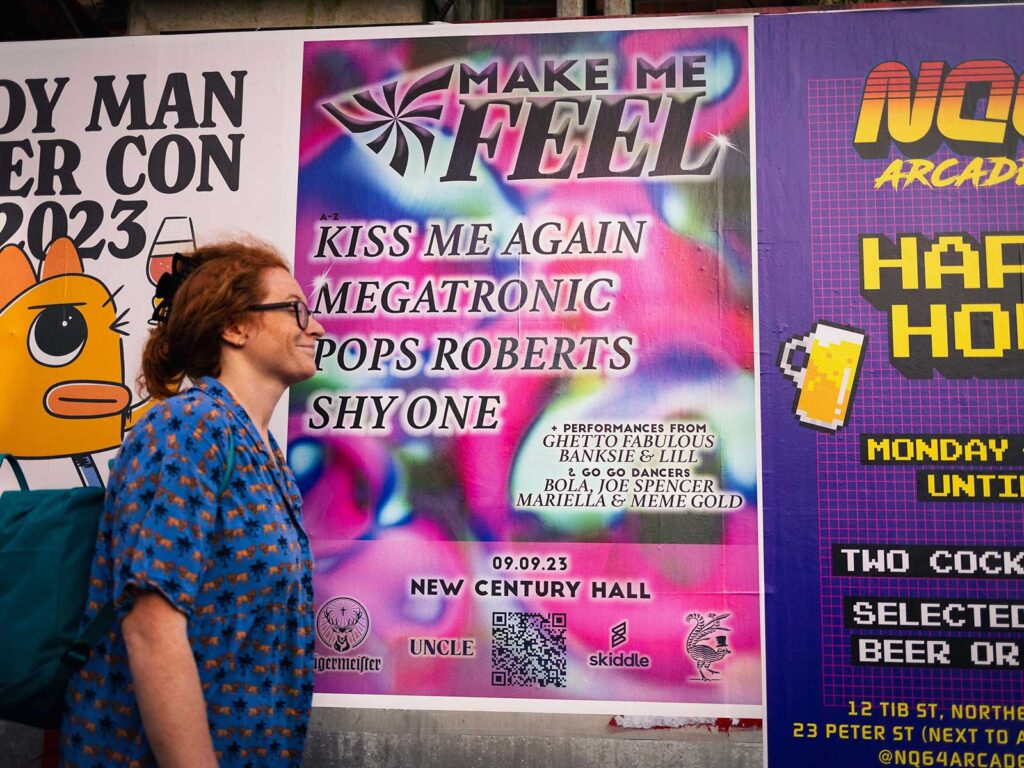


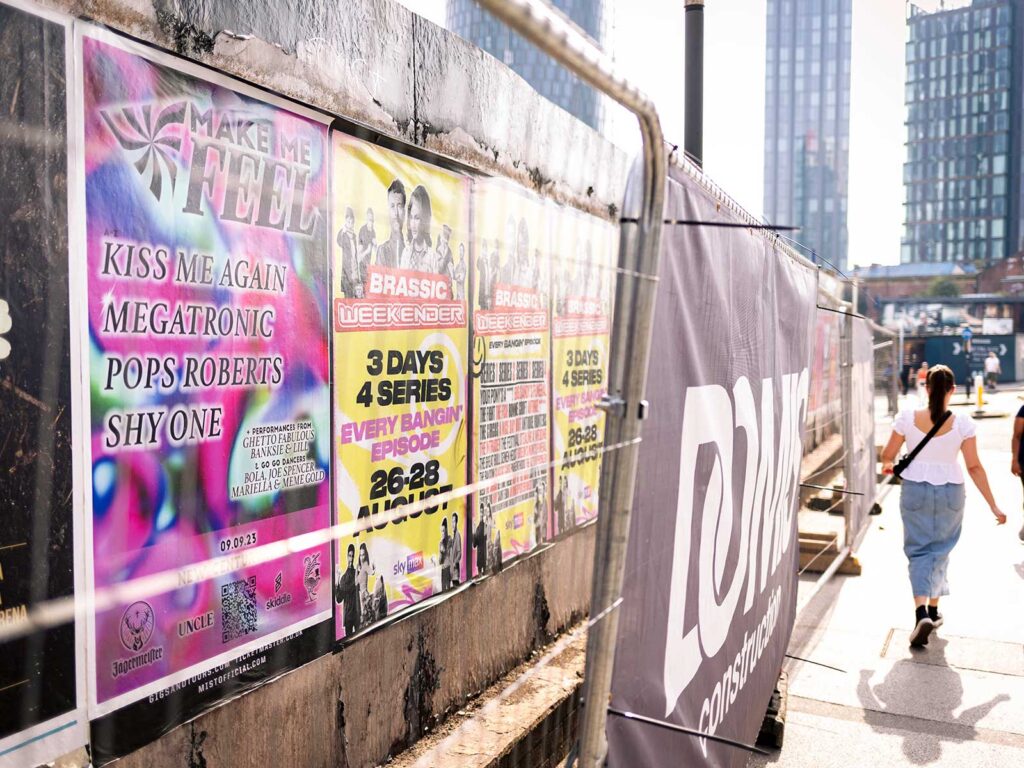
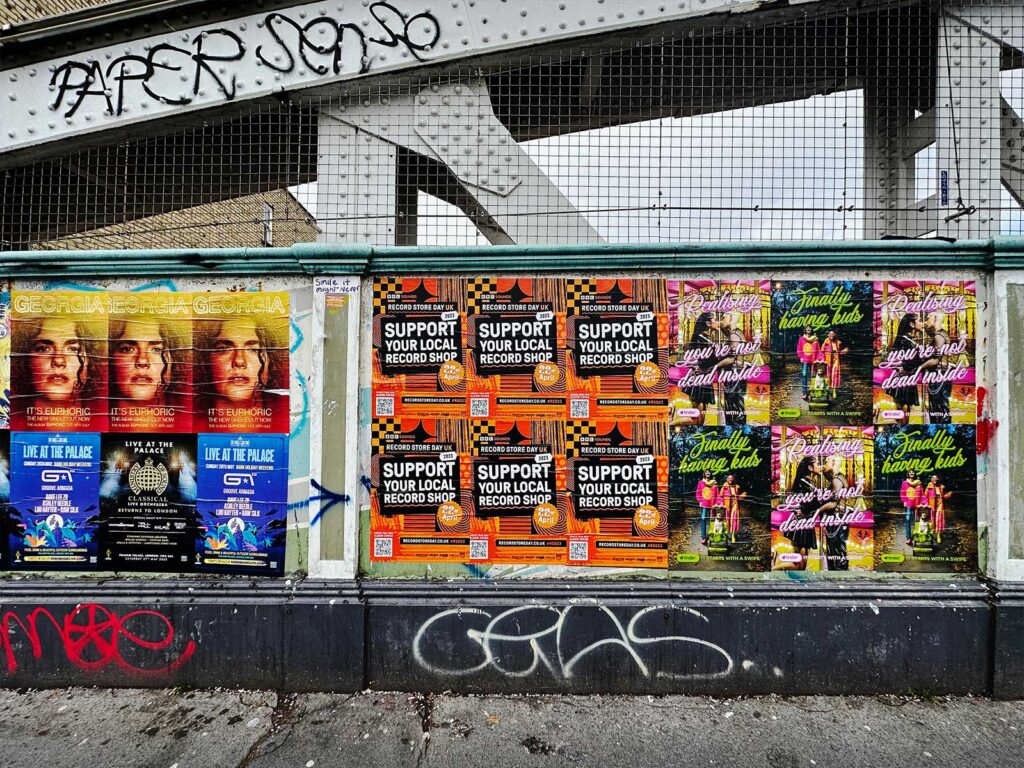
In anticipation of the upcoming Record Store Day on the 22nd of April, UNCLE have partnered with The Digital Entertainment and Retail Association to canvas the UK with artwork marking the events 16th year. The day celebrates independent record stores and the “unsung heroes behind the counter who work hard to keep their doors open every day of the year”. UNCLE thrive when supporting the local communities within our cities, so it was only fitting to make a statement in Birmingham, Brighton, Bristol, Liverpool, London and Manchester.
In the last decade the resurgence of vinyl popularity has been a key moment for music history and Record Store Day has been recognised as one of the key driving forces behind this. The day supports, elevate and champions the unwavering resilience and dedication that these stores and their staff have continued to show in times of recent societal adversity. Through both the pandemic and the cost-of-living crisis ingenuity conquered all with staff’s exceptional effort to keep the culture alive. The day itself will see 250 record shops come together in the UK – with thousands more worldwide -to celebrate their unique culture by hosting parties, in-store performances and live events for customers and fans alike. The stores taking part can be located here.
Record Store Day goes beyond vinyl; it is at its heart about music culture and how that impacts the heart of its communities. Music is perhaps the universal language; it can bring people together and make a statement as powerful as any other creative medium. Supporting the hubs of its existent ensure longevity for these significant culture markers.
To show solidarity with the beliefs behind the day, hundreds of artists have swarmed to show their support. The 1975 taking the mantle of 2023’s ambassadors and frontman Matty Healy has been vocal about their involvement – “The guys and I are really proud to be ambassadors for Record Store Day this year. Independent record stores are the lifeblood of the music industry and have played a crucial role in our story so far. It couldn’t be more important to support their vital community and culture.”. Hundreds of exclusive, special releases from artists including Elton Jonh, The 1975, Taylor Swift, Pixies, Madonna Yard Act, Greentea Peng, NAS and Blur will be available at partaking stores to celebrate the event.
Twitter:@RSDUK / Facebook:@RSDayUK / Instagram:@recordstoreday/ TikTok: @recordstoreday

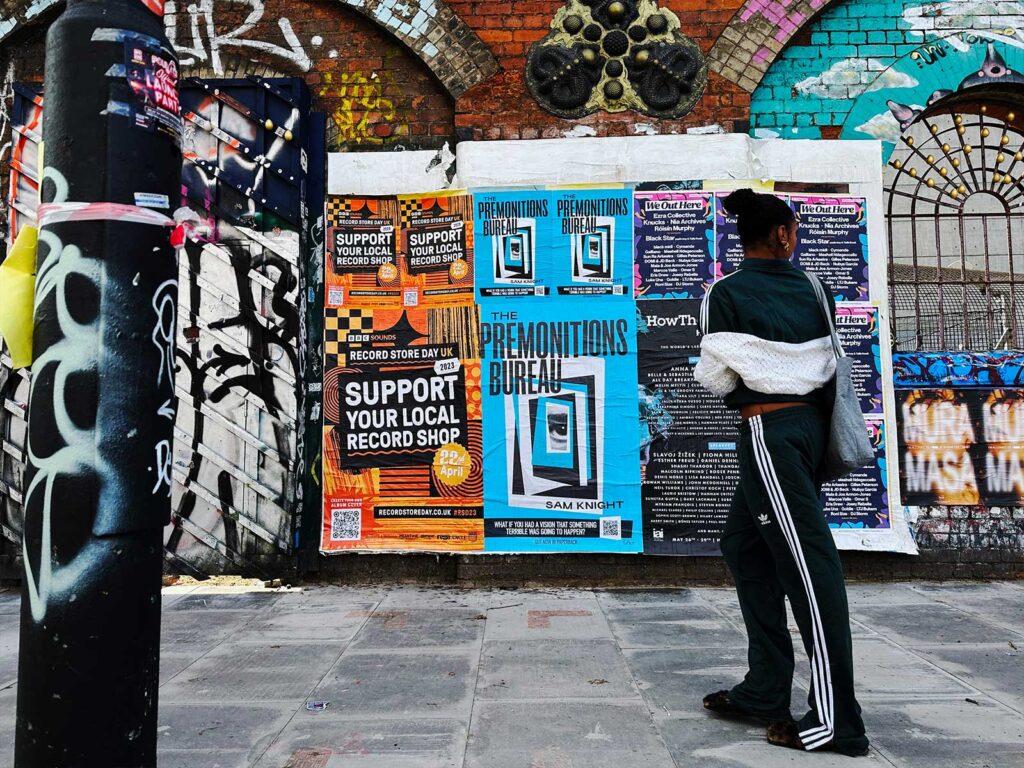
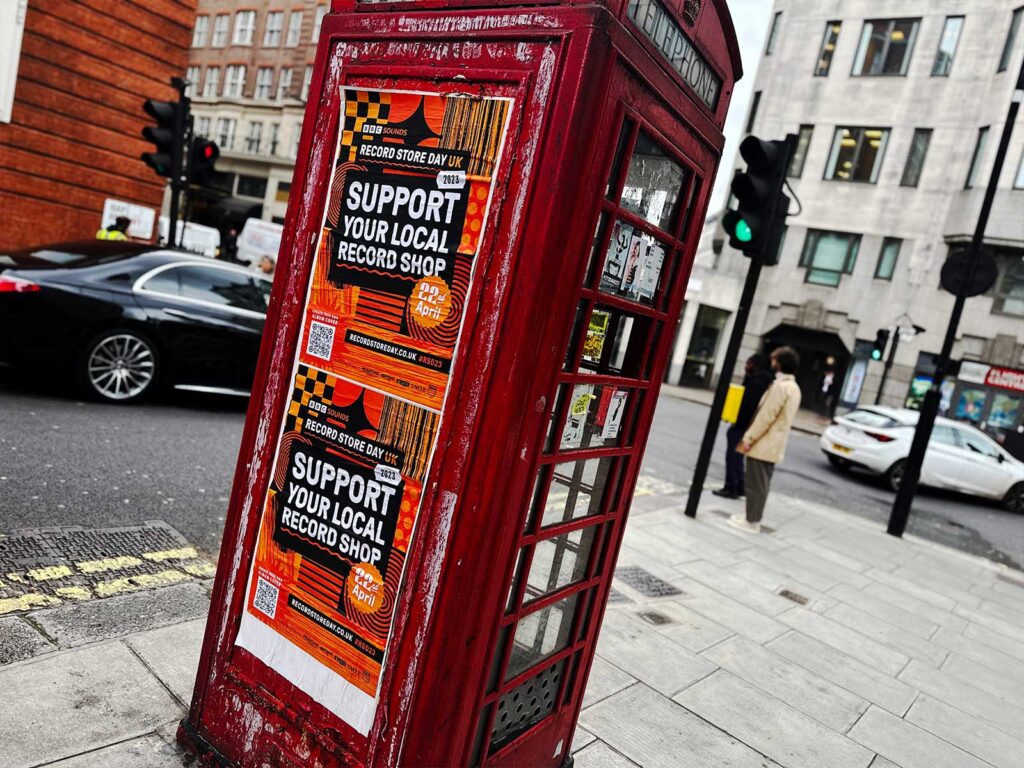
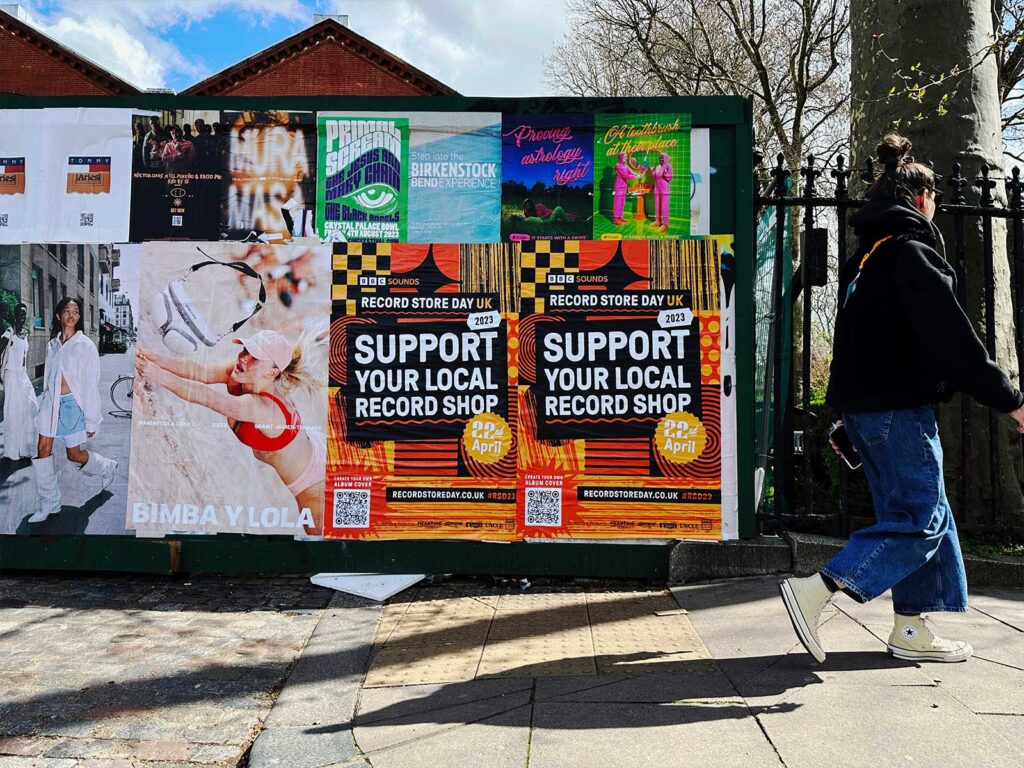
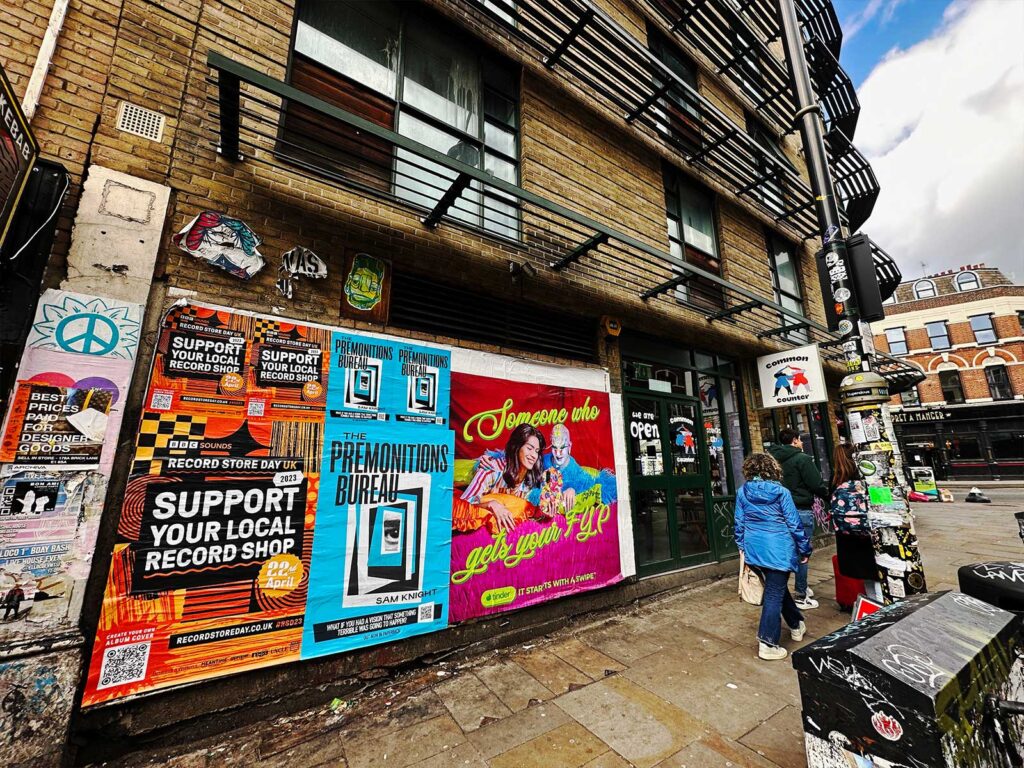
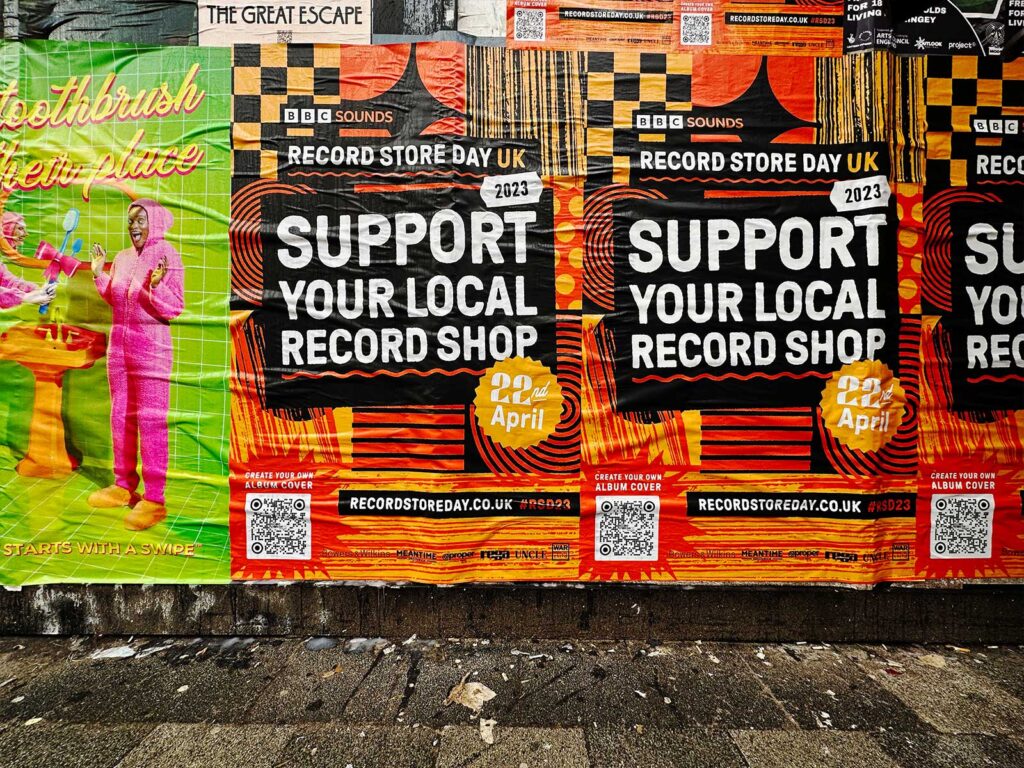
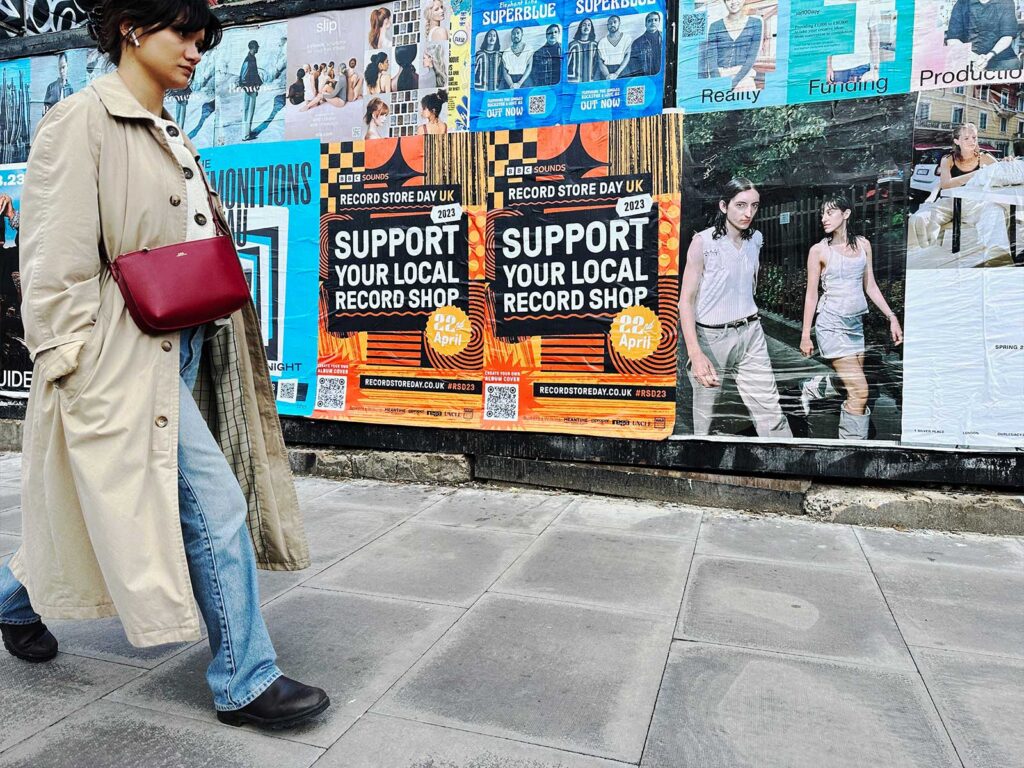

Acclaimed artist Aida Wilde is no stranger to speaking her mind, her name being synonymous with bold and pointed slogans that sum up the world she sees around her. For International Women’s Day UNCLE collaborated with Aida to get the powerful piece she designed in front of eyes across the UK.
Wilde is a multifaceted creator most prominently known for her screen-printing, but she also creates in many different mediums including printmaking, street art, installation and murals. Her pieces are responsive to issues surrounding politics, gender, education, gentrification and equality and have been displayed internationally at venues like the Victoria & Albert Museum, Women’s Art Library, Goldsmiths, Vienna’s Fine Art Academy, Somerset House, the Fitzwilliam Museum, and Saatchi Gallery to name a few.
The artwork for this collaboration was designed to somewhat be a homage to Wilde’s Iranian heritage, being born there and later fleeing to the UK during the war. This experience is unfortunately not a unique one, with so many women being affected in similar ways, and many still facing extreme oppression in the country itself. The slogan featured on the piece promotes both reflection and action – “Power rarely falls within the right hands”; “If you only knew how exhausting it is to be powered by rage”; “There can be no Gods walking among us.”.
Aida has been active since 1993 and is disruptive in a world that didn’t always treat her fairly. Her womanhood never defined her, but it certainly informed her experience and as she looks back, she can see the true impact it had on her journey. We discussed this and her artistic beginnings, experience in the field and the importance of the work she does.
WHAT ARE YOUR MAIN INSPIRATIONS AS AN ARTIST?
When I was at university, I stopped reading magazines and most newspapers. You’re taught to follow trends and fashion and keep up to date, so I consciously decided not to do that. I’ve shut myself off from media, the only thing I really look at now to inspire me sometimes is what’s trending on Twitter. I make a conscious decision not to follow anyone trendy or upcoming, any painters and printmakers, I just don’t want that to cloud whatever vision I get. I want everything to be very organic. Even if I have seen something and it does influence me, I’ll know that I wasn’t looking at that certain artist or that certain thing. Most of my inspiration comes from the past, be it archives and looking at political posters, fine art prints and what occurred before us. There’s nothing new – I believe you can’t do anything original, so I think for me to look in the past and bring a sort of a fresh perspective onto things, that’s what inspires me.
WHERE DO YOUR ICONIC SLOGANS COME FROM?
I’m a bit dyslexic so the majority of my better-known slogans have always come from me reading something wrong, like whether I stumble across a newspaper headline passing by and I’ve read it wrong, replaced one word with the other one and think it makes so much sense. A lot of the slogans come to me like a whisper or a dream, it’s really strange, then you get this compulsion that you can’t stop and then you need to just create that piece of work. I write a lot of notes, sometimes one word just comes into my head and it’s perfect, these notes trickle down to what becomes either pieces in my graphic design or work on the street.
WHAT IS IMPORTANT TO YOU ABOUT YOUR ART?
I’m not here to please everybody but I think what I do is for everybody. I like to think that it is for a collective consciousness. I don’t over complicate the visual language so anyone can just stand in front of it and understand. That’s the main thing, if people understand it straight away it means maybe we could all relate to each other and it could be talked about, shared and understood. I don’t like overcomplicating things; accessibility is so important when it comes to art especially in the age where people want to overcomplicate. Yes sometimes, it’s fun to dig deeper meanings but you know so many messages are overdesigned.
HOW DID YOU COME TO SCREEN PRINTING AND WHY IS THAT SOMETHING THAT YOU WERE DRAWN TO?
At school I was doing art, but I wasn’t very good, I just had a really strong desire to do it. I was good at other stuff like business studies, and I think that’s really helped me with my career understanding economics and things like that. Some of the other kids used to be able to screen print by stencilling and I was just so envious. Then when I turned 17, I was trying to do it by myself, and it just wasn’t working. I then started to do my foundation course in art and design, and they had a screen-printing facility and me and my best mate who I still collaborate with went into this screen print room. My work was photography based, I still loved photographing things and blowing them up and collaging them. I transferred all my photographs onto the screen and literally my work changed within a week. At my first crit showing the prints I always remember the teacher who said, “Oh my God, I think you found what you’re meant to do” and I think I was always meant to do it.
WHAT WOULD YOU SAY IS YOUR FAVOURITE PART OF YOUR CREATIVE PROCESS IS?
I can tell you what my least favourite is cleaning screens, it’s so boring and I’ve got to clean this screen today and expose something, you know it’s those labour things. But I always wanted to be self-contained, to be involved from the beginning, the idea conception, making the artwork, printing/painting with the screens – so I’m all in one. So much labour goes into screen printing, the hours of just stripping screens, coating screens, cleaning exposing, touching up you know and that’s just for one piece.
I love that sometimes you could look something up digitally, choose your colours you want, but it can all change once you start physically laying down those layers and how they interact with each other. I love that process; I like how one layer sometimes dictates your next layer. It is all so satisfying in the end.
HOW HAS BEING A WOMEN IN THE CREATIVE SPACE CHANGED FOR YOU OVER THE YEARS?
I started with slogan T-shirts, and they always used to be a bit angsty, that’s how they started out, it just felt like a natural thing. When the credit crunch hit, and I had to close my shop, I started doing more political stuff. At that point I met a lot of street artists as they were up and coming and I was printing for them as well as my own. It was like the beginning of something, and a couple of the guys said I had something to say and that I should put some work up in the streets. Later around 2008, an East End gallery approached me who’d seen some of my artwork on T-shirts and said have you ever thought about doing these on paper- as editions and Its many years later that I realised I’d been using my talent and my gift to serve the men I was working with – and this went on for many years. I was printing for everybody and as I began to rise slowly, I started noticing the minute that I was doing well for myself – I was doing more installations and more international shows, this balance was shifting in the way they perceived me. I didn’t realise for how many years I was desexualising myself to keep my integrity and reputation intact. I just became this little tomboy in a hoodie, I kind of lost myself and I think it was this realisation of yes you empowered me to do this but at the same time I’ve completely lost track of who I am and how I am seen as a woman. I pulled back, stopped most of my printing for men and set those boundaries, and after years of collaborations, they all dispersed. I think that’s when the penny dropped.
HOW HAS BEING A WOMEN AFFECTED YOUR ART?
Women especially overcompensate I think, we know that sometimes we have to work twice or three times harder than men. So, I used to over produce just to compensate and demonstrate my productivity. I suppose I lost my trade but there was a point where I questioned – is the process fulfilling enough for me? The making process is a form of therapy, it’s a form of escapism and it’s a form of me trying to prove myself to something. I don’t even think I’m proving anything to myself anymore, I think I’ve done that. Not deviating from my vision, keeping my integrity and having a big voice and not compromising has given me the freedom to what I am able to do today – but this obviously comes with heavy price.
FEMALE ARTISTS YOU LIKE AT THE MOMENT?
Sarah Lucas has just created a show Big Women in Colchester, where she’s focusing on heavyweight, mid-career female artists. I love that she has brought attention to talented women of a certain era/age with this curation, as we all know, the shift in attention and current artistic opportunities are very youth and style orientated or on the other side, the forgotten/undiscovered, dead/dying female artist. What happens in middle… nobody knows?
HOW HAS YOUR HERITAGE AFFECTED YOU?
I’ve obviously come from a political background; my father was a sort of government figure, and we got political asylum because my dad was murdered by the government not long after the 1979 Iran Revolution. I’d love to go back to Iran; I’d like to see my dad’s grave. But I’m so proud of Iran, when you think about the state of the Middle East and Middle Eastern men and how most of them are portrayed as being misogynistic. The Iranian men have really shocked me standing there with the women shoulder to shoulder willing to risk everything in the recent uprising/revolution. We also need to focus on these men that are standing fighting alongside the women and being killed. I’m just sad I’m not a bigger part of it.
TALK US THROUGH THE DESIGN OF THE WOMEN’S DAY POSTER?
I deliberately wanted to make it feel like a throwback to a 60s or 70s political graphics, and knew I wanted to do a collage as this is how most of my work starts, so I cut things up at the beginning of the screen-printing process. The hands are mine, my mum’s and my two sisters one of them being (Ziba Karbassi) she is a really great eminent Iranian poet so she’s the one holding the little quill in her hand to symbolise the liberation that a pen/writing can do for us (especially when you think about the banning and the weaponization of an educational rights to girls and women of Afghanistan by the Taliban currently). The rage slogan was an angry day, and it came to me in an instant, like a flash and I literally stopped what I was doing and scribbled it down on a piece of paper. Then that night I storied it and right away it blew up. So many people wrote to me saying you’ve nailed this. The background of the artwork consists of a list of names of all the women that have been killed in Iran from the current uprising since the murder of Mahsa Amini in September 2022 – December 2022. Accessing current and correct information is quite complex – the figures are much higher than what we could find but at least, this piece can take the anonymity out of some of these brutal killings. The names are falling and rising in a ghostly stream from the poppy fields at their base – honouring and humanising the countless women and girls lost to this ongoing state-sanctioned femicide.
Controversial as this slogan ‘There Can Be No Gods Walking Amongst Us’ can appear to be interpreted, it is a direct reference to Iran’s autocratic ruling – to imply that if we want to achieve equality as humans, NO ONE is above anyone. The same implication goes into the other words on the right plinth states: “Power rarely falls within the right hands.”
Sigh / 15 / Revolution
“From everyone/ more than everything/ From all/ More than everyone ever/ I believe in my own chest/ In the moment of the bullet.
Poem by Ziba Karbassi
Translated by Ziba Karbassi and Nazlee Radboy


